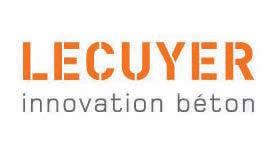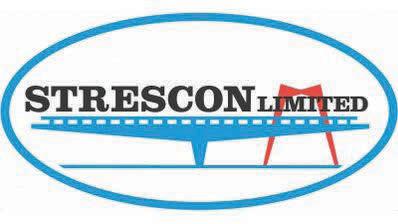


Improving a Niagara Region water intake facility


PFAS concerns shape Quebec’s new biosolids code



Studying pharmaceutical levels in wastewater and biosolids




Improving a Niagara Region water intake facility


PFAS concerns shape Quebec’s new biosolids code



Studying pharmaceutical levels in wastewater and biosolids

odour and corrosion in






























Sewage sludge dewatering offers a wide range of potential savings for operators of wastewater treatment plants. The cost of transport and disposal of dewatered solids can amount to as much as 80% of the operating costs of mechanical dewatering. Since dryer solids result in less volume for disposal, the decision to invest in an efficient, reliable and, above all, peakperforming dewatering system is critically important to reducing operating costs.



“The Flottweg centrifuges and the dryer biosolids they produce have saved us about $900,000 annually. Our plant was able to incinerate the dryer sludge without the aid of natural gas, which equated to our high savings. The Flottweg centrifuges also produce cleaner and more consistent centrate.”
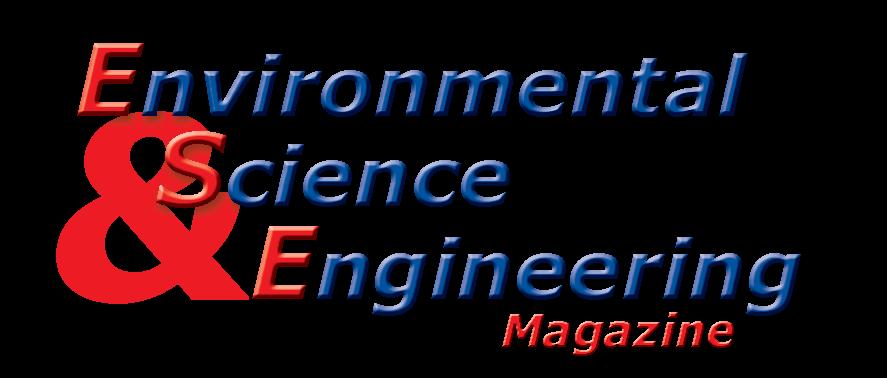
Editor and Publisher STEVE DAVEY steve@esemag.com
Managing Editor PETER DAVEY peter@esemag.com
Contributing Editor DAVID NESSETH david@esemag.com
Sales Director PENNY DAVEY penny@esemag.com
Sales Representative DENISE SIMPSON denise@esemag.com
Accounting SANDRA DAVEY sandra@esemag.com
Design & Production MIGUEL AGAWIN miguel@esemag.com
Circulation BRIAN GILLETT ese@mysubscription.ca
Archis Ambulkar, Toledo Technology Academy of Engineering
Gary Burrows, City of London
Patrick Coleman, Stantec
Bill De Angelis, Metrolinx
Mohammed Elenany, Urban Systems
William Fernandes, City of Toronto
Marie Meunier, John Meunier Inc., Québec
Tony Petrucci, Black & Veatch
Environmental Science & Engineering is a bi‑monthly business publication of Environmental Science & Engineering Publications Inc. An all Canadian publication, ES&E provides authoritative editorial coverage of Canada’s municipal and industrial environmental control systems and drinking water treatment and distribution.
Readers include consulting engineers, industrial plant managers and engineers, key municipal, provincial and federal environmental officials, water and wastewater plant operators and contractors.
Information contained in ES&E has been compiled from sources believed to be correct. ES&E cannot be responsible for the accuracy of articles or other editorial matter. Articles in this magazine are intended to provide information rather than give legal or other professional advice.
Canadian Publications Mail Sales Second Class Mail
Product Agreement No. 40065446 Registration No. 7750
Subscription Changes?
Please email reader subscription changes to ese@mysubscription.ca, or call 705-502-0024
Advertising Penny Davey
Sales Director 416 807 3812 penny@esemag.com
Denise Simpson Sales Representative 905 960 4064 denise@esemag.com
Environmental Science & Engineering
220 Industrial Pkwy. S., Unit 30 Aurora, Ontario L4G 3V6
Tel: (905) 727 4666 www.esemag.com
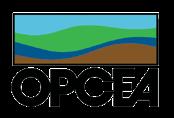

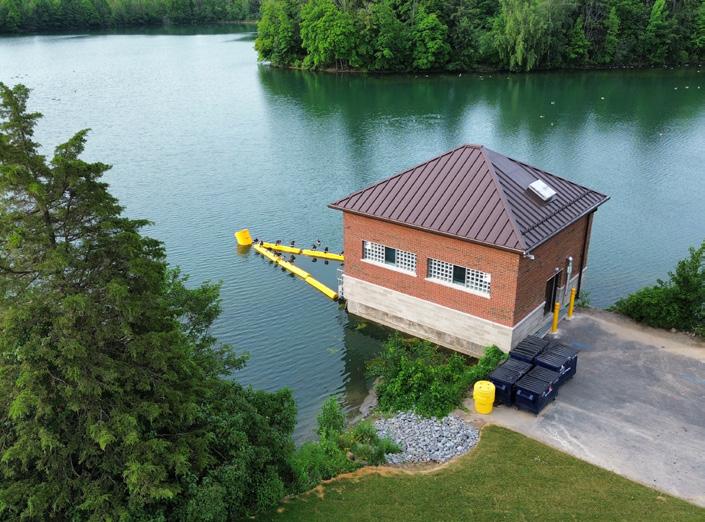

6 Remembering Peter Laughton: Engineer, mentor, friend and champion of the wastewater industry
8 Improving debris management at a Niagara Region raw water intake facility
10 Northeast Regina stormwater system improvement project well underway
14 Revolutionizing effluent pond sediment surveys with underwater acoustic sonar
17 Understanding power generation fundamentals for water utilities
20 New funding supports Winnipeg’s North End biosolids facility and algal bloom reduction projects
22 Swedish study spotlights THM cancer risks
24 Water use audits can reduce consumption, increase capacity and reduce costs
28 The Gordie Howe International Bridge project required precise measurements, mapping, and data analysis
30 How do you make the right choice for wastewater disinfection?
32 Monitoring temperature is critical to ensuring the integrity of Arctic sewage lagoons
36 The growing use of above ground pump stations
38 Transporting dewatered sludge over long distances
40 Canada signals move toward banning some PFAS uses
42 Halifax Water working with city, province to ‘formalize’ approach to alerts
44 Restoration project ensures wetland can mitigate the impact of rainfall and runoff
45 London begins flood protection work for two wastewater treatment plants
46 Upgrading process piping systems at Toronto’s Highland Creek WWTP
48 What to consider in selecting the right isolation valve for municipal water solutions
50 PFAS concerns shape Quebec’s new biosolids code
52 Modified hydrothermal liquefaction removes PFAS from wastewater
58 The role of chemical monitoring for water fluoridation
60 Studying pharmaceuticals and personal care product levels in Canadian wastewater and biosolids
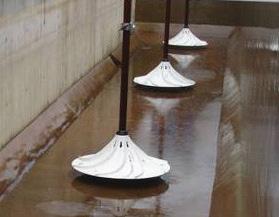
Are The Exclusive Suppliers
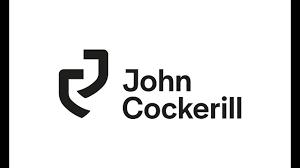

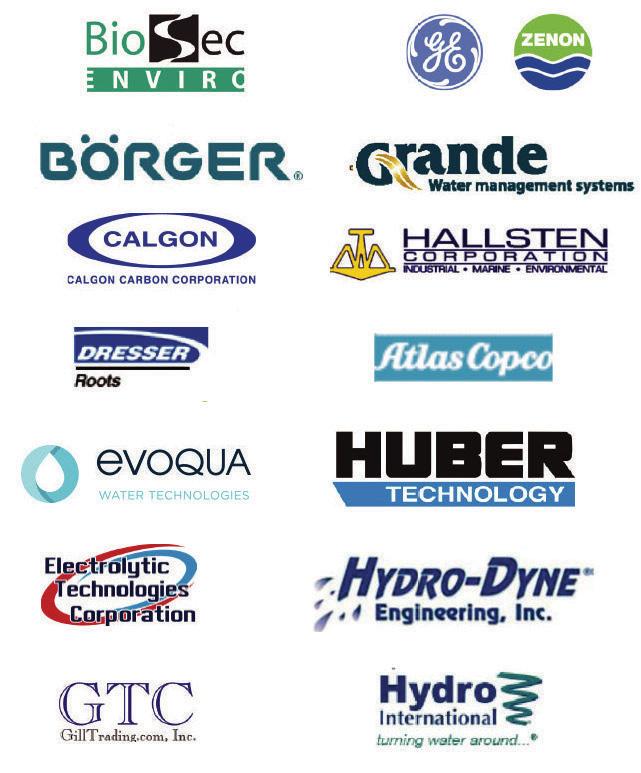






Pro Aqua, Inc. ca rr ies a co mpl ete range of market leading and innovative products. Let us show you
Providing treatment solutions for more than 30 years.
• Archimedes Screw Pumps
• Screens – Multi-Rake, Perf Plate, Drum, Travelling Band, Step, Climber, Vertical Pump Station Screens, Screenings Washer /Compactors
• Grit Separation, Washing & Dewatering
• Conveyors – Shafted & Shaftless Screw, Belt




• • Disinfection – UV, Ozone
• Tertiary Filters – Travelling Bridge, Disk, Membrane
• Sludge Thickening & Dewatering –Disk Thickener, Gravity Thickener, Filter Press, Screw Press, Centrifuge


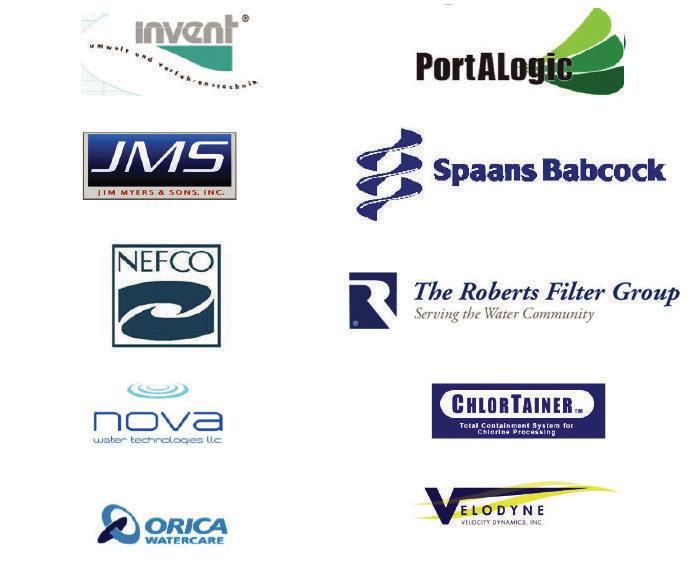

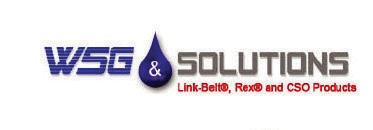

• Blowers – Rotary Screw, Rotary Lobe, Single Stage and Multistage Centrifugal, Turbo, Integrally Geared, Advance Control, Rebuilds
• Aeration – Surface, Membrane & Ceramic, Fine & Coarse Bubble, Gas & Liquid Cleaning, DO Control, AlphaMeter
• Mixers – Anoxic & Swing Zones, Sludge Holding, Digester; Mechanical, Hydraulic and Gas Bubble
• Tank Components –
Decanters, Swivel Joints, Telescoping Covers, Watertight Doors
• Primary & Secondary, Circular, Chain & Flight, Inclined Plate Settlers, Weir Washing
• Rotary Lobe Pumps & Grinders
• Anaerobic Digesters – Sludge Conditioning, In-line Screening, Degritting, Membrane Gas Holders, Liquid Mixing, Nutrient Recovery
• Sludge Drying – Belt, Fluid Bed and Solar
• Septage Receiving – Screens, Dump Stations, Truck Access & ID, data gathering & equipment control
• Sludge Treatment, Transport & Storage – Cake Pumps, Silos, Sliding Frames, Live Bottom Hoppers, Push Floors, Truck Loading, Alkaline Stabilization
• Odour Control – Tank Covers, Chemical & Biological Treatment, Activated Carbon
• – snoitatS pmuP & retawmrotS ,OSC
Tipping Buckets, Bending Weirs, Flushing Gates, Flow Regulating, Vortex Valves, Storm Screens
• Biological – SBR, MBR, RBC, MBBR, MABR, Oxidation Ditch, BioMag, CoMag Polymer – Liquid and Dry Systems
• Digester Gas – Gas Holders, Gas Conditioning: chilling; compressing; and removal of moisture, sulphur, carbon dioxide and siloxane, complete Co-Generation facilities
It was with profound sadness that I learned that Peter Laughton had passed away. I first met Peter in the mid1970s when he was on the board of the Water Environment Association of Ontario (WEAO) and a partner at the consulting firm R .V. Anderson & Associates (RVA), and I was but a gangly teenager.
Throughout the years since then, the friendship, support and encouragement he showed to my family and I was remarkable. My father, Tom Davey and mother, Sandra Davey, had the pleasure of working with Peter on WEAO’s history book “Recollections” in the mid ’80s and I had the pleasure of working with him on the 30th anniversary retrospective of the Ontario 5S Society in 2013.
Peter started at RVA in 1966 and worked there continuously until he retired as its chairman in 2005. Subsequently, he launched his own engineering firm and didn’t fully retire until 2015. Over his 49-year engineering career, he published and presented numerous technical papers at national and international conferences and wrote for many industry publications, including ES&E Magazine. His numerous awards and recognitions by the wastewater and engineering sectors are a testimony to his dedication and hard work. These include, but are not limited to:
2018 — Appointed WEF Fellow by the Water Environment Federation.
2011 — Recipient of WEAO’s Geoffrey T.G. Scott Memorial Award in recognition of outstanding leadership and inspiration in the water environment industry.
2001 — Inducted into the University of Toronto Engineering Alumni Hall of Distinction.
2001 — Awarded the “Dr. Albert E. Berry Medal” by the Canadian Society for Civil Engineering (CSCE), which is given to a civil engineer who has contributed significantly to the field of environmental engineering in Canada.
1999 — Recipient of the “Freedom of the City of London” (England) in recognition of those who have achieved success and recognition in their chosen field.
1997 — Appointed a Fellow of the Canadian Society for Civil Engineering in recognition of his excellence in
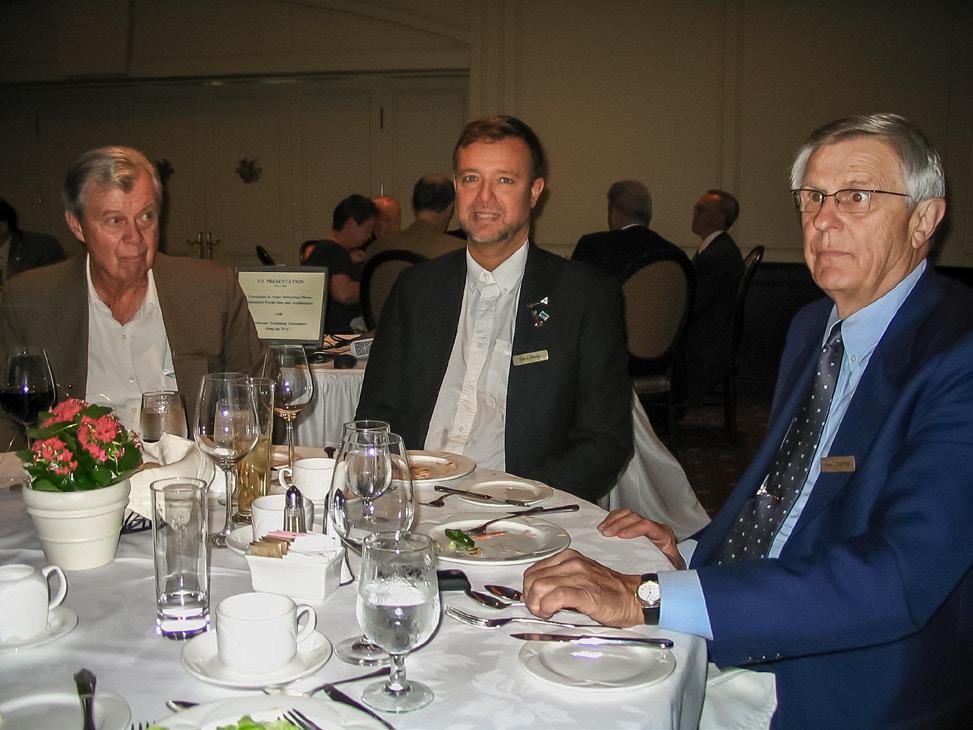
engineering and for services rendered to his profession and to Canada.
I will always be grateful for the assistance and guidance Peter gave us when we launched ES&E Magazine in 1988. From that first year, up until 2006, he was a member of our editorial advisory board. During that time, he also authored many articles for ES&E and encouraged his colleagues at RVA to do so as well.
Even after his retirement, Peter’s regular visits to our office and phone calls to see how we were doing, were much valued, and a testimony to his caring nature. Peter had a profound effect on my career and approach to human interaction. My deepest condolences to his wife, Jane, and the rest of the Laughton family.
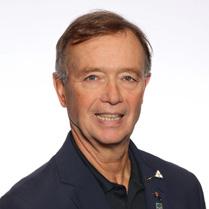
Peter J. Laughton was truly an extraordinary engineer, leader, mentor, friend and champion of the wastewater industry. Thank you, Peter.
Steve Davey is the editor and publisher of ES&E Magazine. Email: steve@esemag.com
In an increasingly complex and demanding world, you must be flexible and prepared to rethink and readjust your goals. We are living in an era of dramatic changes that are taking place in all aspects of society. The sweeping changes in the marketplace are global and they are affecting the everyday lives of us all. The economies of the world are undergoing major transformations.
Peter J. Laughton, address to the 2017 annual luncheon of the Ontario Select Society of Sanitary Sludge Shovelers.




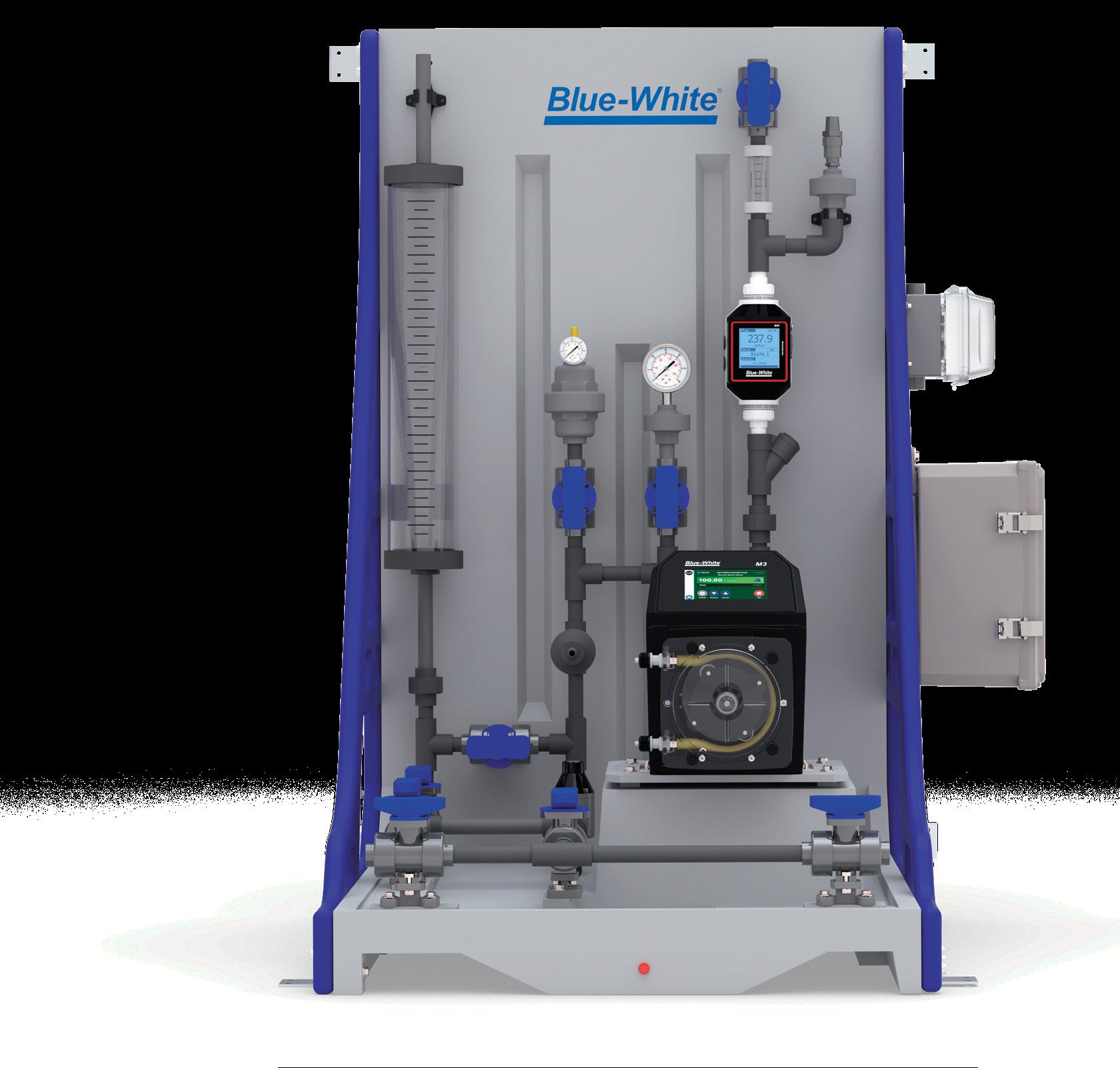
By Kaleb Mudrik and Lindsay Jones
There is a great deal of variability in raw water screening requirements, depending on the source from which a water treatment plant (WTP) acquires its water. In the case of many plants adjacent to large bodies of water, long intake pipes that extend far from shore tend to minimize the debris experienced at the plant.
However, WTPs that draw water closer to shore can be prone to excessive fouling at their raw water intake. This can pose a particular maintenance and operation challenge when seasonal events, such as spring flooding, summer algal buildup and falling leaves in autumn, cause an increase in debris. Ontario’s Niagara Region recently undertook a project to improve the debris handling system at their Decew Falls WTP to reduce this burden on their staff.
The Decew Falls WTP draws raw water from a protected manmade drinking-water reservoir. The reservoir is fed by Lake Erie through the Welland Canal and a manmade raw water channel. The reservoir, canal and raw water channel all feature ample shorelines that produce leaves, logs and other debris, along with the typical algae and sediment.
The plant’s intake building, which was constructed in 1951, is a structure built directly on the shoreline of the drinking water reservoir. A ground-level floor slab provides access to the above-water equipment, while water flows below through two intake channels and a common wet well in the concrete structure. Two 900mm ductile iron pipes, equipped with gate valves, carry raw water north under Decew Road to the main plant property, where a below-grade channel ultimately feeds the low-lift pumps.
The original design of the intake building featured a bar screen at the mouth of each channel to capture large
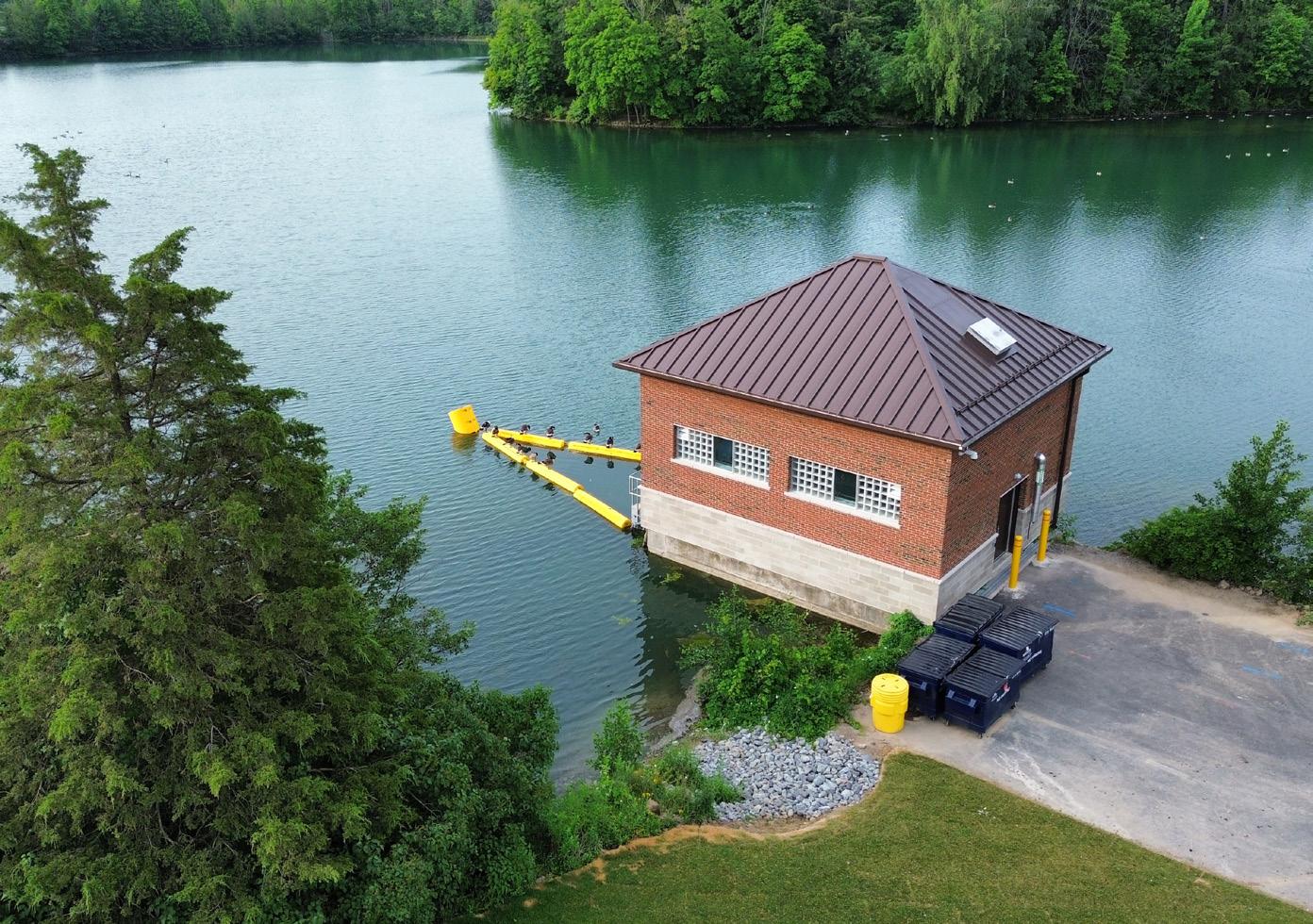
The snowplow-like shape of the floating boom helps to deflect large items away from the water treatment plant's intake.
items before they enter the building. These screens could be cleaned by operators via a rear access platform. However, this task was labour intensive and required operators to work over water.
In order to limit the accumulation of debris on the bar screens, a specialized floating boom was installed in the reservoir around the entrance of the intake channels. It is designed to deflect logs and other large items, minimizing cleaning requirements of the existing bar screens. The screen is fastened to the intake building on both sides and secured in the middle by a submerged concrete block, effectively forming a snowplow-like shape around the intake structure.
Finer debris that is not captured by the new floating boom and existing bar screen is carried into one of two intake channels under the building. Each channel is equipped with a new thru flow travelling screen, which have replaced exist-
ing travelling screens that were nearing end of service. The existing wash-water pump was also replaced to supply high-pressure water to the cleaning nozzles of the new screens.
The thru flow travelling screens consist of a series of overlapping screen baskets fastened to a rotating chain/sprocket assembly. There are 10-mm square openings in the mesh, which allow water to flow easily through the channel while depositing solids into the baskets.
Ultrasonic level sensors upstream and downstream of each screen measure the level differential, which can indicate excessive fouling of the screens. Both screens were integrated into the plant’s SCADA system, allowing remote operation and monitoring of the screens. The baskets are automatically rotated and cleaned with high-pressure water at a regular interval, or more frequently if significant debris causes the level differential to exceed a range set by the operator.
The existing thru flow travelling screens at the Decew Falls facility discharged collected refuse into a concrete trough built into the floor slab. Limited debris storage capacity and unpleasant manual cleaning of the troughs were among the complaints from plant staff. To reduce the frequency and extent of operator intervention, the new thru flow travelling screens are now designed to discharge directly into screening handling conveyors.
Two independent screw-conveyor trains each serve the purpose of dewatering, transporting and depositing the screenings into rolling waste-disposal bins. Operators may now roll the bins to the exterior of the building.
In addition to the process upgrades, the project also included improvements to other elements of the intake facility. All existing electrical equipment was replaced and upgraded as required to meet the new loads, including new panels, disconnects and LED lighting. Existing electric unit heaters were replaced, and a new ventilation and dehumidification system was installed to better manage the moist environment.
Upgrades were also made to the controls and site security system, including installation of a new fibreglass PLC enclosure and updated SCADA software.
Architectural features were also upgraded, including a new peaked metal roof, doors, glass block windows and brick façade, all carefully selected to improve visual cohesion with the main plant’s facilities.
Structural upgrades at the intake building included minor concrete repairs, new ladders, platforms and handrails, as well as new hatches designed to better facilitate future maintenance activities. The project also included decommissioning of nearby valve chambers that were built well over a century ago. Engineered cellular grout was used to fill the chambers, reducing risks associated with the now obsolete structures.
Staff have reported a reduction in manual cleaning of the bar screens and inside
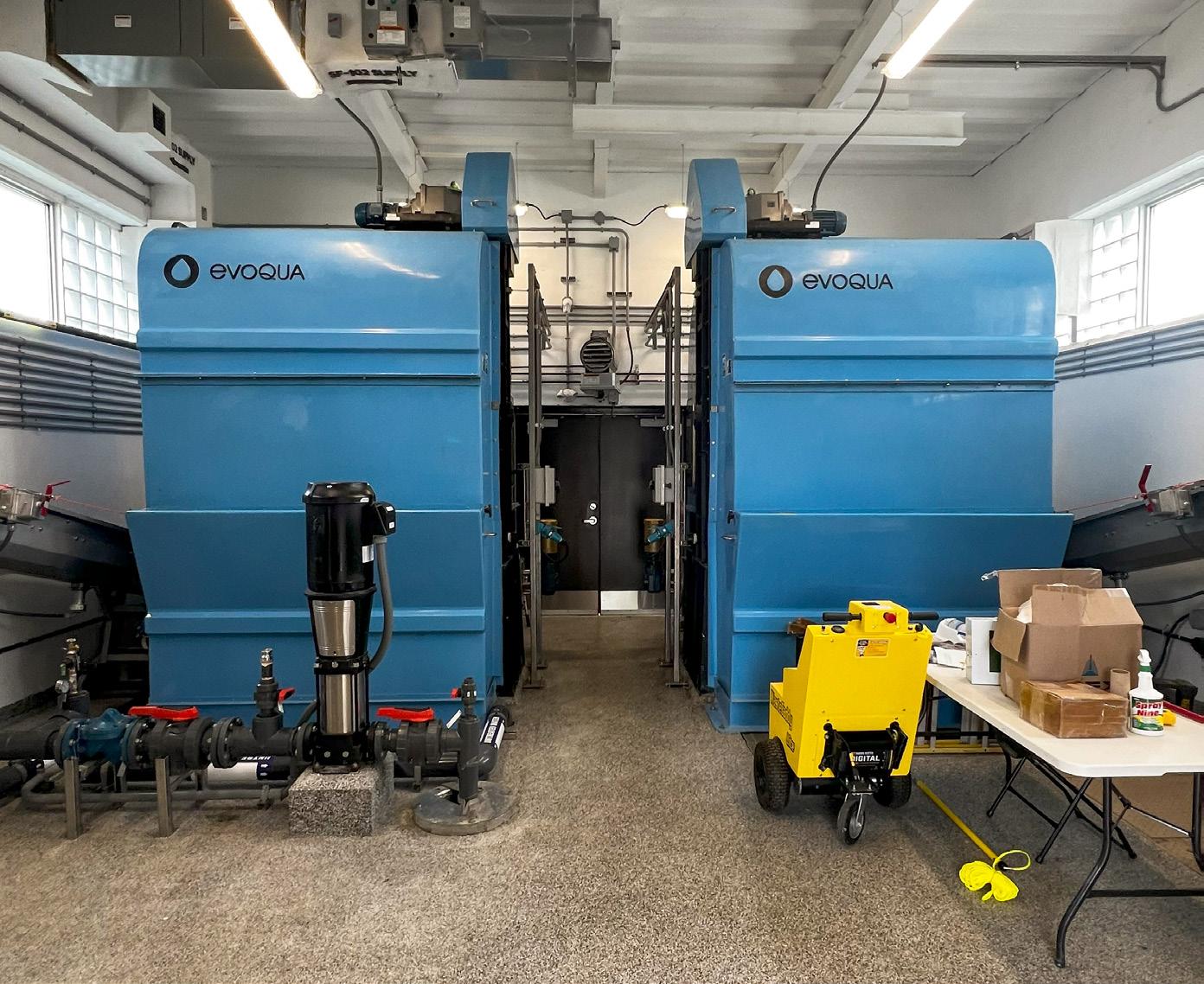


the facility, as well as reduced equipment downtime. Additional instrumentation and integration with SCADA have further led to operators’ confidence in their system and ability to intervene remotely as required.
Construction on the project was completed in the spring of 2024. The general contractor was North America Constructors Ltd. Engineering design and construction services were provided by R.V. Anderson Associates Limited.
Kaleb Mudrik is with R.V. Anderson Associates Limited. Email: kmudrik@rvanderson.com. Lindsay Jones is with Niagara Region. Email: lindsay.jones@niagararegion.ca
By Trevis Hanson
Construction continues in northeast Regina to replace and upgrade the Saskatchewan city’s stormwater system to better handle rainwater and melted snow from a once-in-25-years event.
Home and business owners in those neighbourhoods will appreciate less ponding and a lower risk of street and basement flooding during significant storms, thanks to the City of Regina’s $14 million Northeast Neighbourhood Drainage Improvement Project. The project also aims to improve the management of increasingly severe storm impacts from climate change and reduce the risk of untreated wastewater being discharged into the environment.
AECOM, the engineering consultant for this project, began work in the fall of 2020. The firm’s project team includes key personnel who have been working on the detailed design and construction of city-wide stormwater upgrade projects in Regina over the last decade. The City of Regina manages stormwater with storm sewers that collect rainwater and snowmelt to drain into Pilot Butte, Wascana, and Chuka creeks.
Upgrading the stormwater system in Regina’s northeast required a design that is constructible, cost-effective, low-maintenance, and hydraulically efficient. Like other similar projects, this one required extensive stormwater modeling and simulation, the installation of large-diameter sewers, coordinated crossings of critical city infrastructure, utilities and railway lines to minimize service disruptions during construction, and comprehensive street rehabilitation.
AECOM provided the City of Regina with conceptual design, preliminary design, detailed design, tender preparation, procurement assistance, and construction administration support for this project.
Construction began in 2023 with the general contractor, CBS Contract-

The large diameter sewer pipes are designed to be installed at depths greater than five metres below grade.
ing, using Souris Valley Industries (SVI) to supply the concrete pipe, manholes, vaults, T-risers, and bends required for this project.
“Relying on a local supplier made sense for this project because it makes communicating and collaborating among all the stakeholders during the project easier,” said Toby Hess, AECOM’s project manager.
Construction on this project progresses block by block, with the surface being removed to access the existing infrastructure for removal. New pipe is then installed to replace it. The large diameter sewer pipes are designed
to be installed at depths greater than five metres below grade, ensuring they maintain their structural integrity under significant loads of earth for a long time.
Eric Donnelly of CBS Contracting plans ahead by determining the supplies he requires several weeks in advance. Many of the bigger products are made when an order is placed. For some products not made in regular production, new drawings sometimes need to be produced for an engineer to approve.

SVI then sends CBS Contracting’s order into production, ensuring there is enough concrete pipe, manholes, vaults,
WE HAVE AN EASY
INSTALL A SWM SHIELD TO PRE-TREAT YOUR POND

T-risers, and bends available ahead of when the construction company requires them.
“Producing bends and T-risers is labour-intensive,” said Ryan Watt of SVI. “While pipes can be produced using a concrete form, no such form exists for these two other products, so they require welding and special forming, which adds hours to their production.”
SVI employees check the product to ensure its quality meets standards before arranging for it to be transported. There is very little room for storage at the construction site, because the work is being done on existing city streets, so the products can only be brought in a day or two in advance. SVI ensures the products are transported to the site just in time for installation.
Another challenge of this project involved meeting the depth requirements of Canadian National Railway (CN). A section of the project crossed the railway company’s property. To meet the requirements, AECOM devised an innovative solution. Instead of using only an 1800-mm pipe for that section, two 1524mm casing pipes were installed.
Two 1200-mm diameter PVC carrier pipes were placed within these casing pipes. This approach allowed for stormwater to be received, contained, and funneled where it needs to go while adhering to CN’s depth requirements.
Transitioning from an 1800-mm storm
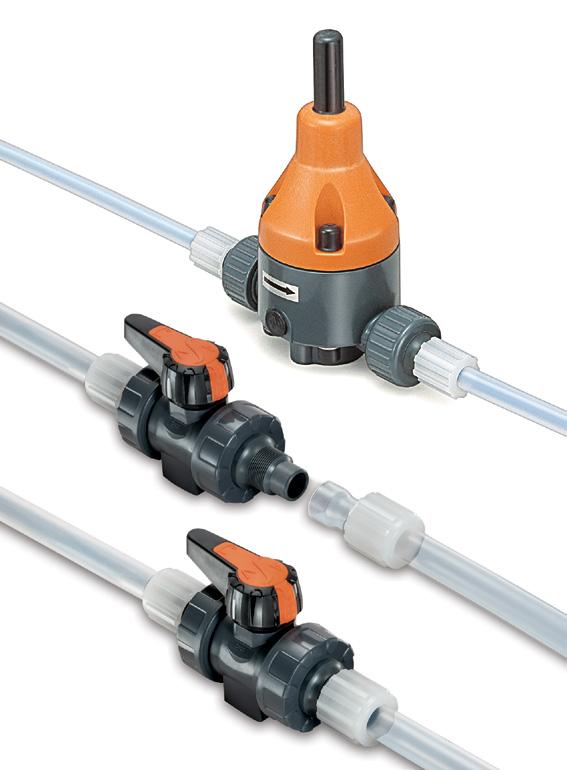

sewer pipe upstream to dual 1200-mm pipes involved installing a 3600-mm x 3600-mm box culvert. The same box culvert configuration was constructed downstream of the crossing. Using dual casings and box culverts was not only compliant with CN’s regulations, but also provided a cost-effective and feasible solution for the stormwater management system.
These box culverts were produced by SVI in Weyburn and transported to
Regina. This product required the creation of a form for the walls of the box. After the concrete was poured, additional work was needed to ensure everything fit properly.
Work continues on this project through 2024, with completion scheduled for 2025.
Trevis Hanson is with the Canadian Concrete Pipe & Precast Association. Email: trevis.hanson@ccppa.ca


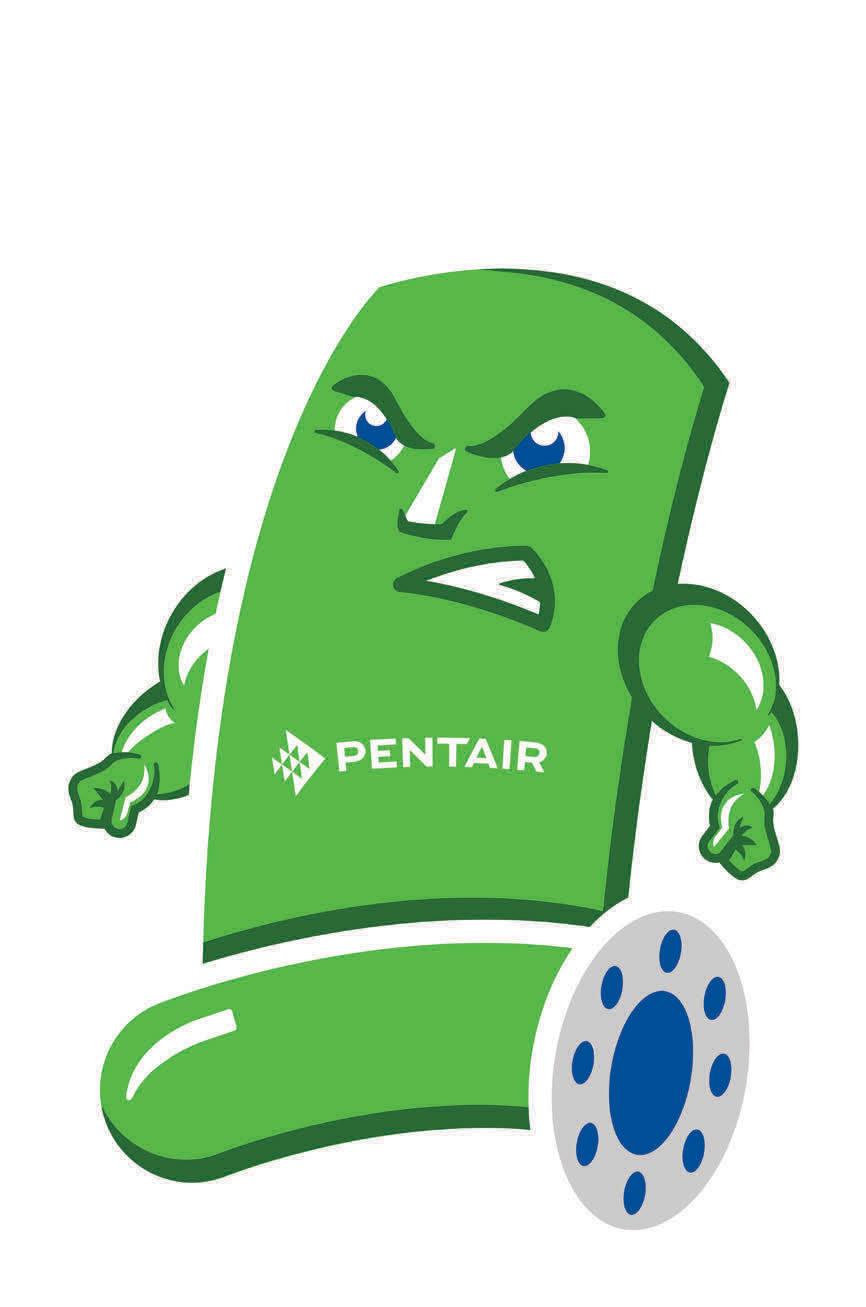
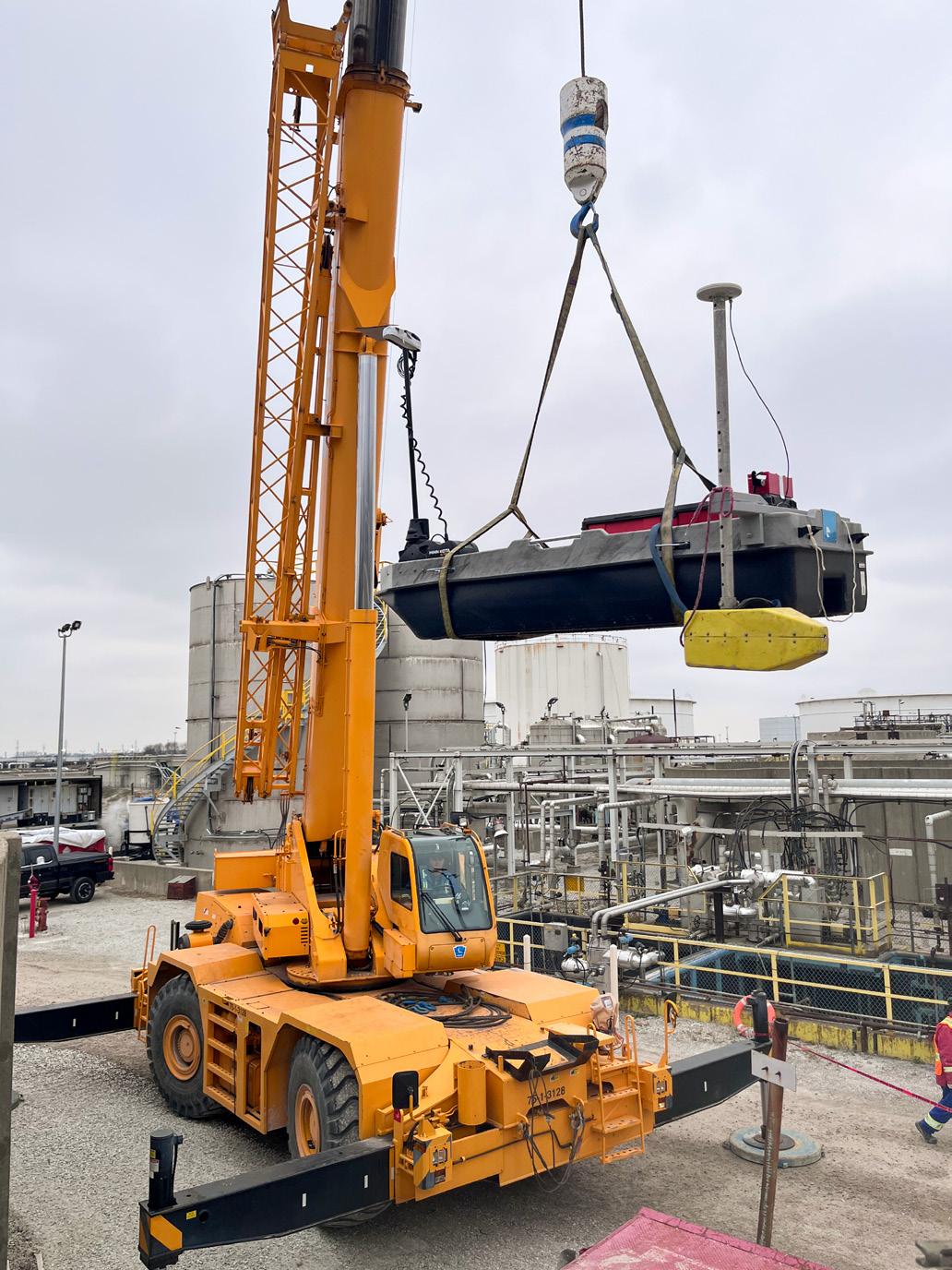

By Paul Makar
Effluent ponds are a crucial component in waste management for industries like petrochemical, oil and gas refineries, mining, pulp and paper, agriculture, hydroelectric power generation and wastewater treatment. However, they often go unnoticed in discussions about technological innovation.
Yet, beneath their seemingly placid surfaces lies a complex world of sediment and sludge accumulation that demands our attention. Traditional methods of monitoring these sediments are labour-intensive, risky, and sometimes environmentally disruptive. Recently though, acoustic sonar sediment remote surveying, a
cutting-edge solution, is transforming how we understand and manage these hidden depths.
Over time, effluent ponds collect sediments composed of organic matter, minerals, and other particulates. This gradual buildup can significantly reduce capacity, affect its efficiency in processing waste, and even pose environmental risks if not properly managed.
Conventional surveying methods often involve manual probing or draining the pond, which are not only hazardous but also interrupt the pond’s operation. Underwater acoustic sonar offers a non-invasive alternative. By emitting sound pulses into the water and analyz-
ing the echoes that bounce back from the pond’s bottom and sediment layers, sonar systems create detailed maps of underwater topography.
Coupling sonar technology with remote survey vessels amplifies the benefits. These unmanned, GPS-guided boats can autonomously navigate across the pond’s surface, collecting thousands of data points efficiently and safely. Equipped with high-resolution sonar equipment, they eliminate the need for human operators to be physically present on the water, reducing safety risks and operational disruptions. Here is how it works.
Deployment — The remote survey

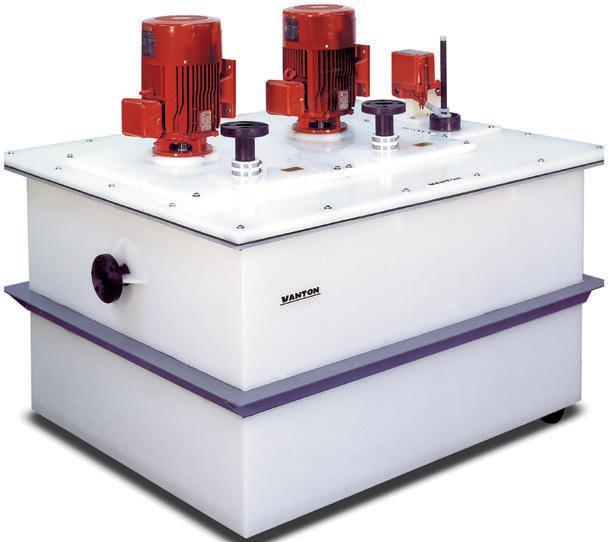
• No Corrosion or Contamination
• No Chemical Absorption or Wicking
• No Tearing, Cracking or Peeling
• No Significant Abrasion
Each Vanton thermoplastic pump features wet-end components that are inert to corrosive chemicals across the full spectrum of pH, will not contaminate ultra-pure liquids, and are also abrasion resistant.
Handling flows to 1150 gpm (261 m3/h) heads to 185 ft. (56 m) and temperatures to 275o F (135o C), Vanton pumps are ideal for:
• Chemical Transfer
• Neutralization
• Dosing
• Effluent Control

• Lift Stations
• Odor Control
• Recirculation
• OEM Applications
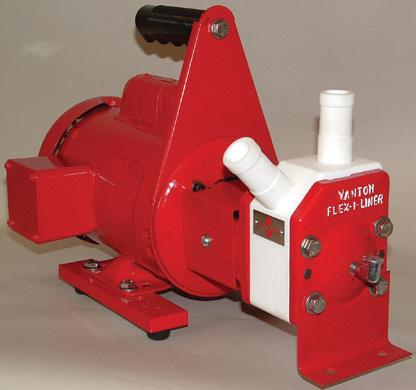
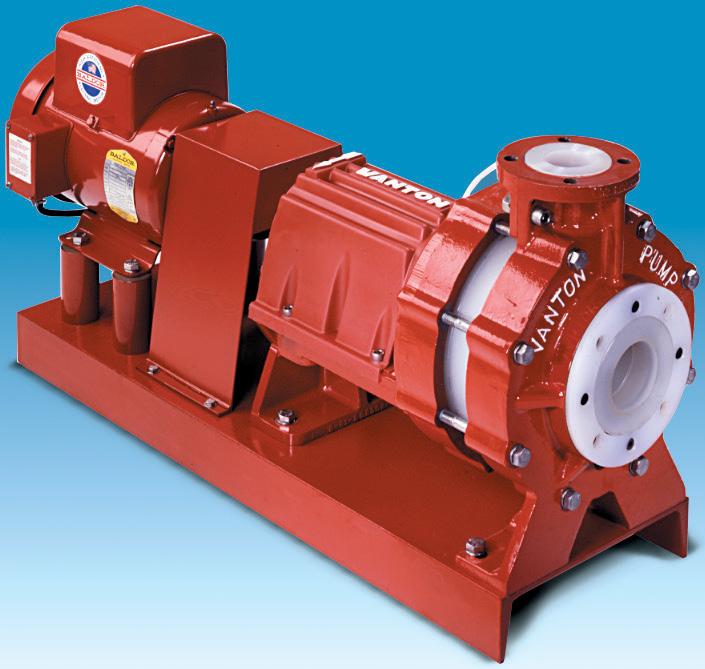
vessel is released onto the ponds and open top clarifiers often by a crane, since vehicle access close to the water edge may be very restrictive. Once the vessel is on the pond’s surface the navigation is either guided by pre-programmed navigation paths or controlled remotely.
Data collection — As it glides over the water, the remote vessel’s sonar system emits acoustic signals downward. These signals penetrate the water column, reflecting off different layers, most notably the sediment-water interface. Remote survey vessel GPS tracking in real-time on the pond is seamlessly integrated with the sonar data, that is collected and stored in a powerful computer system. This sonar computer system is located on the survey vessel in a water-proof housing secured to the hull.
Utilizing radio frequency, the sonar and GPS data can be sent from the survey vessel's onboard computer system to a computer system onshore, for the sonar specialist to review. To ensure adequate survey coverage, especially on large ponds, survey vessel tracking, which incorporates location and speed, is scrutinized closely.
Data interpretation — The time it takes for the acoustic signals to return is meticulously measured. Differences in return times and signal strengths help determine the depth and density of sediment layers. Multiple transducers of different frequencies are utilized to create a more effective and accurate sonar system.
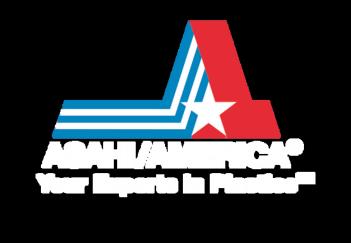
By embracing this technology, industries can make informed decisions that promote operational efficiency, regulatory compliance, and environmental protection.
The low-frequency transmitter (50 kHz and below) emits sound waves that can penetrate deeper into the water and sediment capturing the pond's sub-bottom or its “liner” i.e., clay, riprap, concrete contour profile. Medium-frequency transmitters (83 kHz to 160 kHz) offer a balance between depth penetration and image resolution. They can cover a wider area and provide more detailed information than low-frequency transducers.
High-frequencies (200 kHz and above) emit sound waves with shorter wave lengths, resulting in more detailed pond sediment mapping of the bathymetry or the top of the sediment layer.
Utilizing a specific configuration of transducers specifically engineered for shallow depth effluent ponds and open top clarifiers helps to validate bathymetric and sub-bottom sediment depths and ultimately the total sediment volumes when further data processing is completed.

Mapping and analysis — Collected data is translated into vivid, three-dimensional maps and cross-sectional profiles of the pond’s sediment deposits. Advanced software allows for real-time visualization and analysis.
This approach removes personnel from potentially hazardous environments, minimizing the risk of accidents. Surveys can be conducted without halting pond operations, saving time and resources, while precise measurements surpass the capabilities of manual methods. Finally, non-invasive surveying protects aquatic life and maintains the integrity of the pond’s ecosystem.

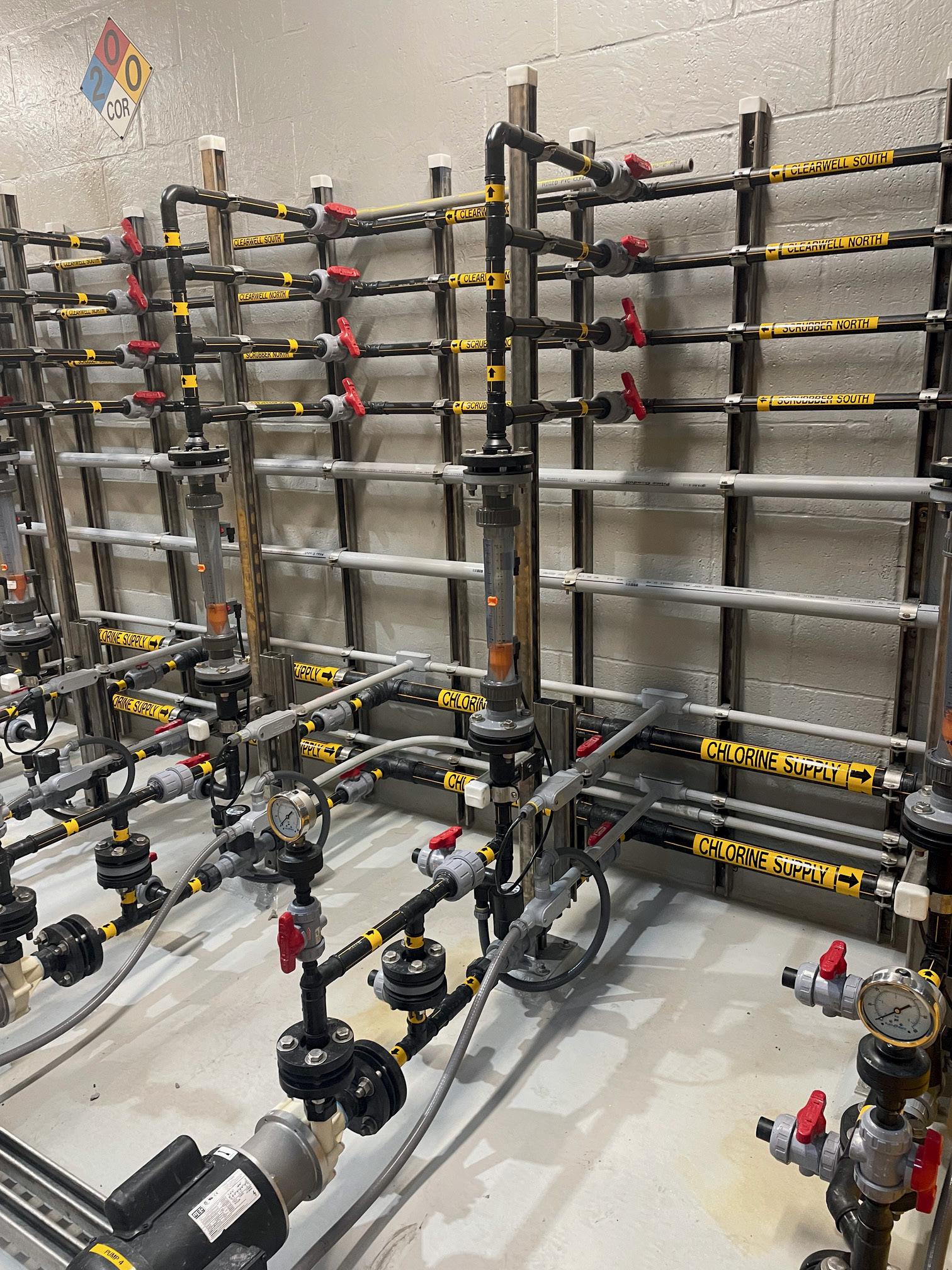
While effluent ponds are a prime beneficiary, this technology extends to various aquatic settings, such as monitoring sediment for stability assessments in mining tailings ponds, guiding dredging activities by pinpointing sediment levels and ensuring capacity and integrity of reservoirs.
Underwater acoustic sonar sediment remote surveying represents a significant leap forward in how we manage and understand aquatic sedimentation. By embracing this technology, industries can make informed decisions that promote operational efficiency, regulatory compliance, and environmental protection. It is a great example of how innovation can turn challenges into opportunities.
Paul Makar is with PW Makar Coatings Inspection Ltd. Email: paul.makar@cogeco.ca
By Ross Kirschbaum

Within water and wastewater treatment plants (WWTPs) are critical power electrical systems, such as generators that provide backup power during grid outages. But, how do engineers correctly size generators for water applications, while meeting all applicable codes and standards? Also, how do they meet other criteria such as minimizing noise and emissions? These factors all need careful consideration when specifying a generator to ensure reliable and sustainable operation over the long term.
To answer those questions, we first
need to understand different types of loads. Water facilities have dynamic electrical loads that impact generator sizing. The single largest load and starting method drives the minimum electrical requirements for motor starting and corresponding alternator selection for the standby generator. Generator manufacturers offer multiple alternators on a single model to provide an oversized alternator when electrical loads have high motor starting requirements.
Overall minimum or maximum load requirements can impact the longevity of the equipment. Diesel engines run-
continued overleaf…

ning at low loads (less than 35% of the nameplate rating) for extended periods may experience performance issues when not maintained properly.
Failure to perform routine maintenance can cause excessive moisture in the oil, leading to scoring or glazing of the cylinder walls and excessive soot and unburnt fuel in the overhead assembly and exhaust piping, which is known as “wet stacking.”
Minimally loading gas generators can also be an issue.
Another crucial factor to consider is the maximum average load factor. This is different from a generator’s electrical power factor. The load factor is the average percentage of loading applied to a generator. The average load factor is defined in ISO 8528-1.

pump stations, must also adhere to the latest Canadian emissions standards.
Another factor that may impact the overall size of the generator equipment is the desired power quality performance or acceptable voltage and frequency dips and time to recover. Highly inductive or capacitive loads may present a significant challenge to a generator compared to an “infinite” utility source.
There is a difference in transient performance between diesel and gaseous generators, and ISO 8528-5 defines three class type standards (G1/G2/G3) that generator manufacturers use for each fuel type. Water applications often demand more stringent performance, which stems from large motor starting requirements.
A transition is taking place in some areas, where less utility-scale generation is being produced and there are increasing power demands on the infrastructure. Utility companies are now incentivizing end-users to install equipment that can operate at any time to counter demand or potentially even return surplus power to the grid.
Larger water facilities with substantial megawatt (MW) installation bases are considering moving from emergency standby (Tier 2 or Tier 3) to Tier 4 certified engine generators required for operation in non-emergency applications. Any mobile (non-stationary) generators, commonly seen at treatment plants and
Incentives are offered by utilities for these peak shaving, curtailment, or demand response programs. Utility companies are even providing the equipment themselves on behalf of an end-user in instances for flexibility to control equipment operation times and reduce grid power demand for improved stability.
Understanding Tier 4 applications requires additional exhaust after-treatment components driving complexity with diesel oxidizing catalysts, selective catalytic reduction, and/or diesel particulate filters.
The starting sequence of loads or load set management is important in balancing the starting and running loads and sizing the generator properly. As referenced earlier, the single largest load and starting method will drive the required starting kilovolt-amps to select the correct alternator to use for a specific generator model.
Therefore, we must ask specific questions to understand the application and sequence of steps. For example, how many loads are considered emergency or life safety loads? Are line-input filters required to reduce line harmonics? How is the starting sequence initiated (e.g., SCADA System, ATS, VFD Master Control, or other)? These questions, and others, can help optimize load management as required.
The starting method for a motor is also a significant factor in ensuring an appropriately sized generator. A reduced start method like a soft-start, VFD, or wyedelta may be more cost-effective than up-sizing a generator to handle the large instantaneous load in a worst-case acrossthe-line start (ALS). In many cases with an ALS, any high horsepower motor will require such an oversized alternator, or it will not work with the generator model sized for the running loads.
A reduced voltage starting method decreases the size of equipment. Input filtering or a higher quality VFDs (18-pulse vs. 6-pulse) can mitigate overall harmonics on the alternator, reducing equipment size. Typically, ensuring less than 10 – 12% total harmonic distortion (THD) ensures the VFD will stay engaged, but design engineers should reference and specify required power quality characteristics to avoid the VFD disengaging.
Non-linear loads can drive larger alternators within the system to manage harmonic distortion of the waveform. Non-linear loads create harmonics (i.e., current harmonics). Depending on its characteristics, an alternator simply enhances or mitigates the voltage distortion (i.e., voltage harmonics) at its output terminals.
Several alternator features can be specified to mitigate harmonics. For instance,
an alternator with lower sub-transient reactance will produce less voltage harmonics. Meanwhile, Class H insulation offers better “cushion” than Class F insulation against overheating, and a lower alternator temperature rise reduces the chances of overheating.
For water applications, current sizing needs are often compared to potential future state scenarios. Increased power demands are usually a direct result of projected population growth and the need for larger facilities. The focus is to understand optimal-sized equipment requirements and standardize generator models in multiple scenarios to allow modular plug-and-play for future equipment to address growth. This provides for commonality of parts, identical service requirements, and familiarity with the same footprints.
There are many benefits when connecting multiple generators to act as a larger power source, including redundancy, efficiency, different kW size generators, diesel and gas combinations, and value and scalability. However, a few items to be aware of are space constraints for the multiple generator systems, more complex operations & maintenance, and additional complexity in the overall control system.
Considerations must be made for low versus medium voltage generation on larger projects. When generating at 5kV or 15kV class, it must be decided whether to have a disconnect at the generator or in a switchboard panel. This can be a fused disconnect or a medium voltage breaker; however, both are large gear sections and drive custom packaging inside the generator enclosure.
Medium voltage automatic transfer switch (ATS) requirements can increase packaging footprint. Manufacturer assistance early in the design phase can address physical size, footprint, and power delivery voltage variances, clearly outlining low or medium voltage advantages and disadvantages. Medium voltage applications require a decision about where to locate and wire a fused disconnect (when desired) and a potential neutral grounding resistor (NGR), as well as determining if it should be arc-resistant and required
withstand ratings.
Additionally, the human-machine interface (HMI) monitors and protects the engine and alternator. A controller with UL 6200 is the latest standard for generator controls and may allow for removing the line circuit breaker on the generator, protecting against overcurrent conditions. It can also act as an energy reduction maintenance mode switching


device, as now required by the latest code standards.
Finally, a breaker-free generator with a UL 6200 controller can facilitate short-circuit selective coordination.
Ross Kirschbaum is with Rehlko. Email: ross.kirschbaum@rehlko.com




































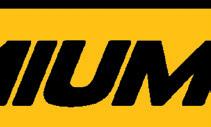






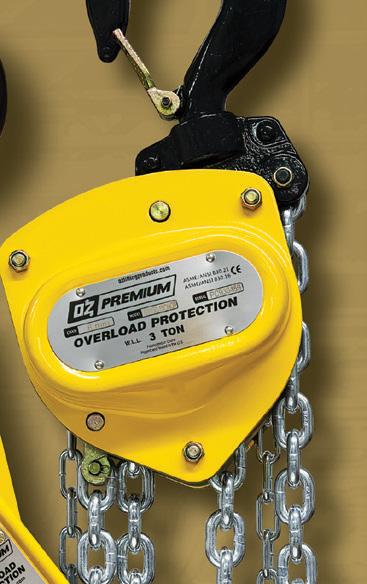
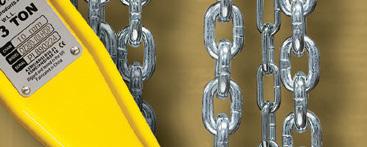




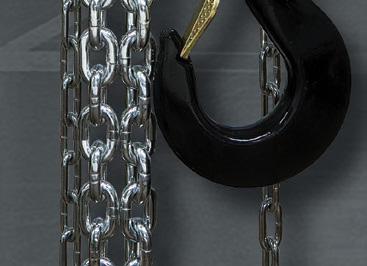



By ES&E Staff
The City of Winnipeg is celebrating two recent announcements, as local officials were approved for $150 million in federal funding towards phase two of upgrading the North End Water Pollution Control Centre, as well as $1.2 million from the Canada Water Agency to combat harmful algal blooms.
The wastewater treatment plant funding is over four years, starting in 20262027 as part of a 10-year agreement between Manitoba and the federal government for $209.8 million under the Canada Housing Infrastructure Fund (CHIF), which will also cover other drinking water, wastewater, stormwater, and solid waste projects in the city. An additional $16 million of funding for the North End upgrades will come from a provincial stream for a total of $166 million for the facility commissioned in 1937.
Phase 2 upgrades involve the construction of a new facility to turn wastewater sludge into biosolids, which will cost more than $1 billion, according to local officials. The biosolids facilities upgrade project will be led by Red River Biosolids Partners General Partnership, a consortium comprised of Aecon Group Inc., Oscar Renda Contracting of Canada Inc. (a subsidiary of Southland Holdings Inc.), and MWH Constructors Canada Ltd., of which Aecon is the lead partner and holds a 33.3% interest.
Stantec is leading the design of the biosolids facility project alongside Hatch Engineering.
Current estimates for all three phases of the North End upgrades are approximately $3 billion, with a completion deadline of 2030. That means that Winnipeg still requires upwards of $500 million to round out phase two funding for the facility upgrade. There is no funding for the final phase at this juncture.
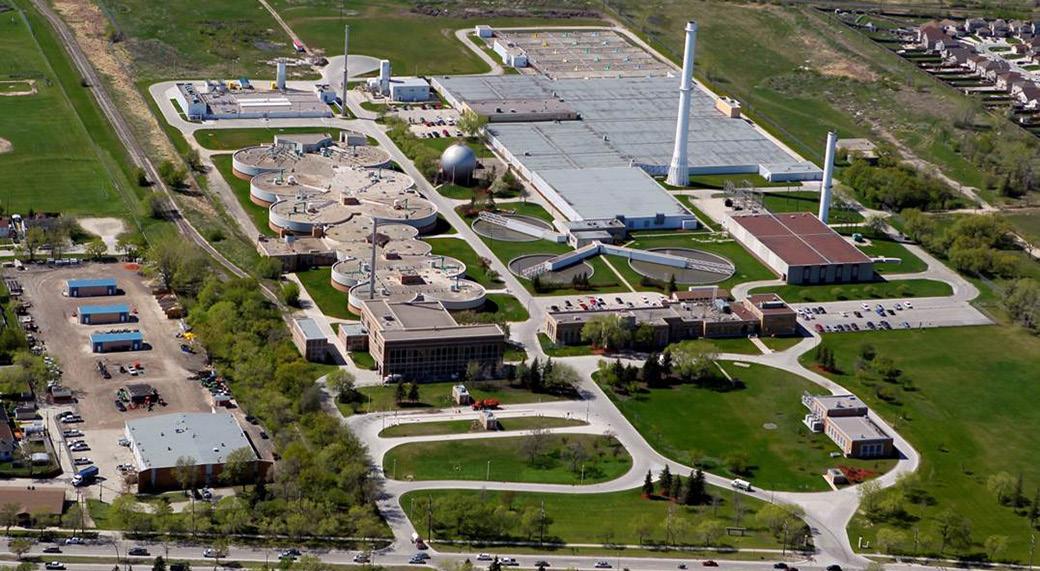
Major upgrades at the North End Sewage Treatment Plant include a new facility to process biosolids, a new facility to remove nitrogen and phosphorus from wastewater, as well as a new power substation and new headworks facility. Credit: City of Winnipeg
The North End WWTP provides 70% of Winnipeg’s wastewater treatment. The three major upgrades include a new facility to process biosolids, a new facility to remove nitrogen and phosphorus from wastewater, as well as a new power substation and new headworks facility.
“This agreement is a significant step toward ensuring we have the wastewater capacity needed to support more homes, more jobs, and a growing population,” announced Winnipeg Mayor Scott Gillingham, who called the upgrades project the “most complicated capital infrastructure project in our city’s 150-year history.”
The Canada Water Agency is investing $1.2 million in several Winnipeg-area projects to address challenges related to algae blooms caused by the presence of excess phosphorous.
The projects funded include:
• $450,000 for Grand Council Treaty #3 to participate in collaborative processes and actions to reduce phosphorus, as
well as coordinate community engagement on nutrients and algae blooms in Lake of the Woods.
• $395,000 for the Lake of the Woods Water Sustainability Foundation to develop a phosphorus management plan for the Rainy River — Lake of the Woods Watershed.
• $380,800 for Trent University to study phosphorous sources and nutrient interactions.
• $24,150 for the Métis Nation of Ontario to continue engagement with the northwestern Ontario Métis community to foster collaboration, participation, and capacity building on phosphorus reduction actions and nutrient and algae science in the Lake of the Woods Basin. The funding is over four years for the partner-led projects through the Lake of the Woods Freshwater Ecosystem Initiative under the federal Freshwater Action Plan.
For more information, email: editor@esemag.com
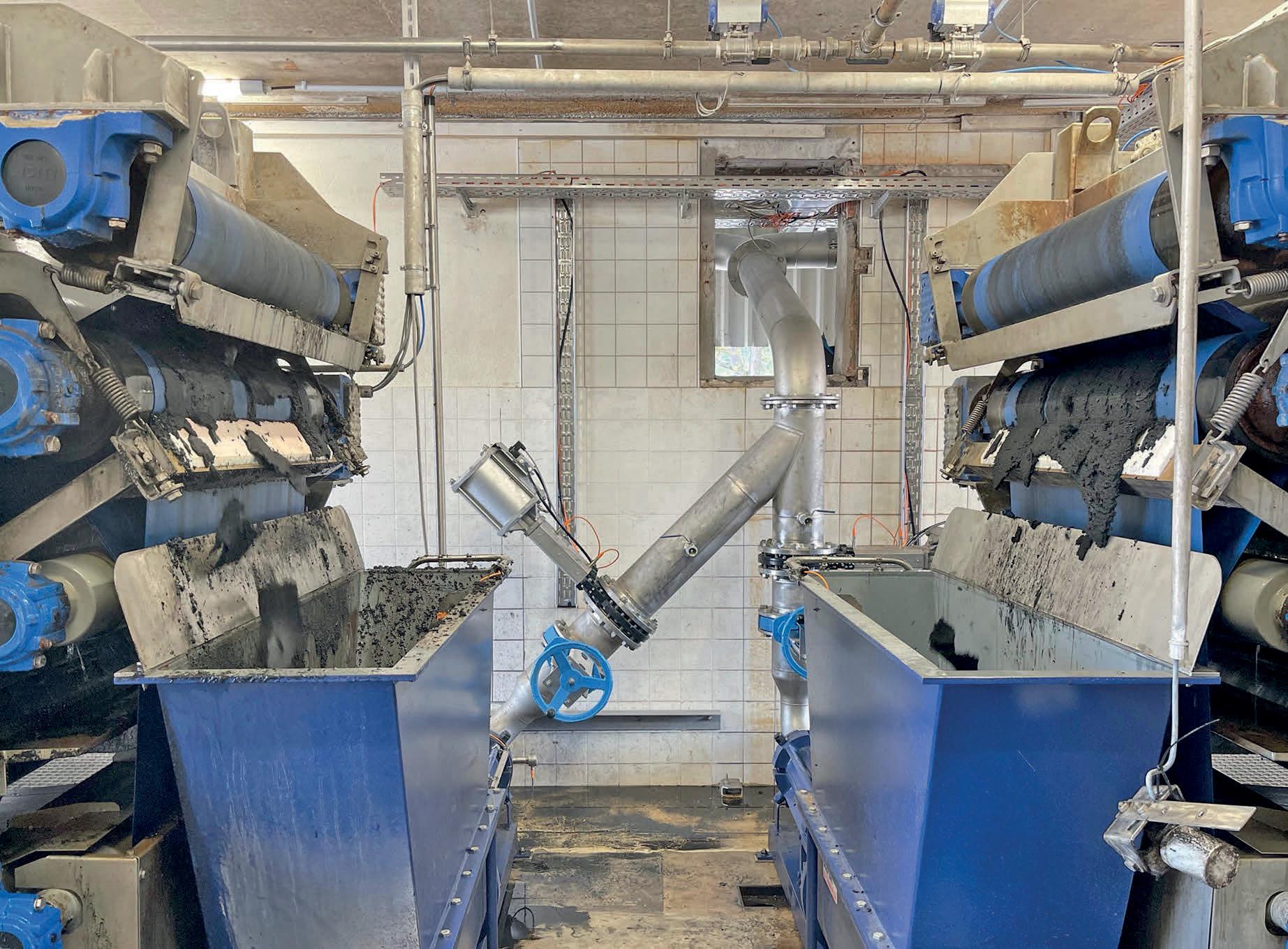



At SEEPEX, we make cake conveying a piece of cake! Our open hopper progressive cavity pumps are designed to handle highly viscous, non-flowable products with high dry solids content, like dewatered cake. Unlike traditional large pumps, which require cumbersome maintenance and disassembly, SEEPEX solutions streamline your operations for greater efficiency.
SEEPEX’s Drive Joint Access (DJA) and Rotor Joint Access (RJA) transform maintenance for large hopper pumps. The innovative RJA enables easy access to the rotor-side joint without dismantling the pressure branch or stator, minimizing downtime. Similarly, the DJA allows quick access to the drive-side joint without the need to remove pipework or other components, enhancing efficiency.
For long-distance cake conveyance, the Smart Air Injection (SAI) system revolutionizes the way we tackle energy-intensive processes, efficiently transporting cake over distances of up to 1,000 meters
SEEPEX is your dependable partner, delivering effortless, reliable, and highly efficient solutions for cake pumping. Scan to start!
By ES&E Staff
Arecent Swedish study is warning of increased bladder and colorectal cancer risks from trihalomethanes (THMs). It says that disinfecting water with chlorine creates these chemical byproducts that can increase the risk of bladder cancer by 33% and colorectal cancer by 15%.
THMs are made up of four compounds: chloroform, bromodichloromethane, dibromochloromethane and bromoform.
Total THMs is the sum of the four THM species, of which chloroform is most often found at the highest concentration in drinking water.
In Canada, the MAC for THMs has been 0.100 mg/L (or 100 parts per billion). In its consultation, which ended on April 14, Health Canada proposed

Health Canada notes that health risks from disinfection byproducts, including THMs, “are much less” than the risks from consuming water that has not been disinfected.
Credit: oasisamuel, stock.adobe.com
maintaining that value.
In the recent study, connected to Sweden’s Karolinska Institutet, researchers found that elevated cancer risks can
occur with THM levels as low as 40 parts per billion.
“Given the potential health effects of THMs, and the limited information on the risks and uncertainties of other chlorinated, brominated and iodinated disinfection by-products, it is recommended that treatment plants strive to maintain THM levels as low as reasonably achievable,” Health Canada advised in its recent consultation document.
Health Canada goes on to note that health risks from disinfection byproducts, including THMs, “are much less” than the risks from consuming water that has not been disinfected. “Therefore, efforts to manage THM levels in drinking water must not compromise the effectiveness of water disinfection,” the department adds.

In 2008, Health Canada convened an expert panel to review the reproductive and developmental toxicity associated specifically with one of the THM compounds known as bromodichloromethane or BDCM.
The panel found that the evidence from epidemiological studies to be inconsistent to support an association between adverse reproductive and developmental effects.
For more information, email: editor@esemag.com










With over two decades of installed experience at more than 100 facilities worldwide, Nereda® technology is the One and Only true aerobic granular sludge on the market today.
Since its introduction to the U.S. and Canada in 2017, more than 40 AquaNereda® plants are currently in design, under construction or in operation throughout North America.
Consultants and end-users continue to realize the process and cost saving benefits associated with AquaNereda technology through on-site pilot testing, installation visits and technical seminars.
ADVANTAGES OF AQUANEREDA ® TRUE AGS TECHNOLOGY:
• Design MLSS of 8,000 mg/l greatly reduces footprint
• Capable of enhanced nutrient removal
• Suitable for retrofits and greenfield sites
• Exceptional effluent without chemical addition
• Robust process that adapts to changing conditions
• Applicable for municipal and industrial waste streams
• Significantly less construction cost compared to conventional treatment
• Energy and chemical savings results in lowest cost of ownership
Represented by:
www.acg-envirocan.ca sales@acg-envirocan.ca
By Lloyd Hipel
Conserving water ensures that more is available to meet the consumption demands of growing populations. It also avoids (or at a minimum, defers) building expensive infrastructure to treat and distribute more water and/or to access more distant water sources. This is of significant concern to areas that rely on limited groundwater supplies to serve their populations. In Ontario, there are several excellent municipal water conservation programs that industrial, commercial, and institutional (ICI) facilities can take advantage of.
These programs essentially “pay” ICI facilities to conserve water through capacity buyback programs, free water audits, access to co-funding, etc., as these approaches are less expensive than building new infrastructure to free up water supplies .
For ICI facilities, conserving water is a way to save money while demonstrating environmental stewardship. It also protects profit margins as water rates continue to increase at a pace faster than the rate of inflation in many jurisdictions in Ontario and throughout Canada. Furthermore, it reduces the facility’s demand on local water resources, freeing up capacity for additional users in growing communities.
At Enviro-Stewards, we divide our methodology for a water audit into three main categories: assess, implement and monitor.
The first step in the assess phase is to establish baseline water consumption. This can be done by analyzing monthly utility data, or reviewing recorded daily watermain and sub-meter readings.
However, our approach is to also install meters (either permanent or clamp-on) on the incoming water main and major water-consuming processes to get minute-by-minute water consumption data. Since monthly water consumption often appears consistent, identifying inefficiencies, except in cases of extreme anomalies, can be challenging. Daily meter readings are helpful, but again they don’t always provide the required resolution to notice excessive water use.
Recording hourly or even minute-by-minute water consumption, however, provides excellent resolution into daily (and nightly) water consumption patterns that can help unlock efficiency opportunities.
Figure 1 shows monthly water consumption for a facility. From the graph, we can observe some seasonal variations and determine the maximum and minimum water consumption by month. However, beyond that, we don’t have insight into 24-hour, hourly, or per-minute flow rates to delineate consumption patterns.
However, by analyzing even hourly readings we can begin to identify consumption patterns. For example, the constant anomalous water consumption that can be seen in Figure 2
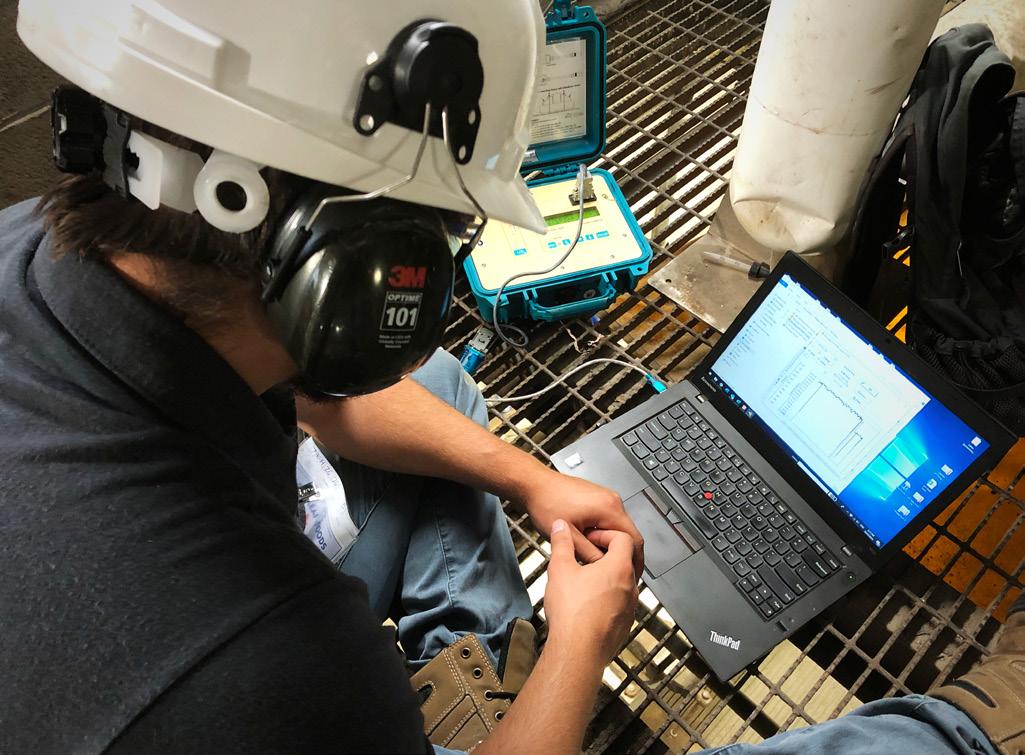
Recording hourly, or even minute-by-minute, water consumption provides excellent resolution into patterns that can help unlock efficiency opportunities.
(represented by the red line) would have been “hidden” in the monthly consumption chart. Without knowing this background consumption is occurring, you wouldn’t begin to investigate it and implement measures to eliminate (or reduce) it.
Once the detailed hourly or per-minute metering data is collected and analyzed, it needs to be organized to know what to tackle first. To do this, we develop a facility-wide water balance in a Pareto chart format, like the simplified one in Figure 3.
In this example, you want to focus your attention on processes A and B first, because they represent 75% of this facility’s total water consumption. This makes sure that you focus on what matters most so that the time and effort invested in the water audit will have the most significant impact.
Once you have your water balance and have selected the top water consumers, you can begin investigating opportunities to reduce or eliminate water use for each component of the water balance (starting with the largest consumers from your Pareto chart or table).
It is advisable to ask “what job is the water solving for us?” to identify creative conservation measures. Opportunities to eliminate or reduce water use are typically low- to no-cost and simplest to implement. Reuse opportunities may require more investigation and/or capital investment.
Identified opportunities are then listed in a table with a description of the opportunity, potential water and dollar savings, estimated capital and operating costs, and projected financial return (such as straight-line payback, net present value, etc.). Your team can then determine how to prioritize the opportunities based on financial considerations (which
will yield the most significant dollar savings and quickest payback) or environmental considerations (which ones will save the most water).
A quote commonly attributed to Thomas Edison puts it bluntly: “Vision without execution is just hallucination.” In other words, the opportunities identified in a water audit report (that provide the mathematical numbers for water savings) remain theoretical if they aren’t implemented.
As such, the list of opportunities should also lay out an implementation sequence/ schedule and assign a person to each conservation measure who will be responsible for guiding it through to completion. Many good intentions to implement water conservation measures have been buried under short-term but pressing issues such as production issues, staff turnover, compliance audits, among many others.
As such, developing an implementation team and pre-booking regular meeting times in schedules (that can be shifted if other priorities arise that day) can keep the overall momentum going.
As water conservation measures are implemented, it is important to continue metering to ensure that the projected savings are being realized. We have developed a system called Stewwi (System for Tracking Energy, Water, and Waste Improvements) that is implemented during the assess stage to help quantify baselines, and which can then track savings post implementation.
In the energy conservation world, this type of solution is called an Energy Management Information System (EMIS), into which you could easily incorporate water. The advantages of incorporating water consumption into an EMIS include consolidating utility consumption data into one “dashboard” (along with electricity and natural gas consumption, for example), and alerting users when there is anomalous consumption.
Data can be accessed whether you’re on or off site, new water conservation opportunities can be discovered, and visual figures and tables can be generated at the touch of a button to verify your
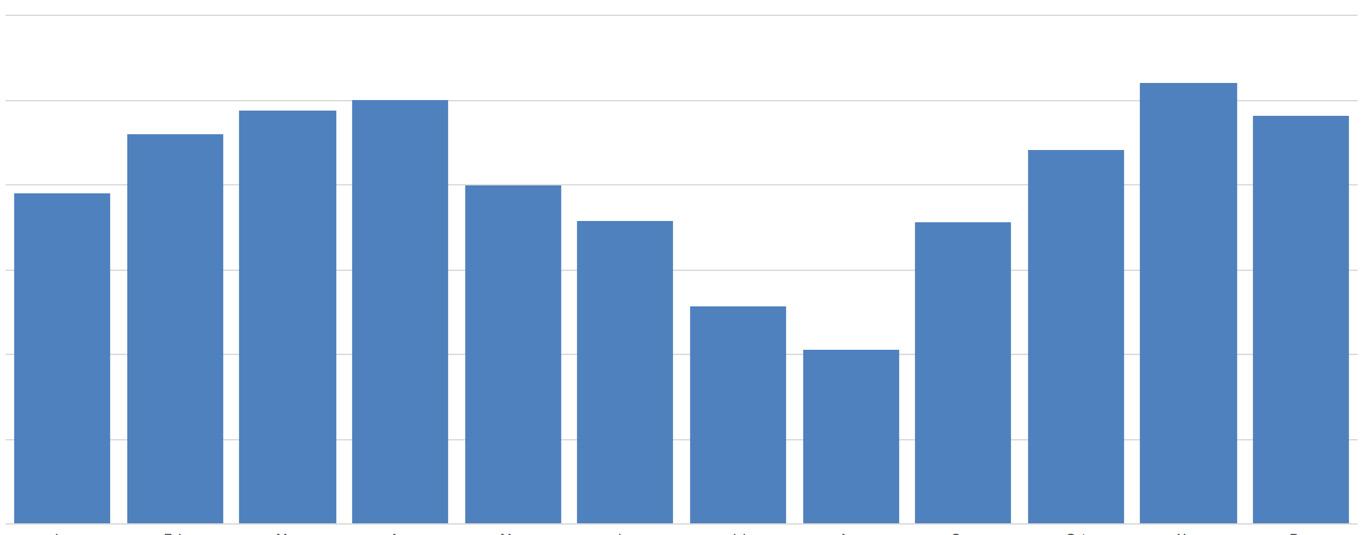
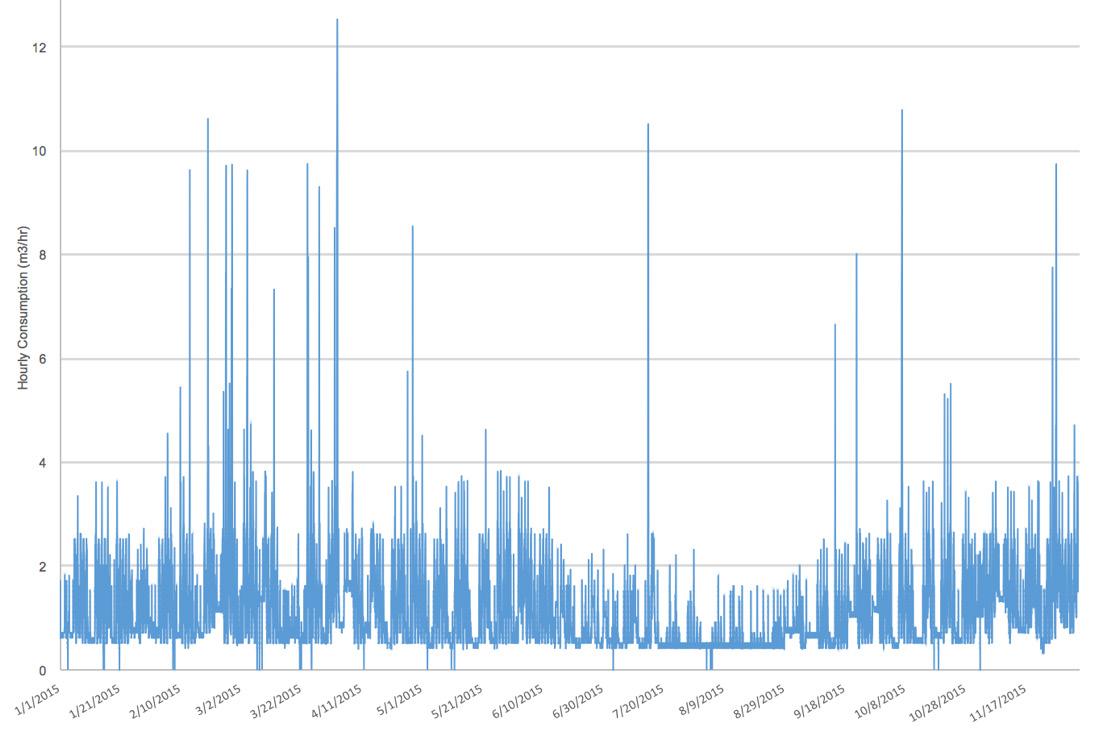
Once the detailed hourly or per minute metering data is collected and analyzed, it needs to be organized to know what to tackle first. To do this, we develop a facility-wide water balance in a Pareto chart format, like the simplified one in Figure 3.
gains relative to your savings goal(s). Other monitoring methods can include installing sub-meters or visual
checks of the implemented measures (e.g., confirming that a repaired valve is continued overleaf…
In this example, you want to focus your attention on processes A and B first, because they represent 75% of this facility’s total water consumption. This makes sure that you focus on what matters most so that the time and that effort invested in the water audit will have the most significant impact.
Once you have your water balance and have selected the top water consumers, you can begin investigating opportunities to reduce or eliminate water use for each component of the water
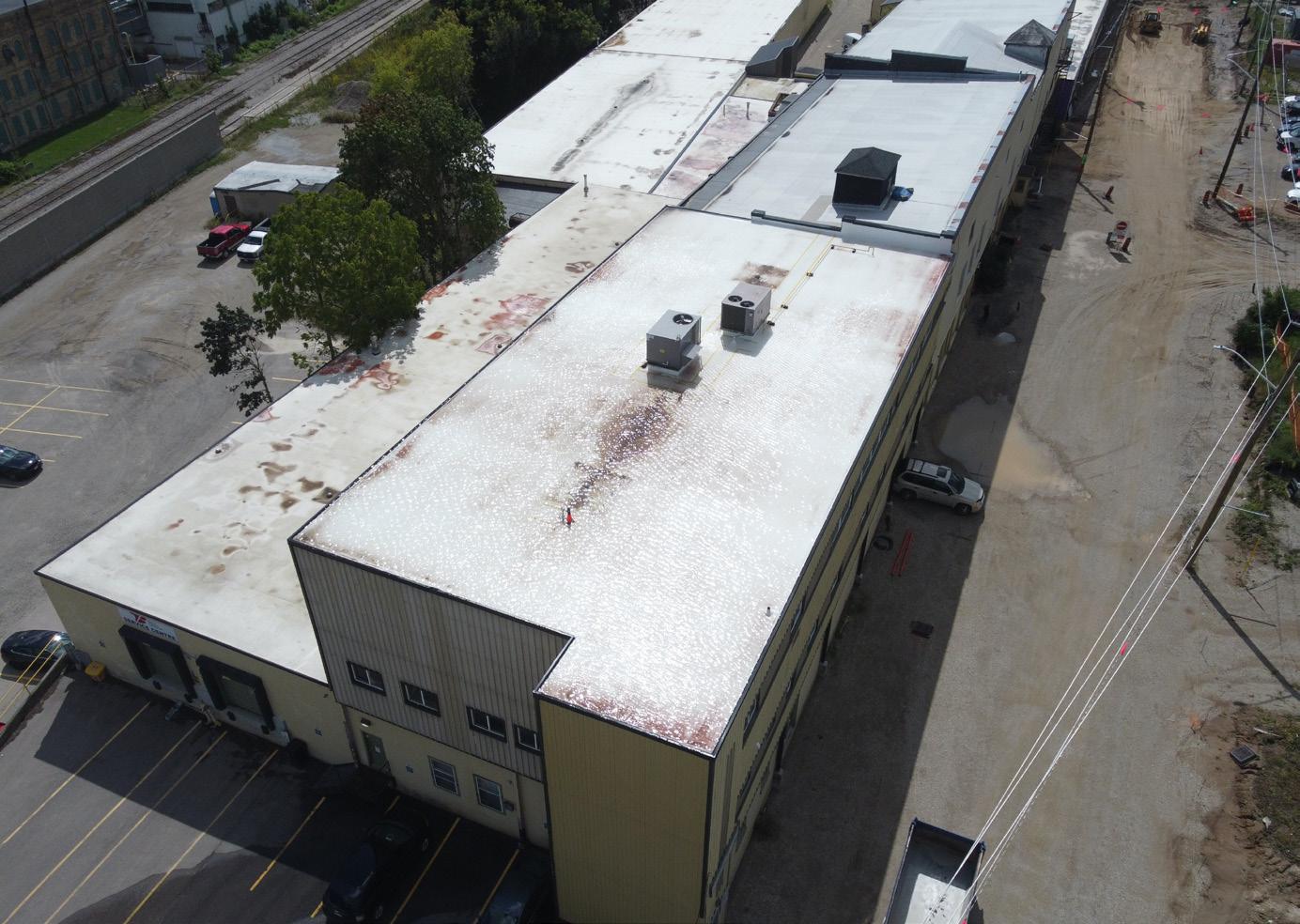
no longer leaking or that a rotameter to control flow rate has been installed).
Arla Foods participated in York Region’s Water Use and Wastewater Quality Consultation and Capacity Buyback Incentive Program, which found opportunities to reduce the facility’s water consumption by 32%. By implementing measures like replacing spray nozzles with more efficient ones and implementing water recovery systems, this equated to a financial savings of $143,000 per year.
As an example of the benefits of ongoing monitoring post-implementation, we were able to work with Farm Fresh Poultry to identify close to $3,000 per month of unneeded constant water use due to malfunctioning components of their cooling tower system. Once repaired, consumption was observed to return to normal baseline values.
Following a detailed water audit of another industrial facility, follow-on flow monitoring identified a baseline water use over the weekends (when there was no production), of approximately 60 litres-per-minute (LMP) on Sunday (see Figure 4).
However, between the final sanitation shift on Saturday and the start of production on Monday morning, there should
not have been any water consumption.
To more easily identify the source(s) of the anomalous water use, a team conducted a detailed walkthrough on a Sunday, when there were no production or sanitation activities. They installed a clamp-on ultrasonic flow meter on the main meter to record minute-by-minute flow data throughout the duration of the investigation. The initial baseline water flow recorded by the ultrasonic flow meter was 60 litres-per-minute (LPM).
During the investigation, five major areas of water losses were identified throughout the facility. These included water flow due to a back-pressure valve, a faulty level sensor in a water tank, a leaking water pipe, cooling water overflow, and a valve that was left open by accident. None of this water was required on a Sunday and most of this water was not required during the week.
Once the major areas of water loss were identified and addressed, the baseline flow was reduced to almost zero. The implemented measures from this single day of investigation are projected to save 32,000 m3/yr of water and 75,000 m3 per year of natural gas ($175,000 per year).
To maintain these savings, the facility will continue closely monitoring its water use to make sure the weekend baseline does not creep up. If weekend water con-
sumption does increase, another water assessment can be conducted to find and fix the root cause(s) of the excessive water consumption.
The One Water concept views all water (potable, stormwater, sanitary, etc.) as a single unified resource. For example, wastewater can potentially be part of a circular economy, where it can be reused as process water in industrial facilities. The One Water outlook also helps us to find opportunities for climate resilience and low-impact design measures in the face of droughts, torrential rain, urban growth, and climate change.
One technology that we’ve implemented at our head office is a blue roof, which retains rainwater to allow it to slowly drain to the municipal stormwater system. This low-impact design aspect can help alleviate flooding during extreme rain events.
In addition to stormwater retention, the blue roof also incorporates other One Water benefits such as water reuse, where stored water can be reused for flushing toilets and/or irrigation. An additional benefit is that the stored water provides evaporative cooling for buildings during summer months, which reduces energy use for air conditioners.
We call our blue roof design an Affordable Smart Blue Roof (ASBR) because it uses conventional roof materials and integrates various technologies to automatically control water storage levels, track the volume of conserved water and energy, detect leaks, irrigate our living wall, flush our office toilets, and can be operated remotely.
Many manufacturing facilities pay a surcharge fee to their municipality because the facility’s effluent concentrations of certain chemical or biological parameters exceed the sewer-use bylaw threshold. In such cases, facilities may be reluctant to participate in a water audit because a reduction in water volume will lead to an increase in parameter concentrations and potentially increase surcharge fees.
To alleviate this concern, we’ve successfully incorporated a pollution prevention (P2) component into the water audit. P2
was observed to return to normal baseline values.
Following a detailed water audit of another industrial facility, follow-on flow monitoring identified a baseline water use over the weekends (when there was no production), of approximately 60 litres-per-minute (LMP) on Sunday (see Figure 4)
is the use of processes or practices that avoid or minimize the creation of pollutants or waste at source. Thus, as part of a water audit we would also conduct a concurrent P2 investigation to find ways to reduce the effluent loading at source before it enters the drain and ultimately discharges to the sanitary sewer.
For example, a first rinse of a vessel containing ingredient residue can be diverted to animal feed (or potentially to reuse for liquid products) instead of being flushed down the drain. Similarly, dry scraping the residue before cleaning activities can significantly reduce the amount going to the sewer. This decreases the chemical or biological parameter concentration(s) of the effluent.
Furthermore, we can often demonstrate that even without the implementation of the P2 practices, the water savings are financially greater than the increase in the surcharge amount, resulting in an overall net dollar savings.
Municipalities disclose the formula they use to calculate the surcharge amount.
0:001:002:003:004:005:006:007:008:009:0010:0011:0012:0013:0014:0015:0016:0017:0018:0019:0020:0021:0022:0023:00
when there was no production.
However, between the final sanitation shift on Saturday and the start of production on Monday morning, there should not have been any water consumption.
Thus, we can use this formula to calculate various scenarios to demonstrate the net financial savings achievable (assuming a 5%, 15%, 25%, etc., reduction in water use) following implementation of the measures identified during the water audit.
To more easily identify the source(s) of the anomalous water use, a team conducted a detailed walkthrough on a Saturday, when there were no production or sanitation activities. They installed a clamp-on ultrasonic flow meter on the main meter to record minute-by-minute flow data throughout the duration of the investigation. The initial baseline water flow recorded by the ultrasonic flow meter was 60 litres-per-minute (LPM).
Reducing water use cuts costs for every consumer. However, business owners can also use their water conservation efforts to promote sustainability initiatives to sup-
pliers, customers, and the public. Many companies we have worked with, like Tim Hortons, Dextran, Maple Lodge Farms, Maple Leaf Foods, and Bimbo Canada (among others) have won Clean50 awards as a result of their sustainability efforts, which included water conservation and other initiatives, such as energy efficiency and food waste prevention.
During the investigation, five major areas of water losses were identified throughout the facility. These included water flow due to a back-pressure valve, a faulty level sensor in a water tank, a leaking water pipe, cooling water overflow, and a valve that was left open by accident. None of this water was required on a Sunday and most of this water was not required during the week, either
Lloyd Hipel is with Enviro-Stewards Inc. Email: lhipel@enviro-stewards.com
Once the major areas of water loss were identified and addressed, the baseline flow was reduced to almost zero. The implemented measures from this single day of investigation are projected to


By Christopher Oyler
Land surveyors play an essential role in large infrastructure projects like the Gordie Howe International Bridge (GHIB) in Windsor, Ontario, providing precise measurements, mapping, and data analysis.
Control points, which serve as reference coordinates, allow surveyors to accurately position elements on the construction site. Their work ensures the project adheres to design specifications and regulatory standards, minimizing risks. The services of an Ontario Land Surveyor act as an insurance policy based on the control point network, ensuring that project owners receive tangible value for their investment.
The establishment of a reliable control point network for the GHIB will provide long-term benefits, extending beyond the initial public works phase and continuing into the actual construction and post construction of the bridge.
Before construction begins, surveyors conduct topographical surveys to assess the land’s natural features, elevations, and boundaries. This information enables engineers to design the bridge in harmony with the existing landscape while ensuring compliance with legal boundaries and environmental conditions. Surveyors also identify environmentally sensitive areas, such as water bodies or wetlands, that must be preserved during construction. Additionally, they establish property lines and clarify land ownership to prevent encroachment on private or restricted areas.
One of the first surveying tasks for the Canadian port of entry at the GHIB involved relocating and installing over 4.3 km of natural gas pipeline, constructing a 4 km perimeter access road, and installing new utilities, including water,

sewer, fibre optic, and transmission lines. Surveyors conducted a control survey of a 130-acre site, which served as the base for all construction activity.
As construction progressed, surveyors continuously replaced or relocated control points that were disturbed by the movement of equipment or structural components.
The land surveyors used advanced technology, including Leica robotic total stations, network real-time kinematics GPS, and Leica digital leveling equipment. Strict adherence to proper field procedures was crucial, and all data was processed and adjusted using MicroSurvey’s STAR*NET software. On any given day, there were about 150 control points across the site.
A key to the success of surveying for the GHIB was the principle of redundancy. Redundancy builds confidence in the accuracy of surveyors’ calculations and field measurements over time. Ran-
dom errors caused by small, unavoidable fluctuations due to imperfections in tools, human perception, or environmental conditions, are mitigated by averaging repeated measurements, discarding outliers (extreme values that differ from most other data points in a dataset), and using independent checks. By measuring a point from multiple locations or using different methods, surveyors could identify and correct errors through redundancy.
This redundancy allowed surveyors to quickly and efficiently reestablish control points when they were disrupted by construction, maintaining the accuracy of the control network.
Throughout the construction process, surveyors provided real-time feedback to ensure structures were built according to horizontal and vertical specifications. They also monitored compliance with material tolerances, such as concrete and steel, ensuring construction met design requirements.
The control network was maintained using the aforementioned software. The dataset of observations contained over 1,300 GNSS (Global Navigation Satellite System) and terrestrial observations, 1,497 point-to-point distances, and 4,700 independent measurements. This software helped surveyors adjust instrument specifications, assess the quality of their work, and fine-tune coordinates for use by other contractors on-site. Specific controls were established for the bridge layout, ensuring precise alignment.
For a complex, cross-border project like the GHIB, surveyors played a critical role in ensuring the exact alignment of the bridge span between Canada and the U.S. This involved accounting for factors like the curvature of the Earth and compliance with local regulations.
After the bridge is completed, surveyors will conduct as-built surveys to verify that the structure was built according to plan, ensuring its integrity and safety. They will also engage in long-term monitoring to detect any settlement or structural shifts over time, which is crucial for the ongoing maintenance and safety of the bridge.
Scheduled for completion in 2025, the Gordie Howe International Bridge will connect Windsor, Ontario, to Detroit, Michigan. Spanning 2.5 kilometres and featuring the longest cable-stayed main span in North America at 853 metres, the bridge will accommodate six lanes of traffic and two pedestrian paths.

Christopher Oyler overlooking storage area for equipment and materials.
Establishing the control network for this massive infrastructure project, which spans an international border and straddles a major river, was a significant undertaking, especially given the coordination needed among the numerous subcontractors involved in road building, utility installation, and earthmoving activities.
Christopher Oyler is with Surveyors On Site Inc. For more information, visit: surveyorsonsite.com
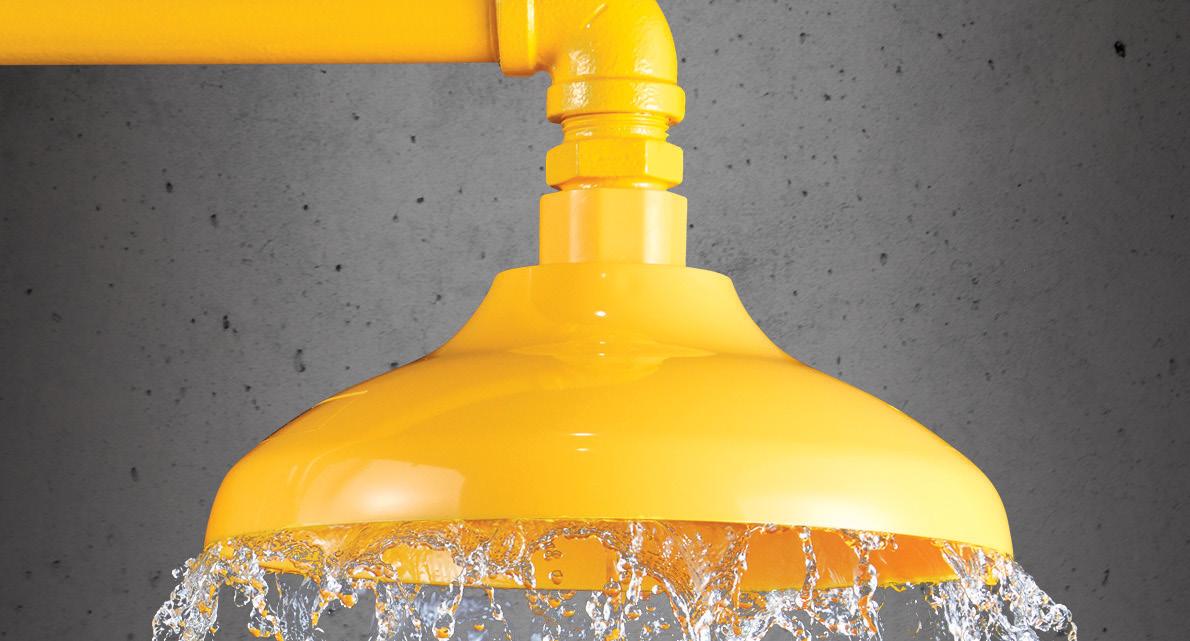
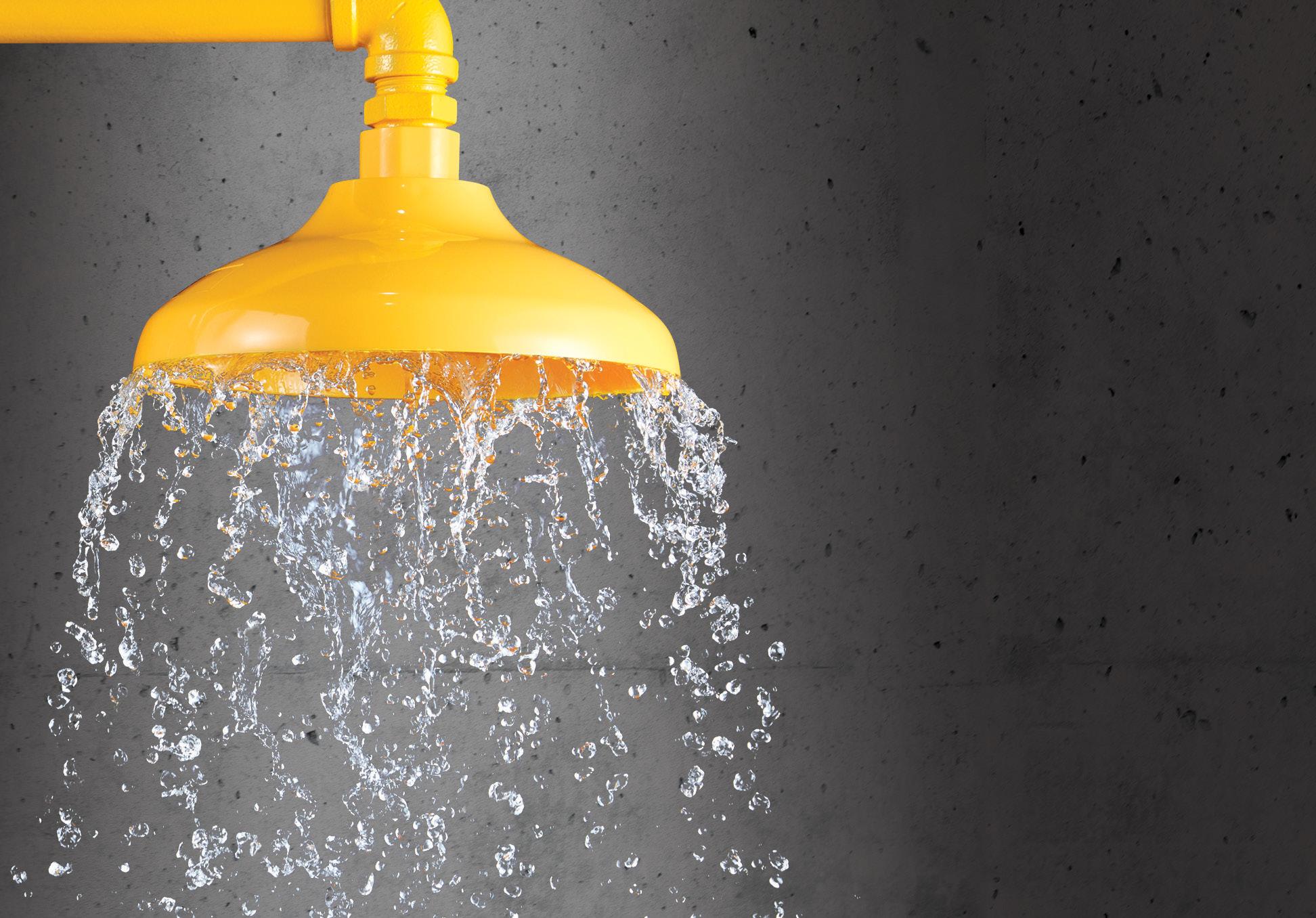

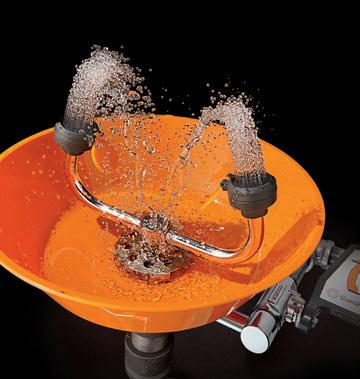
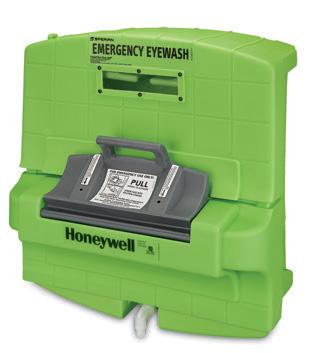




By Jeanne Hendrickson
The first and most important thing to consider when comparing disinfection technologies is how effective they are at disabling pathogens, such as cysts, viruses and bacteria. In a water treatment system,
from penetrating the water entirely, rendering it largely ineffective. This may be especially true with industrial wastewater or in systems where public and industrial wastewater are mixed.
Residual disinfection occurs downstream as the disinfectant travels through the distribution system, and only chlorine offers residual disinfection. Ozone and PAA react too quickly, dissipating within minutes of being administered. UV cannot provide any disinfection
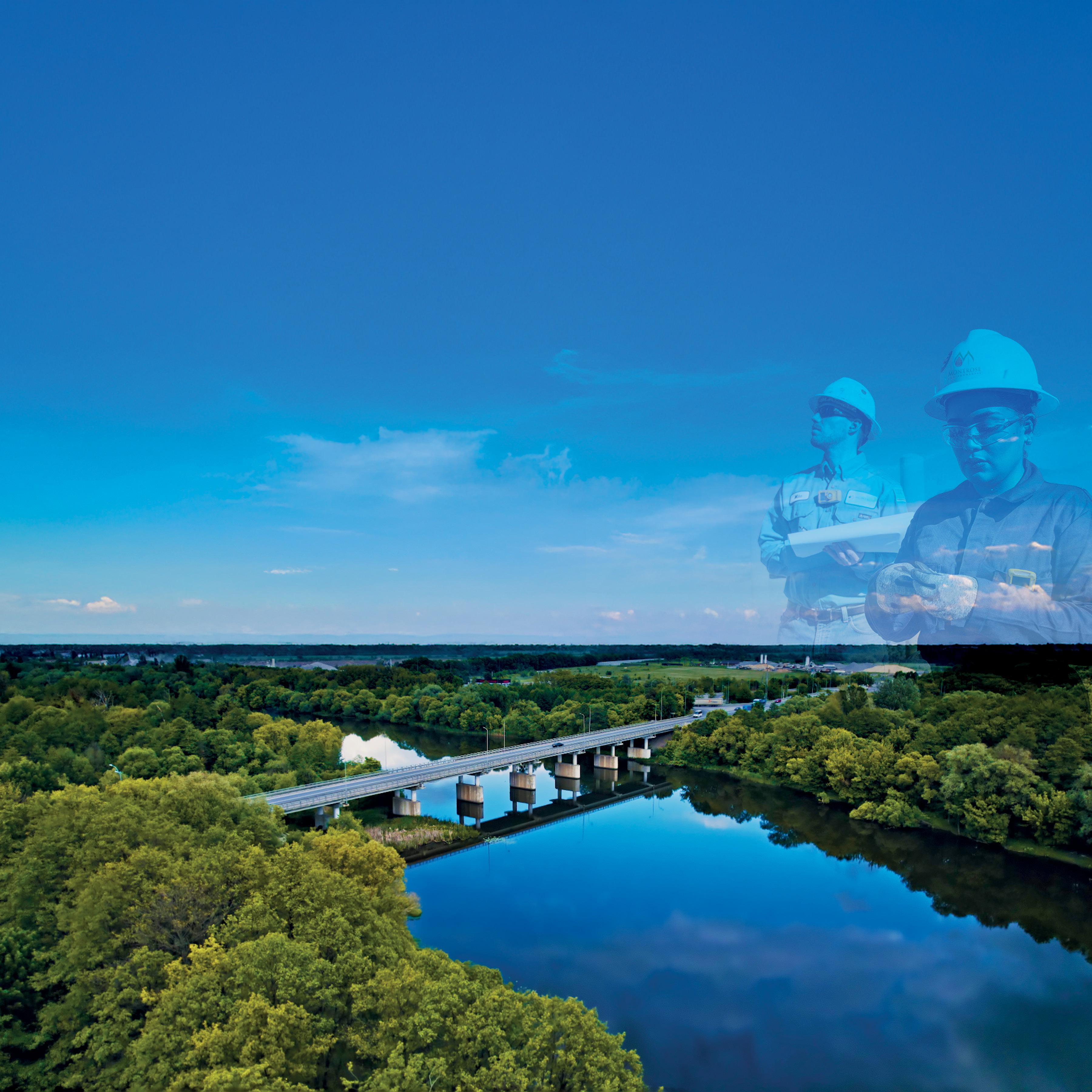
cations, particularly for wastewater that is discharged into sensitive bodies of water. This is why it’s important that decision makers have a clear understanding of the demands that will be put on the system,
Ozone is administered as a gas and is a powerful irritant that can damage lungs. While ozone has a distinct smell, the odour is not always strong enough to detect.
Chlorine is also a powerful irritant to lungs, skin and eyes. As such, operators must wear appropriate personal protective equipment (PPE). However, chlorine also has a powerful odour that is immediately noticeable, giving operators ample warning of a leak or spill.
UV light can be harmful to eyes and skin, although the lamps are typically enclosed during operation and rarely pose a threat.
PAA can cause damage to the skin, eyes and lungs. Those handling the chemical should do so in a well-ventilated room and wear appropriate protective gear. It is also corrosive.
Neither ozone nor UV can be overdosed. UV disinfection does not add chemicals and ozone dissipates quickly, breaking down into oxygen within minutes. PAA breaks down into acetic acid, water and oxygen. This makes it safe to treat effluent that is discharged into source water, or other bodies with high levels of organic content. It oxidizes almost instantly, so there is rarely any residual chemical after discharge.
The same is not true for chlorine. While some downstream chlorine is beneficial for its residual disinfection, operators must use precise dosing via

Chemical metering pumps play a critical role in the success of water and wastewater treatment.
advanced chemical metering.
UV systems have a high upfront cost but are often easy and affordable to maintain. They do not require any chemicals, and the only operating cost is electricity and the occasional lamp replacement.
Ozone, which is provided in and administered using compressed gas cannisters, has a moderate upfront cost but is very expensive to run as the gas is difficult to make. PAA is also expensive, and the number of manufacturers and distributors are far fewer. However, as adoption of PAA as a disinfectant is increasing, these factors are likely to change.
Chlorine is the most affordable. Not only is it inexpensive and easy to obtain, but chlorine can be easily dosed using efficient and cost-effective metering pumps. Even when combined with ancillary
equipment such as pH and chlorine analyzers, flow meters, and chlorine level sensors, chemical metering / dosing pumps are often more cost-effective than other disinfection technologies. Advanced features such as maintenance alerts and failure warnings can help ensure that any given pump continues to run effectively for a long time.
One wastewater plant, treating both municipal and industrial wastewater, had been using a UV system to disinfect its effluent. Although this system was in good working order, issues arose due to industrial influent. The plant gets heavy industrial flow, containing a significant number of contaminants. The existing UV system was simply unable to reliably meet mandated disinfection requirements.
It was determined that a chemical disinfection solution was needed. In this case, peracetic acid at 15% solution under minimal pressure was used. This was accomplished by installing a Duplex Skid System equipped with two Blue-White® FLEXFLO® M3 peristaltic metering pumps.
Since the switch, the plant is now experiencing reliable disinfection of wastewater and meeting all regulatory requirements.
Jeanne Hendrickson is with Blue-White: Email: jeanne@bwadvertising.com
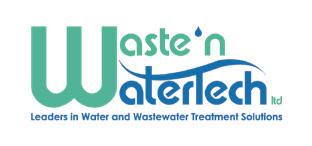

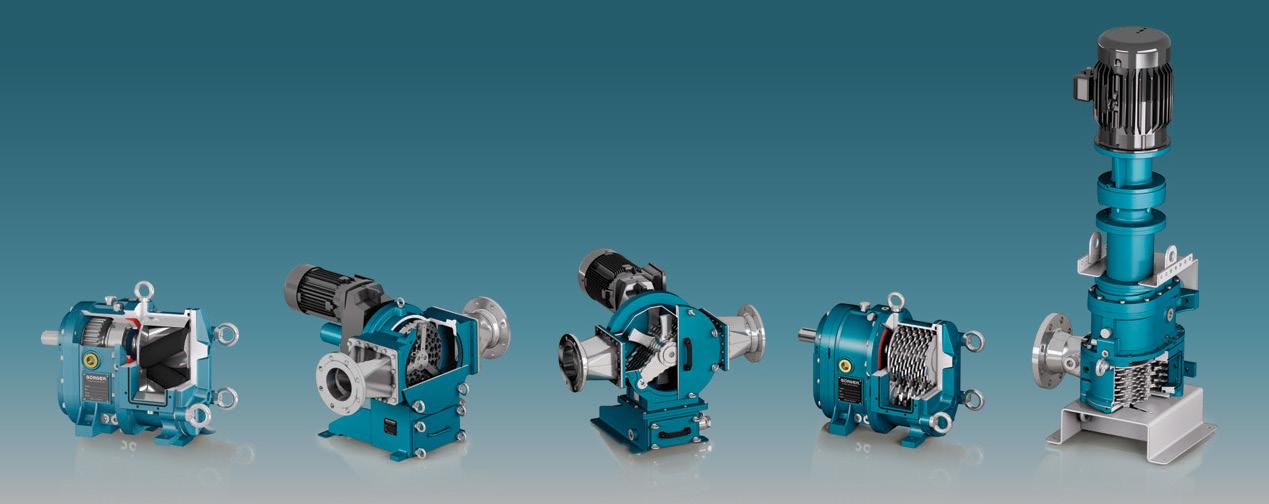
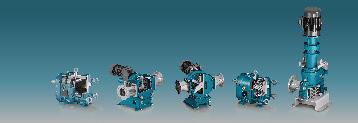


By Renata Klassen
The construction of large containment structures in the Canadian Arctic relies almost exclusively on earth berms for structural support and geomembranes to create low permeability for retention. The use of concrete may be applied to smaller structures, but the design must keep in mind the available quality of concrete prepared in the Arctic.
Earth containment structures in the Arctic may factor in permafrost to provide containment. If permafrost is expected to be preserved once the structure is built, the containment berms may be constructed of saturated, compacted, silty gravel to become part of the permafrost regime upon freeze back and serve as secondary containment.
This is not the case in sewage lagoons where permafrost is expected to degrade because of the heat from the wastewater in the lagoon. The containment berms in sewage lagoons are usually not designed as freeze back structures; however, some freezing in berms takes place over time.
For example, a temperature monitoring system I set up in the sewage lagoon in Kugluktuk, Nunavut, in 2021, and monitored by the Government of Nunavut over three subsequent years suggests that permafrost has aggraded into the perimeter berm, and the ground below the base of the berm is frozen (NTWWA Journal, 2023). This formation of permafrost would enhance the containment by the presence of the perennially frozen ground and suggest low flow condition due to frozen subsurface water. Including ground temperatures in long-term monitoring programs may be a useful tool in performance assessments of sewage lagoons.
National Resources Canada (NRC) defines permafrost (perennially frozen ground) as a state of the ground, soil or rock, that remains at or below a temperature of 0°C for a minimum period of two consecutive winters and the intervening summer. NRC (2025) emphasizes that the definition of permafrost considers only the temperature of the ground, and that permafrost is a strictly thermal phenomenon (not the material) and can exist not only at high latitudes but also high altitudes such as the mountains of western Canada.
Permafrost region in Canada covers about 50% of the country, including all of the Yukon and Northwest Territories (and Nunavut since April 1, 1999) and northern parts of British Columbia, the Prairie provinces, Ontario, Quebec and Labrador (Johnston, 1981).
Ground temperatures are usually measured with thermistor probes on a cable inserted into drilled boreholes. The cables are called ground temperature cables (GTC) because they are
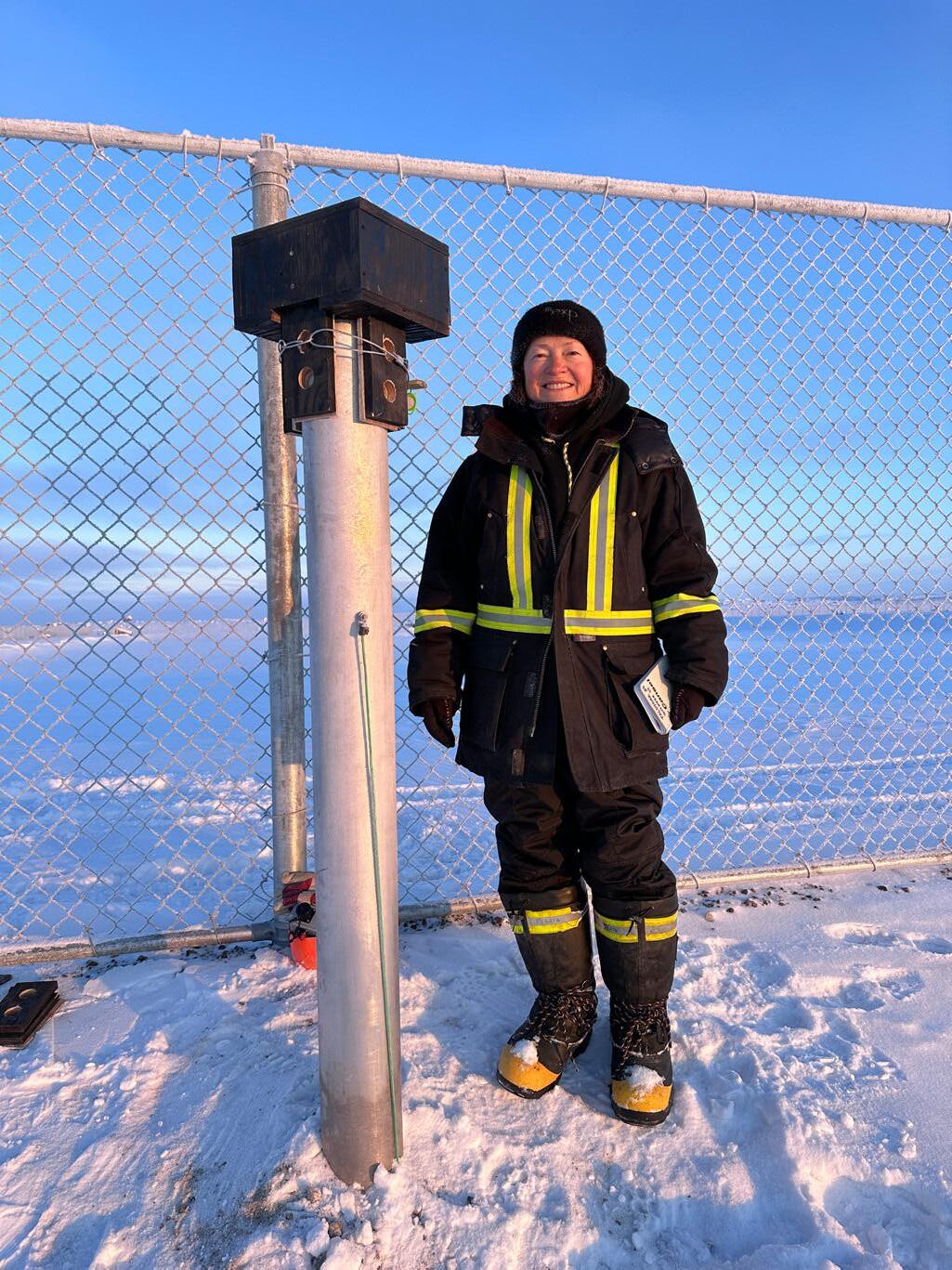
Ground temperature cables (GTC) are installed in pipe casings, which are connected to data loggers. These are then positioned in premanufactured plywood enclosures sized to fit and protect the dataloggers.
intended to measure temperatures in the ground. To ensure that GTCs will reach the desired depth, the boreholes are equipped with pipe casings inserted into the boreholes after drilling. GTCs are then inserted into the casings and either backfilled with sand or left loose in the casings allowing for future replacements. As GTCs alone do not record data, they need to be connected to a reading device to acquire temperatures. A manual method of getting temperatures from GTCs uses a resistance meter connected through a switch box which allows switching between thermistor probe channels. A more sophisticated method includes a datalogger, which when connected to GTCs provides continuous temperature readings according


Optical Fluorescence Dissolved Oxygen
Near Infra Red Total Suspended Solids

pH, ORP
Microwave Density
Ultrasonic Interface Level

Spectrophotometric Online
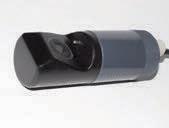

Multi Parameter Single – Dual – Multi-Channel-Wireless


Ultrasonic Doppler – Transit Time
Insertion/Immersion/Clamp-On
Venture/Flume Partially Filled Conduit
Non Contact Radar

Indoor or Outdoor
Refrigerated or Non-Refrigerated

Portable or Stationary
Integrated Billing System















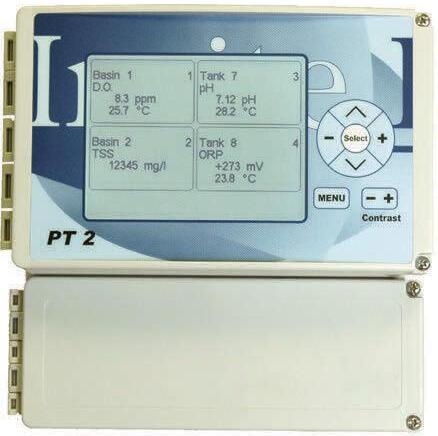




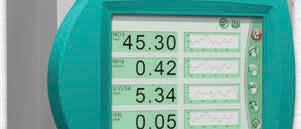
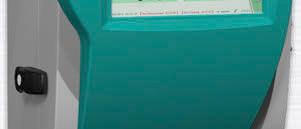

Fully Automated Control and Data Collection

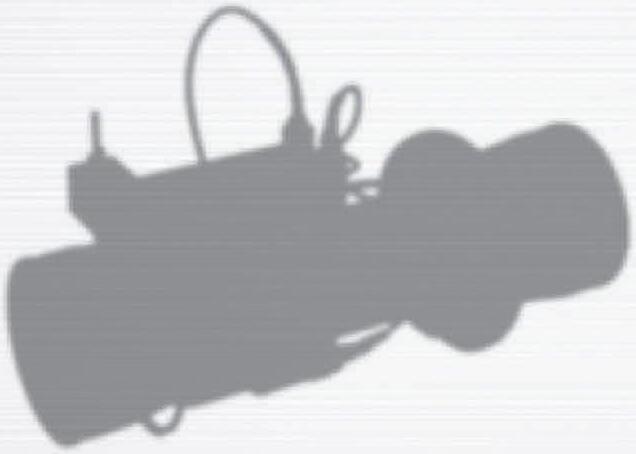










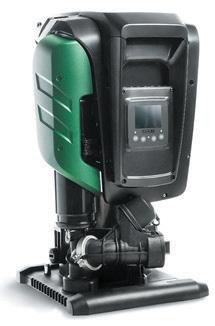

to programmed frequency.
A ground temperature monitoring system was installed at a new sewage lagoon in Nunavut, completed in 2024, to monitor a defined long-term thermal regime temperature pattern existing in the ground. The lagoon was constructed above permafrost as an impermeable containment structure by lining the reservoir and the earth containment berms with a geosynthetic clay liner (GCL). It will operate as a facultative lagoon system, with a seasonal discharge into a wetland system before ultimately discharging into the ocean. The monitoring locations were determined at the end of the construction by drilling four boreholes on three berms and equipping them with 50-mm diameter casings.
Casings were installed near the top of the berms along the outside crest and reaching below the base of the berms into the berm foundations between about 3.5 m to 6 m. GTCs were inserted into the casings, and then enclosed inside remote data housings with locking caps for protection.
A site visit was completed after the facility was commissioned for the purpose of beginning to collect temperature data at the four monitoring locations. Dataloggers were present on site, ready to be connected to GTCs for continuous data recording. However, the configuration of casings inside the remote data housings did not allow the connected dataloggers to be enclosed, leaving them unprotected. Additional housing space was required to safely initiate the monitoring systems.

The additional space was provided by pre-manufactured plywood enclosures sized to fit and protect the dataloggers. The enclosures were then fastened on top of the remote data housings and secured with a steel cable wire weaved in and out through pre-made openings, tightened with plywood inserts and locked.
The initial manual data collection was completed using a multimeter and a switch box to collect temperatures at the four monitoring locations. Although intended to be redundant, the manual readings helped confirm that one of the GTCs was dislocated inside its casing. Temperatures calculated from the manual resistance readings slightly differed from the ones measured with a datalogger, suggesting the readings were taken at different depths.
A further conclusion was that the GTCs were not backfilled in their casings. Although having an advantage of being replaceable, loose GTCs could be inadvertently lifted during data collection or servicing, or have convective air flow present in the casings. Mitigation of these issues could include installing spacers on GTC cables between the thermistor probes to limit convective air flow and create some friction between the GTC cable and casing wall.
One of the first sets of data logger data collected from the ground temperature monitoring system was completed during a site visit. Data downloaded from the dataloggers provided insight into the ground thermal regime in the berms and their foundations in mid-November at the completion of construction, and confirmed that the monitoring system set-up was working.
assessments of the lagoon performance. It has been stated that an impervious berm structure, such as a dam (Johnston, 1981), is influenced not only by the water temperature on the upstream face but also by the effects of the climate over the remainder of the dam surface and freezing devices. Thawing will penetrate mainly downward only under the reservoir and the upstream slope, and later-
ally into the structure and foundation. As the lagoon continues to operate, the collection of thermistor data will provide insight into the operation of the current site under investigation, and insight for the design of future lagoon systems.
Renata Klassen is with EXP Services Inc. Email: renata.klassen@exp.com

Monitoring Solution with stainless steel pipes for ideal process water conditions and reliable conductivity values to protect your electrolyzer. a sustainable like kayaking. skilled partner, you the right decisions.
The berms have experienced one winter. All the temperatures recorded were below 0°C or slightly below 0°C. The warmest temperatures were about 2 to 3 m below the existing ground surface, irrespective of the berm height. The temperatures of the bottom thermistor beads, located about 8 to 8.5 m below the top of the berms, varied between −5.6°C and −4.0°C.
Despite the expectation that permafrost will not be preserved in the lagoon structure, ground temperatures in the lagoon containment berms and the berm foundation are of interest for future
Reaching a sustainable future is like kayaking. With a skilled partner, you can make the right decisions.
Reaching a sustainable future is demanding in many ways. Obstacles and change must be well anticipated to make the right decisions. We are ready to tackle these challenges with you! We will help you to improve your processes to meet specific production requirements, operational optimization, or sustainable manufacturing efforts. Let’s team up to improve!
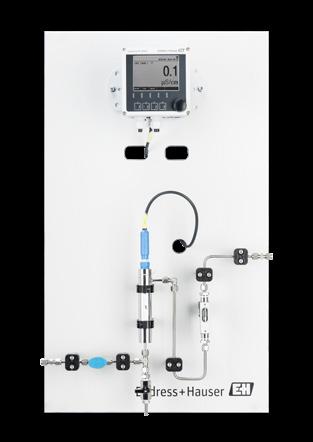
Do you want to learn more? www.ca.endress.com
By Rich MacGregor
The growing trend towards above ground pump stations is transforming wastewater collection systems, empowering operators to rise above the challenges of conventional submersible pumps.
This strategic move simplifies maintenance by making the equipment more accessible and eliminates the need for workers to enter dangerous, confined spaces, thus improving safety.
Additionally, it reduces wear and tear on equipment and minimizes breakdowns. By dramatically improving reliability, pump efficiency and longevity, the increasing adoption of above ground

systems aligns with sustainability goals by eliminating the costly problems of frequent stocking, replacement and disposal of submersible pumps.
The longevity of above ground pump stations is evident in their decades-long

lifespan, markedly outperforming the brief lifespan of a few years typical of submersible pumps. The longer service life and easier maintenance add up to a significantly lower total cost of ownership.
Pumps in state-of-the-art above ground lift stations operate reliably for more than 20 – 30 years, with basic maintenance. This durability stands in stark contrast to the typical lifespan of submersible pumps, which ranges from three to seven years.
Operations and maintenance are also radically streamlined. After opening the enclosure, a single operator can visually inspect pumps, valves, and other mechanical components in seconds and can access the impeller or mechanical seal in a few minutes, without the need to clean sewage off the equipment. And, because of the vertical construction, there are no sewage spills when the pump is opened because the wastewater falls straight back into the volute and into the wet well.
Above ground packaged lift stations have proven to be more economical than submersible pump systems because of

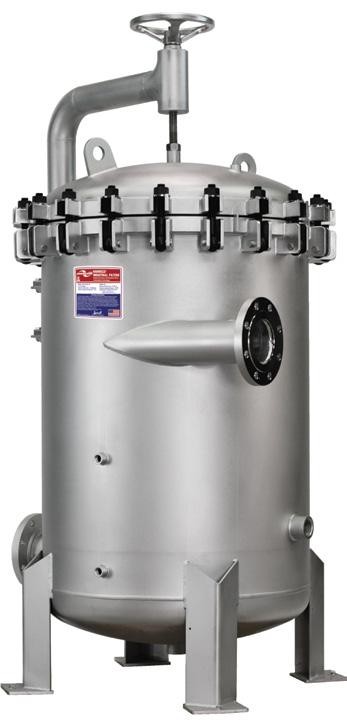



lower installation costs, reduced operation and maintenance expenses, and a longer system lifespan.
Unlike submersibles, above ground pump stations are fully pre-assembled and rigorously tested as complete systems before shipment. This advantage significantly cuts down on the time and labour required for on-site piping, electrical work, and testing.
Furthermore, procurement expenses can be lower with packaged systems, as they come equipped with many components that would otherwise have to be acquired separately. In contrast, submersible pump systems necessitate additional elements such as a guide rail assembly, pump lifting gantry, lifting chains or cables, suction pipes, power cables, control panel, and the wet well cover. Moreover, the installation of discharge piping and valves, not to mention a valve vault and its cover to encase them, further escalates the costs.
The full life-cycle expenses of lift stations encompass time and materials for maintenance and repairs, energy effi-
ciency, downtime impact, externally contracted services, and depreciation based on the anticipated lifespan of the equipment. Routine tasks like pulling a pump to change a seal or impeller can be completed in minutes by a single operator, without the use of multiple operators, outside contractors or pricey pump maintenance centres. This contributes significantly to lower parts and O&M costs when compared to submersibles.
A published, comprehensive 12-year side-by-side study by one municipal-county utility demonstrated the life-cycle cost advantages of above ground lift stations compared to their submersible pump counterparts. Utilizing asset management software, the study meticulously recorded all maintenance and repair expenses for 53 duplex pump stations in its wastewater collection system. This enabled a comprehensive analysis of the operational and maintenance costs between 21 submersible pump stations and 32 above ground packaged systems from Smith & Love-
less, all functioning under similar conditions and applications.
The findings revealed that the above ground systems yielded nearly 56% in total cost savings. Perhaps the single most dramatic part of the study’s findings revealed that in the 12-year period, not one pump of the 32 above ground pump stations required replacement.
Above ground lift stations can be a good choice for many small and medium-sized pump station applications. These systems position the pump in a conveniently accessible and dry area to simplify design, prolong lifespan, and ease inspection and maintenance.
Rich MacGregor is a technical writer working with Smith & Loveless Inc. For more information, visit: www.smithandloveless.com



Associated Engineering is a proudly Canadian, employee-owned company. We are passionate about building vibrant, healthy, and resilient communities that support economic growth. That is why sustainability is part of every project we undertake, and how we operate our business. Together, we are shaping a better future.


By Westyn Bennington and Alicia Kadar
Transporting dewatered sludge over long distances is a significant challenge for municipal wastewater treatment facilities, due to its high dry solids content, which increases the effective viscosity making it difficult to pump. Although belt, chain, or screw conveyors are commonly used, they can come with considerable maintenance costs, including spare parts, and scaffolding for maintenance at heights.
Additionally, these open systems can cause unpleasant odours, are subject to rehydration from rain, and have the potential to cause soil contamination. Each change in direction requires an extra drive, further reducing efficiency, particularly in vertical transport. Finding alternative solutions that enhance efficiency and minimize these issues is essential.
Alternatively, one might consider the use of positive displacement pumps, such as multistage centrifugal pumps or, in certain scenarios, piston pumps. These pumps are especially adept at managing highly viscous media. However, it’s
important to note that long pipe runs generate considerable friction losses, resulting in elevated discharge pressures. Consequently, the initial investment can be substantial. The pump must be capable of achieving these high discharge pressures, and the accompanying piping and valves must be meticulously selected to meet the required pressure. However, the rewards for such precision engineering are well worth the investment, ensuring optimal performance in demanding applications.
Piston pumps in particular exhibit significant costs for replacement parts, are prone to hydraulic oil leakage, and often require routine maintenance. Their complex design with a separate hydraulic power pack typically requires specialized technicians, which can lead to prolonged downtime. They also require higher motor horsepower ratings, leading to increased energy consumption.
SEEPEX’s Smart Air Injection (SAI) system effectively addresses these drawbacks by creating a solid plug of dewa-
tered sludge compacted by a progressive cavity hopper pump in the discharge line. This sludge plug is propelled using pulsed injections of compressed air.
The plug is surrounded by a lubrication film, minimizing the frictional losses between the plug and the pipe wall, enhancing overall efficiency. The shear-thinning effect in both the lubrication fluid and the sludge reduces effective viscosities by up to 10 times compared to traditional methods, showcasing a significant advancement in pumping technology.
This internationally patented combination of progressive cavity pumping and dense phase pneumatic conveying enables a lasting reduction in discharge pressure to around 30 psi. The peak pressure during air injection correlates with the energy needed to initiate the movement of the sludge plug; generally, less than 120 psi. Once the static friction is overcome, expanding compressed air propels the sludge plug, lowering the pressure within the pipeline.




This low discharge pressure allows for the use of lower pressure-rated pipes and components, significantly reducing investment costs over long distances. Additionally, compact, single-stage progressive cavity hopper pumps with lower pressure ratings provide fewer maintenance expenses and enhanced energy
efficiency, offering an effective and cost-saving solution for modern conveying challenges.
Westyn Bennington and Alicia Kadar are with SEEPEX-Ingersoll Rand Email: westyn.bennington@irco.com, alicia.kadar@irco.com





By ESE Staff
Arecent federal report that found PFAS as a class of chemicals to be harmful to human health and the environment, signals Canada moving towards labelling “forever chemicals” as toxic, a designation that creates wide-reaching implications for a number of common consumer products.
While taking steps toward adding PFAS to Part 2 of Schedule 1 under the Canadian Environmental Protection Act, 1999 (CEPA), Environment and Climate Change Canada announced that Phase 1 of its PFAS crackdown over 2025 will begin with public consultations for firefighting foams and the promotion of safer alternatives for firefighters.
Regulations for a ban on firefighting foams could be ready by spring 2027, the report states.
For decades, per- and polyfluoroalkyl substances (PFAS) have been used specifically in some synthetic Class B firefighting foams, including aqueous film-forming foam, due to their ability to serve as surfactants that spread the foam to cool and suppress the fire. In Canada, former training sites where foams were used have been one of the more common sources of extensive PFAS contamination.
Of the more than 100 federal sites documented for confirmed or suspected PFAS contamination, across Canada, almost all have past or current connections with firefighting foams, the new report states. These foams are also used in industries such as oil, gas, and mining.
The new report states that Phase 2 of the enhanced federal focus will be to limit exposure to PFAS in products that are not needed for the protection of human health, safety, or the environment. Consultations to develop PFAS regulations could begin in 2027 for
Credit: VectorMine, stock.adobe.com
products like cosmetics, food packaging, and textiles. PFAS are added to some cosmetics, such as foundations, moisturizers, lotions and creams, to improve penetration of other ingredients into the skin, enhance brightness, and increase the durability of makeup.
Since January 29, Canada has also required manufacturing and other facilities to report the use of PFAS to the National Pollutant Release Inventory. This data is intended to improve understanding of how PFAS are used in Canada, help evaluate possible industrial PFAS contamination, and support efforts to reduce environmental and human exposure to harmful substances.
The public can comment on the federal Risk Management Approach and the Proposed Order to add the class of PFAS, excluding fluoropolymers, to Part 2 of
Schedule 1 to CEPA, until May 7, 2025. Fluoropolymers have been excluded from the State of PFAS Report as current evidence suggests they may have different exposure and hazard profiles compared to other PFAS. PFAS meeting the definition of fluoropolymers are planned for consideration in a separate assessment.
For more information, email: editor@esemag.com


April 29 – May 1, 2025
The Venetian Banquet & Hospitality Centre Vaughan, ON
ENVIRONMENTAL COMPLIANCE AND DUE DILIGENCE TRAINING EVENT

“Always money well spent attending CANECT to stay up to date on environmental issues.” — ERCO Worldwide




For over 30 years CANECT courses have helped to shape the expertise of Canada’s environmental managers, practitioners, and supervisors.
Recent years have seen an increased trend in environmental enforcement as well as record-setting fines and penalties for environmental violations in Canada.
Update your knowledge of new regulations and obligations
Networking opportunities
Connect with industry experts and speakers
Earn hours toward Continuing Professional Development requirements
Maintain your organization’s due diligence
SAVE OVER $230 when you register with promo code ESE15. For information on group discounts or courses, contact Denise Simpson, 905-727-4666, Ext. 21, denise@esemag.com
By David Nesseth
Halifax Water says it’s working with municipal and provincial partners to clarify protocols for issuing alerts and notifications, following a recent boil water advisory that many people say took too long to circulate and gain attention.
In a post-incident review of its twoday boil water advisory (BWA) in January, the utility provided a fuller view of its customer communications process, as well as its own communications process with Nova Scotia Power (NSP).
The review, submitted to the Nova Scotia Utility and Review Board on February 4, emerged over frustrations around the public notification process for the BWA, particularly the use of alerts. Only those people and businesses that signed up for Halifax’s HFXAlert system would have received the alert, whereas some senior government officials wondered why an “intrusive” provincial alert wasn’t sent, as it would not be sent just to HFXAlert subscribers.
“Depending on the magnitude of the impact on Halifax Water’s systems and customers, the tactics used may vary,” states Halifax Water’s review. “Still, the objective remains the same — to be our customers’ first and most accurate source of information.”
Both BWAs issued by the utility within the last seven months related to interruptions of primary chlorine disinfection, which helps to eliminate the potential risk of microbial contamination. All treatment requirements, except for disinfection, were met in both incidents.
Ultimately, a number of the more than 200,000 residents and businesses impacted by the January BWA were not made aware of it, with many taking to social media to vent their frustration. Some expressed dismay with the facility’s readiness for such a power loss, while others resurfaced the fact that the utility had only a month earlier revealed that it had ceased fluoridation for signif-

this year, Halifax residents were
stock.adobe.com
icant periods of time at two water plants without informing the public.
“Regaining public trust will take time, and we are committed to putting in the effort required,” said Halifax Water CEO and General Manager, Kenda MacKenzie, in a media statement accompanying the post-incident review.
The most recent BWA issued on January 21 occurred when the J.D. Kline Water Supply Plant did not have final disinfection with chlorine for 66 minutes. The HFXAlert was sent to subscribers at 6:45 a.m., approximately eight hours after the power loss, and when many people would already have started their mornings and drank water.
That municipal alert came one hour after the utility provided a program alert to The Weather Network and two hours after Halifax Water posted the BWA to its website and social media channels at 4:46 a.m.
Despite the delay, Halifax Water assured in its post-incident review that “the BWA was issued and communicated to custom-
ers through multiple pathways before the unchlorinated water reached the first customer in the distribution system.”
In terms of utilizing the provincial alert system, Halifax Water states that its use is “based on the magnitude of the event and the risk to public health and safety.”
Halifax Water states that The Weather Network messaging was considered to be a “non-intrusive” use of the provincial alerting system for the Halifax area. The non-intrusive alert was issued as there was “no imminent threat to human life,” the utility stated.
“The protocols for notifications are still being formalized, which is why Halifax Water is working with the municipality and the province on a more standardized approach,” states the utility in an FAQ post about the January BWA.
Notably, the first outreach regarding an alert of any kind was to the Halifax Regional Fire and Emergency Deputy Chief, who was contacted “to initiate an alert message” at 3:37 a.m. While
it’s not unusual for the Halifax Regional Fire and Emergency social media to post dozens of times each day, there was no mention of the BWA, even following the web and social posts from Halifax Water.
Social media, though, connects to a wider aspect of the BWA incident, according to the review. The J.D. Kline Water Supply Plant only became aware of a planned outage from Nova Scotia Power (NSP) because an off-duty operator happened to see a social media post about it and contacted the operator on duty two hours ahead of the planned outage, according to Halifax Water’s review.
“NSP notified Halifax Water of the planned outage through their auto dialer system. Contact was not made directly with the [facility] staff ahead of the event, as the phone numbers on file for the autodial notification process for the facility were not active,” Halifax Water states.
Halifax Water further notes in the review that it is working to improve its

Only those people and businesses that signed up for Halifax’s HFXAlert system would have received the water alert. Credit: Halifax Regional Municipality
overall communications process with NSP, including phone number updates and general protocols.
While the NSP outage didn’t directly relate to issues with the water facility’s backup power (control fuses were blown on the transformers for both service

water pumps), Halifax Water notes in its review that it still wasn’t clear about whether the planned outage would impact the water facility.
“Once aware, as a precaution, the operator took steps that were feasible within the time before the planned outage to prepare the plant to ensure continuity of service, which included transferring between raw water pumps,” the review states.
Halifax Water indicates that it will transition to emergency backup power ahead of planned outages in the future to “ensure a more seamless transition and minimize risk to the facility’s electrical infrastructure.”
Notably on January 27, the review states that the water facility’s backup hypochlorite system pumps switched to use an uninterrupted power supply that eliminates the need for a portable battery generator.
David Nesseth is with ES&E Magazine. Email: david@esemag.com



























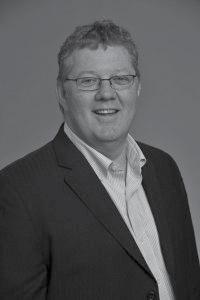




By Claire Foran
After decades of service, a vital wetland at Lake Laurentian Conservation Area (LLCA) in Sudbury, Ontario, faced increasing challenges which threatened wildlife, flood control, and community recreation.
The area’s distinctive topography, characterized by exposed bedrock and shallow soils, limits its capacity to absorb excess rainwater. As a result, wetlands play a critical role in flood and erosion control. With little soil to retain water, the region’s numerous wetlands are relied upon to help manage and mitigate the impact of rainfall and runoff.
First constructed by Ducks Unlimited Canada (DUC) in 1992, the original wetland at LLCA was created by building a dam to restore and sustain the marsh for waterfowl and other wildlife. Over three decades later, maintenance and rehabilitation efforts were required to ensure the long-term functionality of the wetland, which plays an essential role in the community for flood mitigation and water quality.
In early 2024, DUC and Conservation Sudbury partnered to rehabilitate a dam in the northeast portion of the LLCA and by October 2024, the project was complete, marking the restoration of the vital 16-hectare marsh.
This project ensures the continued ecological health of the area, while benefiting local wildlife and the community. The Lake Laurentian Conservation Area can be found a short 10-minute drive south of downtown Sudbury. The wetland is part of the larger LLCA that spans over 960 hectares and boasts more than 60 kilometres of recreational trails. These trails, popular for hiking, biking, snowshoeing, and cross-country skiing, attract more than 20,000 visitors annually.
“The Lake Laurentian Conservation
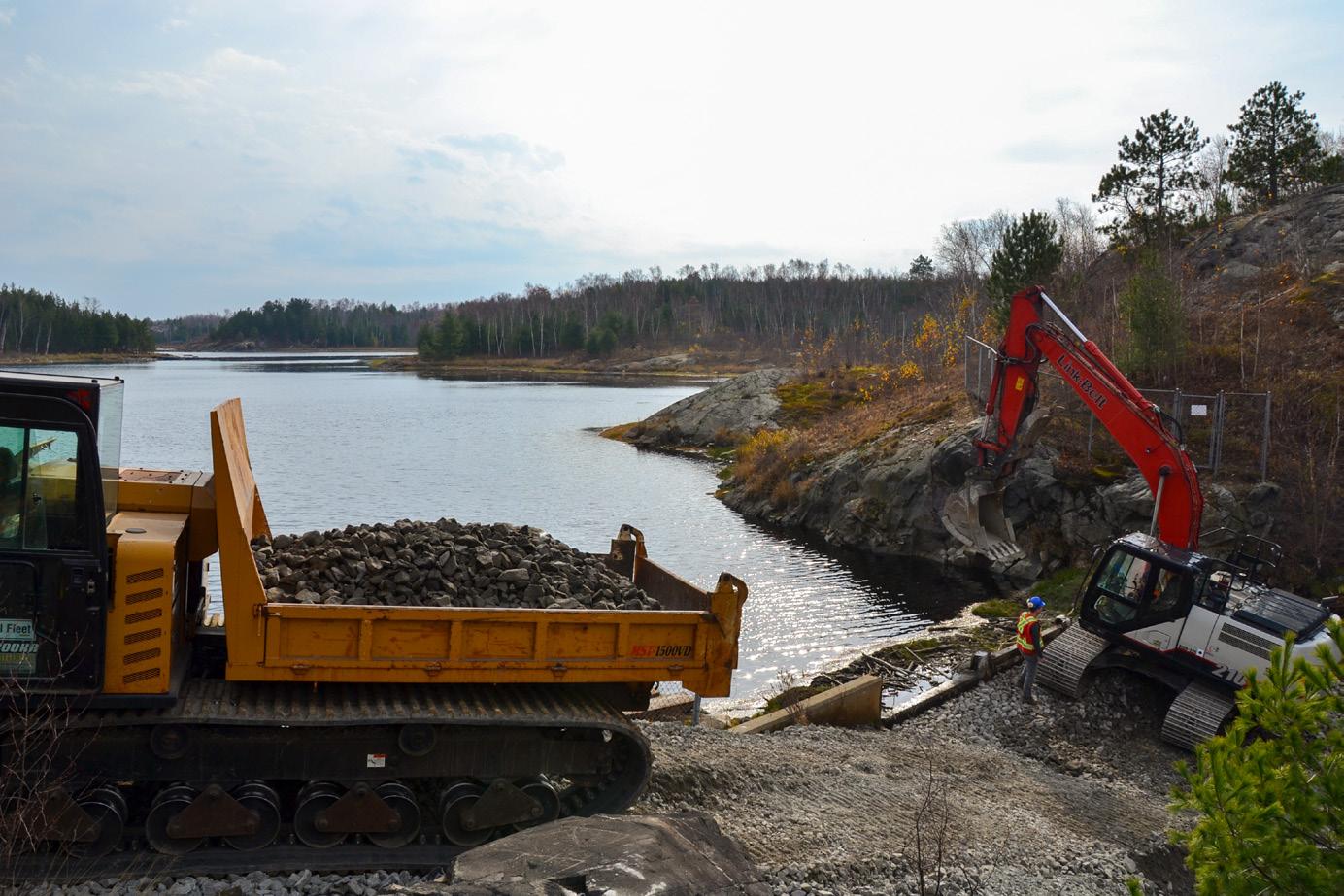
Area is a unique and invaluable treasure in Ontario’s natural landscape, says Marie-Paule Godin, DUC’s Manager of Provincial Operations for Ontario. “Beyond its beauty, it’s a critical resource for wildlife, flood mitigation and climate resilience. By working with Conservation Sudbury, we’re ensuring that this vital wetland continues to support both nature and the thousands of people who rely on it for recreation and wellbeing.”
Conservation Sudbury is one of Ontario’s 36 community-based, watershed stewardship agencies. It is responsible for hazard land management such as floodplains and wetlands, flood and erosion control, stewardship of conservation authority owned lands, and drinking water source protection.
According to Conservation Sudbury General Manager Carl Jorgensen, “the rehabilitation process has been a true partnership, with both Ducks Unlimited
Canada and Conservation Sudbury collaborating closely to protect the ecological integrity of the site by minimizing any impact on the existing wetland.”
Through this partnership, the restoration project will ensure that the wetland remains an integral part of the local ecosystem for years to come. It will continue to provide valuable habitat for waterfowl, fish and other aquatic wildlife, while enhancing biodiversity in the region.
The work was funded by the Province of Ontario through the Wetlands Conservation Partner Program and implemented by Ducks Unlimited Canada, in collaboration with Conservation Sudbury and local contractor Bruce Tait Construction Ltd.
Claire Foran is with Ducks Unlimited Canada. Email: c_foran@ducks.ca
By ES&E Staff
Earlier this year, crews began berm and steel sheet work to protect the Greenway Wastewater Treatment Plant from flooding in London, Ontario.
It is one of two flood protection and climate change mitigation projects underway, as officials invest some $50 million to protect the Greenway plant and the Adelaide Wastewater Treatment Plant, two of the five local WWTPs.
At the Greenway plant, many essential components are located within the floodplain, according to municipal officials, who are concerned about equipment damage from rising water levels in the Thames River, as well as the environmental impacts associated with the bypass of

untreated or partially treated wastewater for several days after intense rainfall.
An effluent pumping station is also set to be added to the Greenway facility to allow discharge even during a flood. “The current elevation of the outlet pipe
conveying treated effluent from the WWTP is located significantly below the elevation of the regulatory storm flood level,” according to a 2022 flood protection report by Matrix Solutions Inc. The typical flood depth at the Greenway plant is 0.5 m.
Similar plans for berms and a pumping station are set for the city’s Adelaide facility, which is within the regulatory floodplain of the nearby Thames River.
A flood barrier was constructed at the city’s Vauxhall Wastewater Treatment Plant several years ago.
In April 2019, London declared a climate emergency to deepen its commitment to protecting its economy, ecosystems and communities from climate change through adaptation and mitigation initiatives. The city secured federal funding through the Disaster Mitigation and Adaptation Fund for the WWTP flood protection upgrades.
For more information, email: editor@esemag.com

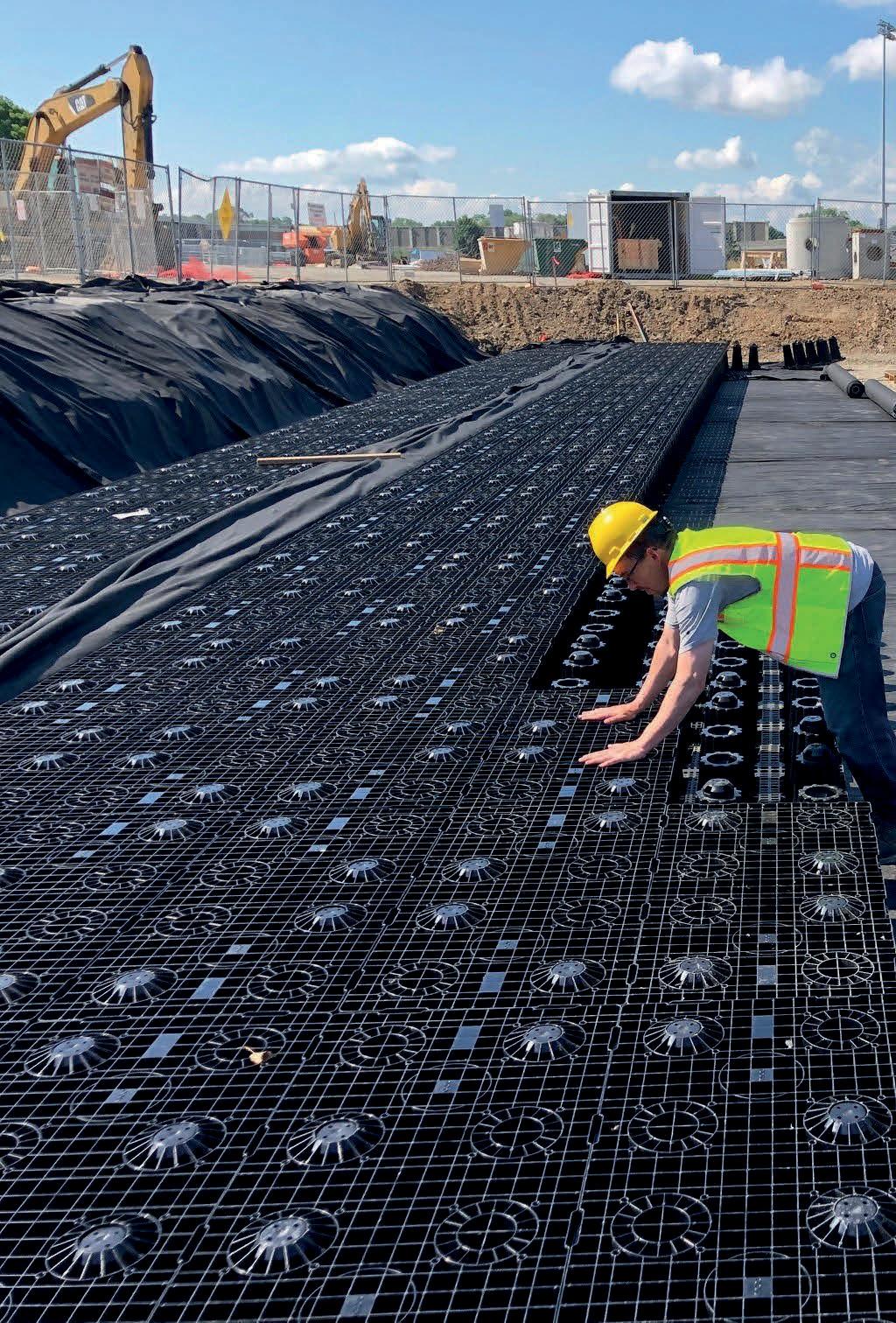


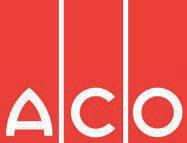
The Highland Creek Treatment Plant (HCTP) is one of four wastewater treatment facilities operated by the City of Toronto. Located at the mouth of Highland Creek in the Scarborough community of West Hill, it began operations in 1956. The plant has a rated capacity of 219 megalitres per day and serves a population of approximately 533,000. HCTP’s final effluent discharges to Lake Ontario through an outfall pipe that extends approximately one kilometre into the lake.
A $101.5 million modernization and upgrade is underway for the plant’s liquid train facilities that will see some elements replaced, including the phosphorus removal system, and associated ferrous chloride dosing building. The project required extensive upgrades of both single-wall and double containment piping systems through HCTP’s liquid train facilities.
Phase 1 of the liquid train upgrade project is well underway, with the installation of IPEX process piping systems partially completed.
IPEX’s Xirtec PVC single-wall and Guardian & ClearGuard double containment piping systems will upgrade the existing chemical feed systems, and reroute them through underground service tunnels to a future plant.
The existing plant must continue to be operational until the new one is up and running. This upgrade project is among the larger double containment installations within the plant and will prepare for the expansion necessary for the new plant.
Personnel travel the long service tunnels, where various process piping, utilities, and equipment are located. Protecting against leaks in the ferrous chloride feed system within these tunnels is critical for health and safety and equipment protection purposes.
In the unlikely event of a leak in the carrier piping system, the containment piping system prevents a release of highly corrosive ferrous chloride into the surrounding environment. The transparent Clear-Guard containment pipe in conjunction with IPEX’s Centra-Guard™ visual low-point leak detection stations, provides the ability to visually inspect for and address leaks.
This is an important safety feature in certain areas of the tunnel. The Guardian system features a patented Centra-Lok™ design that reduces the required field joints by 40 – 60% compared to traditional double containment piping systems. This minimizes the number of connections and therefore, the potential for failures and leaks, while reducing installation and maintenance costs.
The system is also available in spool piece fabrications according to specific application designs.
Xirtec PVC single-wall piping systems are being used within the ferrous chloride dosing building, which acts as a dedicated containment structure to prevent a potential release of the chemical to the surrounding environment in the event there
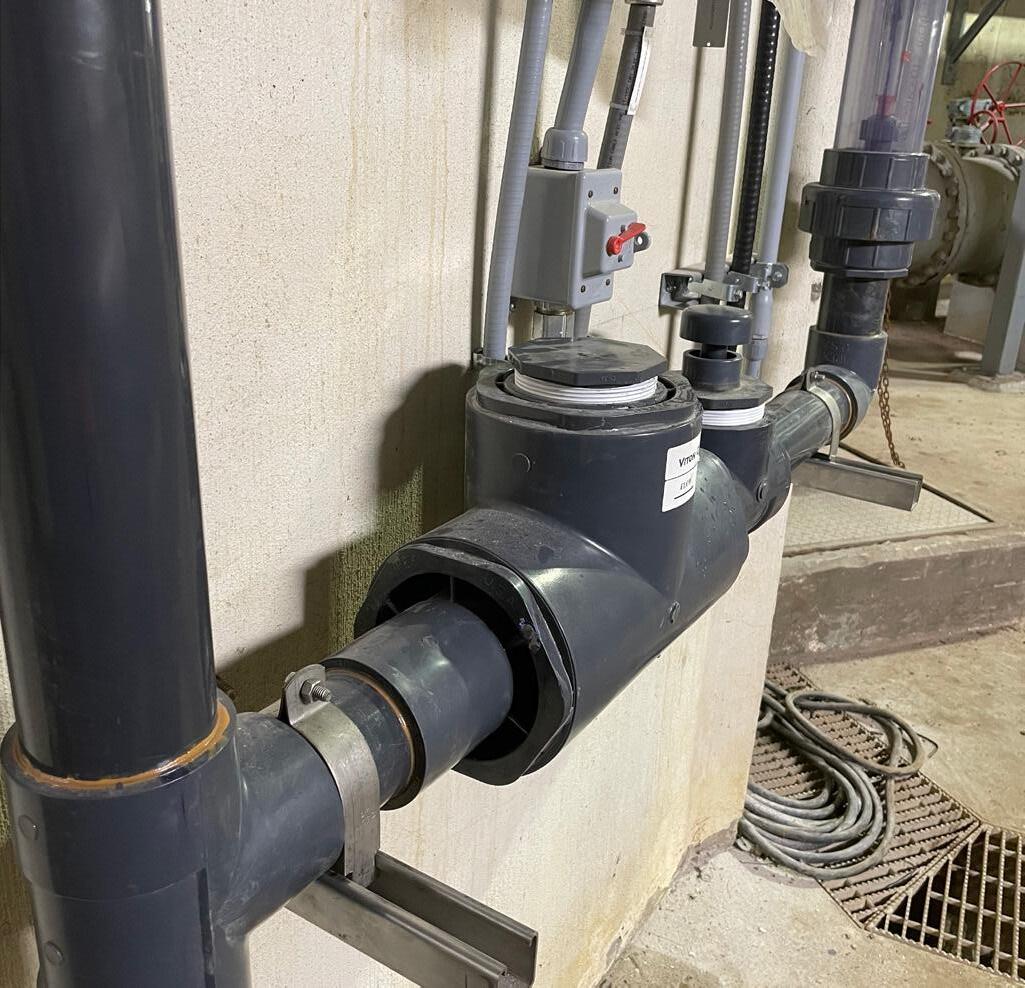
years.
is a leak in the system.
Xirtec piping systems are available in both PVC and CPVC Schedule 40 and 80 thicknesses, ranging from 6-mm to 53cm diameters, and feature full solutions of pipe, valves, fittings, solvent cements and accessories.
IPEX single-wall and double containment piping systems have been successfully operating at the Highland Creek Treatment Plant for many years, and with the new piping systems being installed as part of the liquid train upgrades and new plant construction, HCTP is poised to safely and reliably serve its community for many years to come.
IPEX sales representatives began talking with the project contractor Bennett Mechanical in March 2021 about double containment solutions. Bennett’s installers were given hands-on jobsite training in specialized double containment solvent welding. IPEX also provided product and technical support early in the project.
For the Highland Creek Treatment Plant, IPEX created specialized double containment assemblies that included ball valves, needle valves and accessible rotameters for several critical areas of the ferrous chloride feed system.
For more information, visit: www.ipexna.com

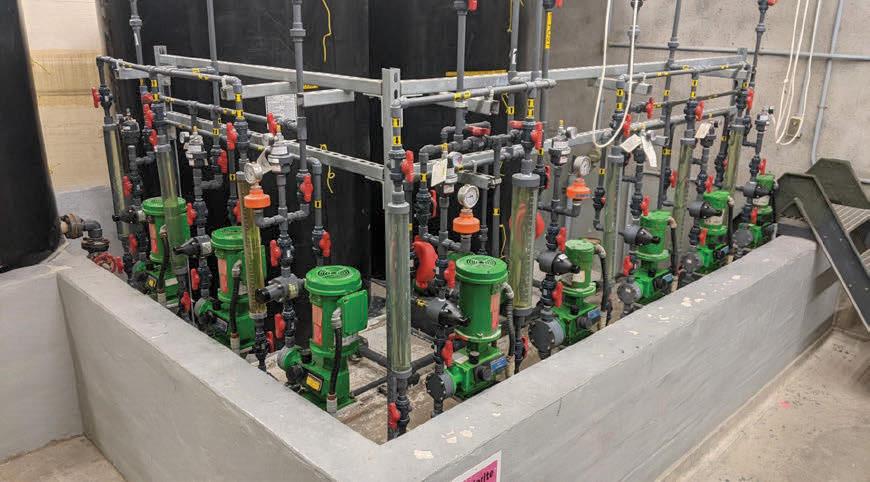
THE EVOLUTION OF THE CHEMICAL

BEFORE complex. cluttered.
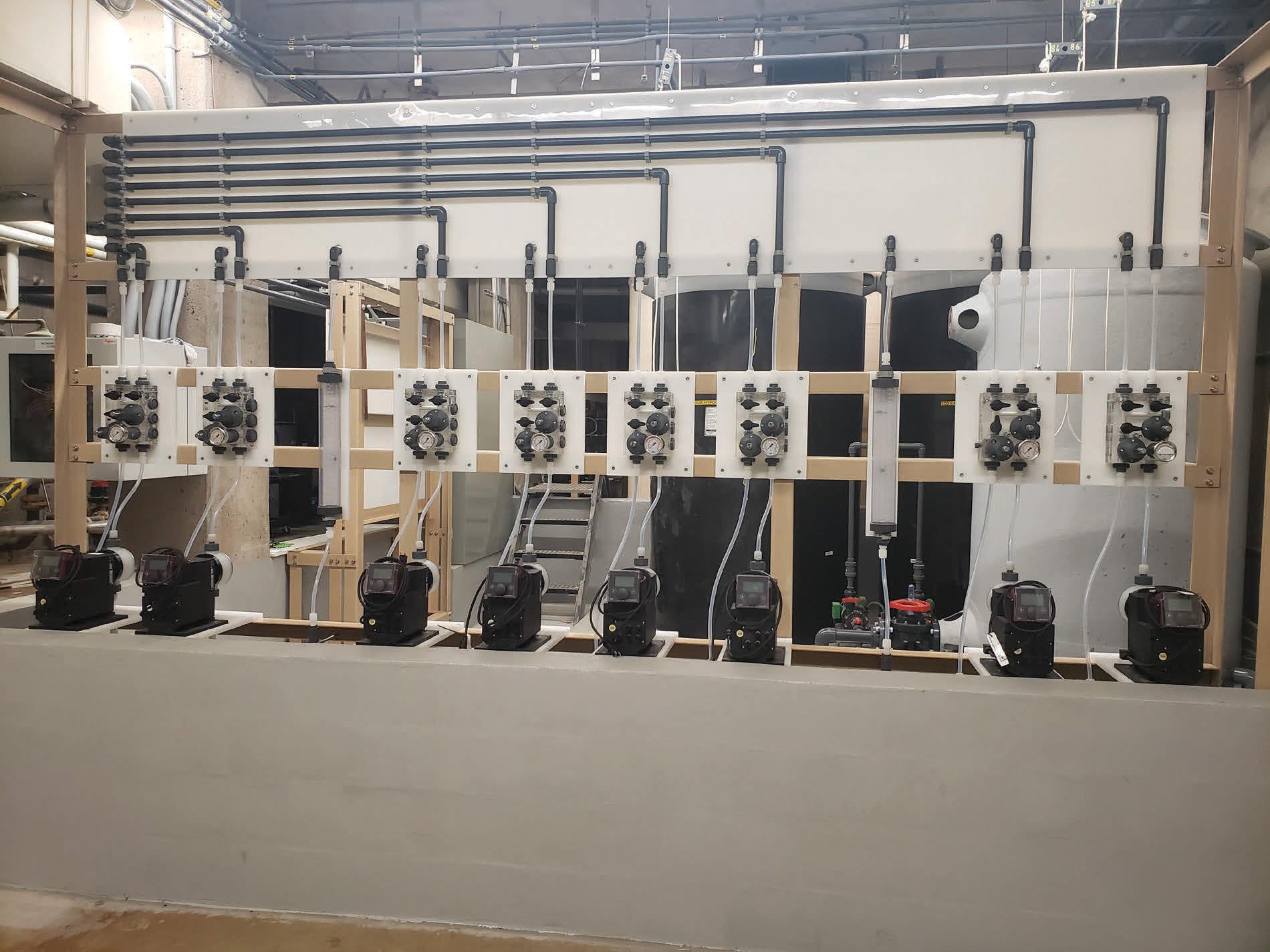

AFTER simple. intuitive. Made in Canada!

Up to 50% reduction in mechanical room space required 90% fewer joints = 90% less risk of leakage
Simple, consolidated operation
Support Canadian Industry - Buy DICE
By Mark Gimson
Choosing the appropriate isolation valve for a municipal water system is crucial, as it significantly affects the system’s efficiency, reliability, and maintenance requirements. These valves are typically operated in either a fully open or fully closed position, serving to control water flow within the network.
Among the various options available, gate valves and butterfly valves are the most frequently employed for isolation purposes in municipal water systems. Check valves also merit consideration for specific applications. While less common, eccentric plug valves may be selected in certain scenarios, though they are more typically associated with raw water or wastewater applications due to their ability to function effectively even when small particles are present in the pipeline.
For smaller pipe diameters, ball valves present a cost-effective option, although they generally have a shorter lifespan compared to other valve types.
When deciding on the most suitable isolation valve for a particular situation, water system managers and operators must weigh numerous factors.
One of the most important considerations is the fluid that is going through the valve. Is it raw water that may have debris or treated water that may have chemicals? Does the water system treat with free chlorine, ozone, or chloramines for disinfection? Buna-N and EPDM elastomers are the most widely used in the industry. Some believe that EPDM holds up better with chloramine use.
What is the temperature and pressure, as the valve must be able to withstand the system’s operating conditions?

An advantage of a butterfly valve is that the lay length is shorter and they are generally less expensive than gate valves.
The size of the line that the isolation valve will be in is another important consideration to maintain pressure integrity and prevent leaks. Gate valves are most often used on lines up to 300 mm in diameter and are available with flanged connections and mechanical joint connections, along with several different connection combinations. Gate valves are full port, multi-turn resilient wedge valves that have either a handwheel operator or, on buried service, a gear operator and 50-mm operating nut
Gate valves are often used as isolation valves on the inlet of a flow meter as they are full port valves with no obstruction in the line and do not count against the meter’s upstream/downstream requirements for accuracy. Another advantage of a gate valve is that in most cases by exercising the valve, you will ensure a complete shutoff.
The common alternative to a gate valve is the butterfly valve. These valves are most often used in 75-mm through 3,600-mm pipe-diameter water systems.
Like gate valves, they are available in both flanged and mechanical joint connections. One advantage of a butterfly valve over the gate valve is that the lay length is shorter and the larger the pipe size, the greater that difference is. The benefit of a shorter lay length is that the valve can reduce the footprint of the piping design.
Butterfly valves are quarter-turn lever operated and available through 200-mm pipe diameter with gear and handwheel, or gear and a 50-mm operating nut for 200-mm and larger. Butterfly valves are generally less expensive than gate valves. A disadvantage of a butterfly valve is that it has the shaft and disc in the pipe flow. This means there is a permanent obstruction to flow, which is why they are used on clean water systems only.
The last type of common waterworks isolation valve is the check valve or non-return valve. The purpose of a check valve is to prevent reverse flow in
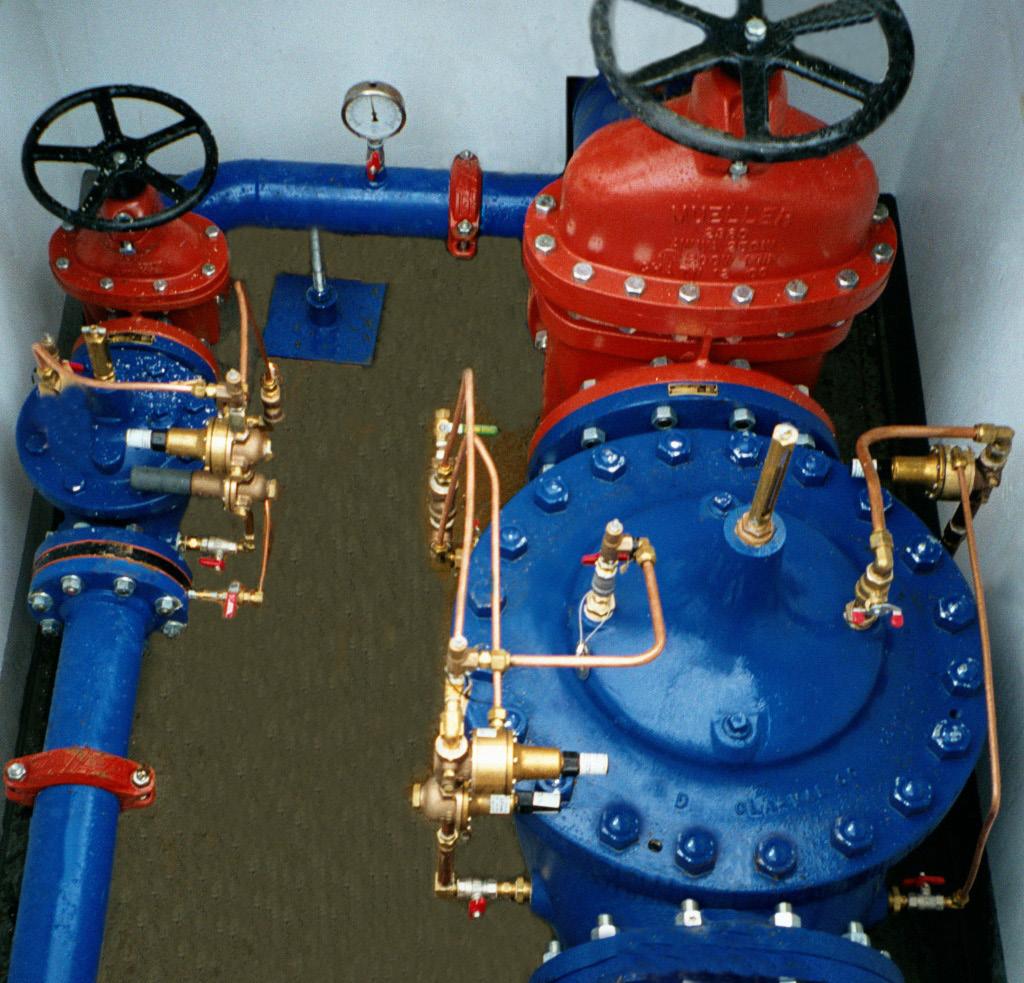
Regardless of what valves are being considered, it is important to make sure that they meet appropriate standards.
a pipeline. There are many different styles of check valves that are available for a water system. The common choices range from lever and weight, lever and spring, silent check, dou ble disc check, wafer swing check, flex check and a tilted disc check valve. All of these check valve options have their partic ular benefits and the application that they are best suited for.
Lever and weight and lever and spring check valves are the most common check valves that are in use. These check valves can be provided with oil cushion or air cushion closure. A potential benefit of the lever and weight or lever and spring is that an operator can physically open the check valve by uti lizing the lever on the side of the valve. This enables them to see if there is anything trapped underneath it if the flow slows.
Silent check valves are most used on the discharge of pumps and are resilient seated to minimize noise upon closure. A down side to this valve is the added head loss across the valve. Under standing and calculating this head loss is essential for design ing efficient piping systems and ensuring the valve chosen can maintain the desired flow rate and pressure within the system.
Tilted disc check valves are commonly used in high-service pumping applications where head loss is critical. These have a very low head loss and can be furnished with top and bottom oil-filled dashpots that allow controlled closure of the valve.
Flex check valves or rubber flapper check valves may be the most versatile check valves and can be used in both water and wastewater applications. There is one moving part, which is the Buna encapsulated flapper, making it an easy to clean hard-wearing valve. The valve can accommodate a position indicator, allowing plant crews to determine a valve’s position quickly and easily by the visual indicator, and also a backflow actuator for preventing contaminants from entering the clean water system.
Regardless of what isolation and check valves you are con sidering, it is important to make sure that the valve selected meets the appropriate standards for drinking water and the appropriate AWWA standards for the valves.

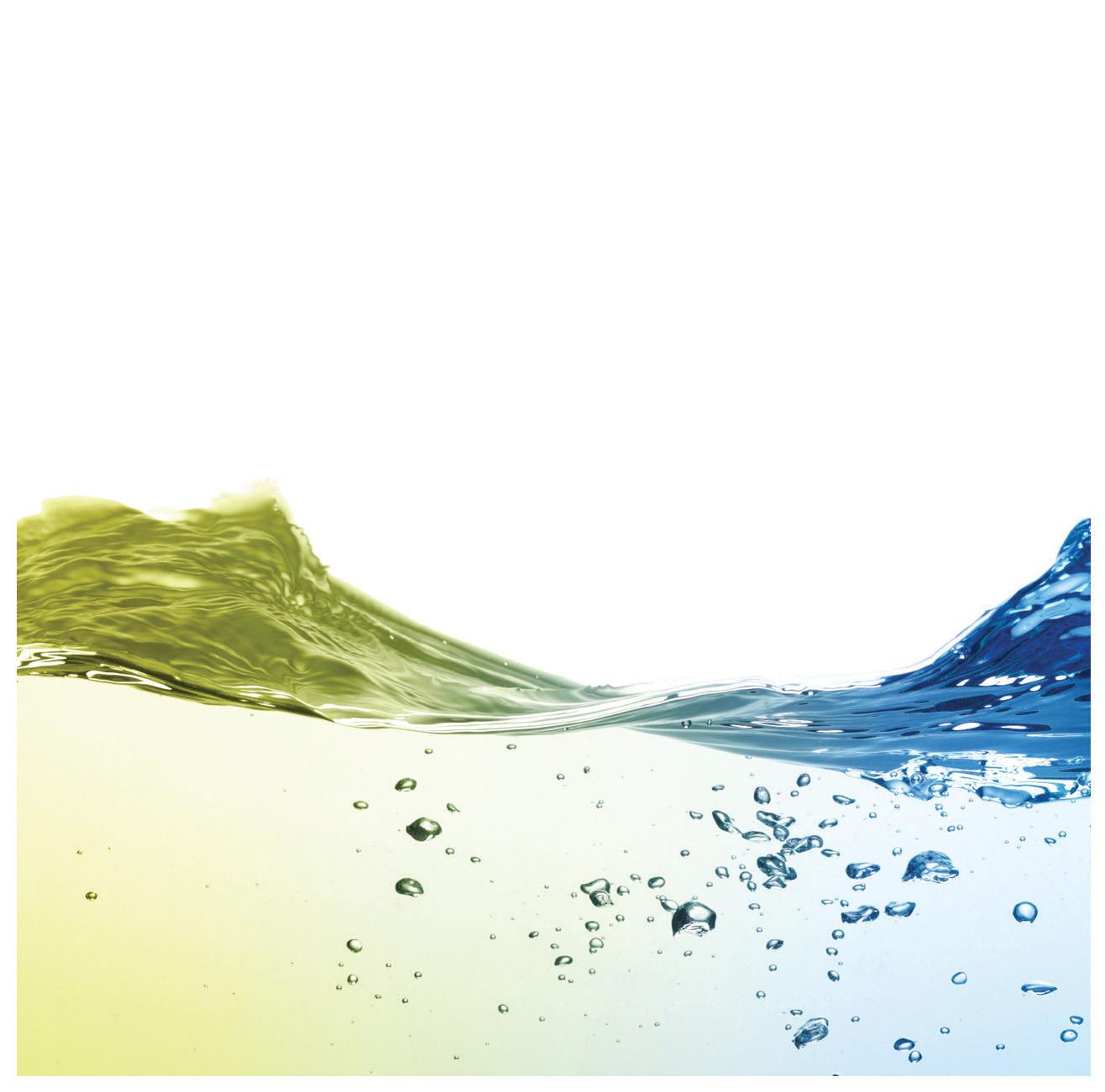
Mark Gimson is with Cla-Val, who have representatives across Canada. For more information, visit: www.cla-val.com
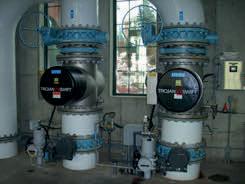

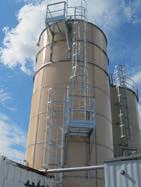

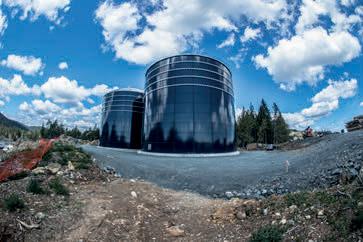
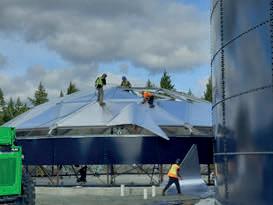

Expanded testing requirements could cost businesses $900K per year
By David Nesseth
Quebec has introduced stricter regulations for biosolids to address growing concerns over PFAS contamination.
Despite opposition from regional mayors in eastern Quebec, who sought more time for consultation, the new Fertilizing Residual Materials (FRM) Management Code was published on March 12.
While provincial data shows that biosolids contribute significantly to crop fertilization and soil health, with approximately one million tonnes applied to farmland in Quebec each year, the regional mayors emphasized the need for even more
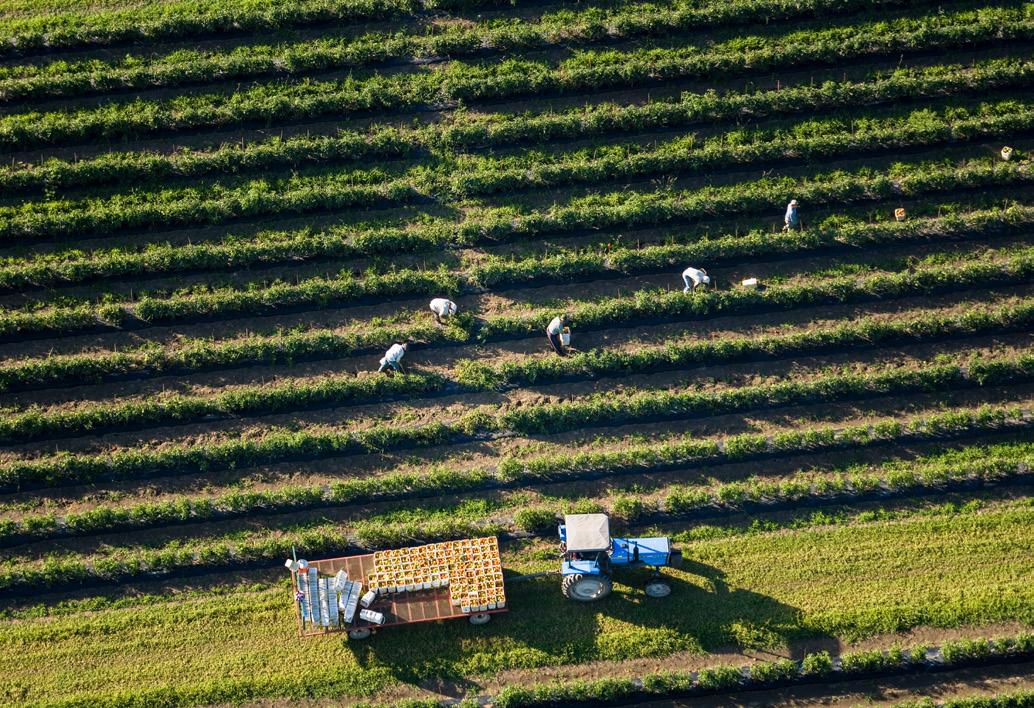
While biosolids contribute significantly to crop fertilization and soil health, with approximately one million tonnes applied to farmland in Quebec each year, a group of regional mayors in eastern Quebec emphasized the need for enhanced oversight, particularly for PFAS. Pictured are farmers in Saint-Timothée, a former city located in the Montérégie region of Quebec. Credit: Overflightstock, stock.adobe.com
enhanced oversight for per- and polyfluoroalkyl substances (PFAS), a class of persistent chemicals found in many everyday consumer products.
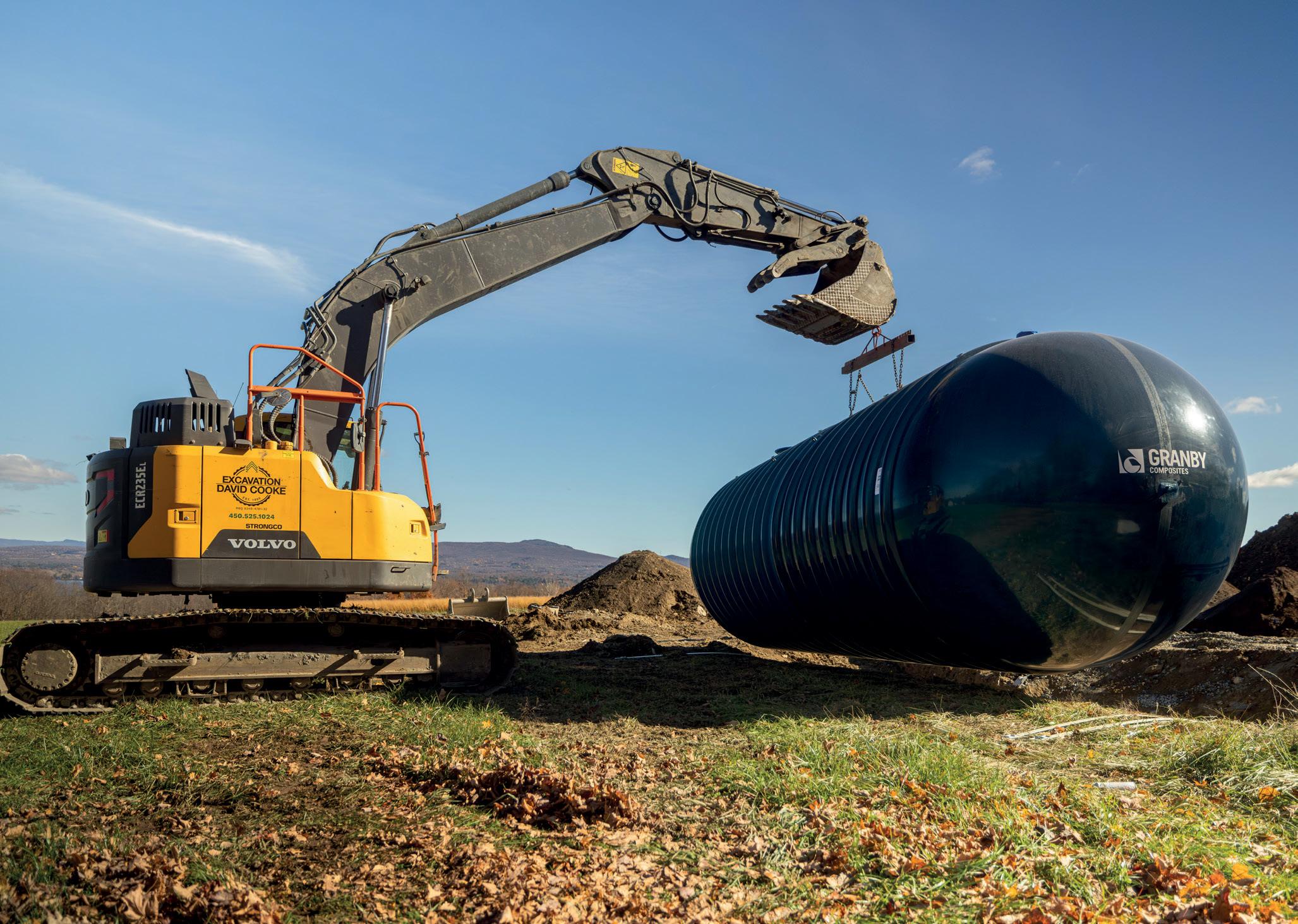
Granby Composites fiberglass water tanks deliver proven longevity and minimal maintenance, making them a smart investment for decades to come.
They are expertly engineered and tailored to meet your specific drinking water & wastewater storage requirements. They hold up to 42,000 gallons (157,000 liters).

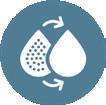
The updated regulations, which come into force on November 1, set limits for 13 PFAS compounds and introduce a new “preventive investigative criteria” category for emerging contaminants. Provincial officials say that these changes will enhance transparency and public confidence, though some municipalities worry they don’t go far enough in covering a wider range of PFAS compounds.
In addition to PFAS monitoring, Quebec’s revised FRM Management Code introduces new testing requirements for calcium, magnesium, sulfur, and sulfate in biosolids. Expanded testing requirements under the code are projected to cost businesses nearly $900,000 annually, although the Quebec Ministry of the Environment, the Fight Against Climate Change, Wildlife and Parks estimates that reductions in administrative burdens will offset about $100,000 of this expense.
Despite these costs, the ministry emphasizes that, “PFAS analysis is necessary for the social acceptability of projects,” given public concerns and the tightening of recovery markets due to PFAS contamination.
The timing of the new regulations coincides with broader national and international efforts to address PFAS contamination, which have increasingly been linked to human health problems, such as cancer risk and reproductive issues. In October 2024, the Canadian Food Inspection Agency (CFIA) began enforcing an interim standard for PFAS in both domestic and imported biosolids sold as fertilizers.
Under CFIA’s interim standard, biosolids must contain less than 50 parts per billion (ppb) of perfluorooctane sulfonate (PFOS) to be imported or sold in Canada as fertilizers. Quebec’s regulations are stricter, setting limits for 13 PFAS compounds, capping total PFAS at 120 ppb for Class I1 materials (designated for general use), with specific thresholds of 11 ppb for PFOS and 8 ppb for perfluorooctanoic acid (PFOA). These thresholds align with recommendations from the Canadian Council of Ministers of the Environment and some of the strictest standards in North America.
A significant implication of these new biosolids regulations, which also con-
sist of amendments to the Environment Quality Act, is that residuals exceeding PFAS thresholds will be reclassified as non-Category I, meaning they may no longer qualify for recovery. Based on 2021 data, up to 4% of Quebec’s municipal biosolids — approximately 32,000 tonnes —
might fail to meet the new criteria, potentially leading to additional waste disposal costs of around $557,000 per year.
The Quebec ministry consulted approximately 100 specialists in PFAS and biosolid management, including continued on page 52
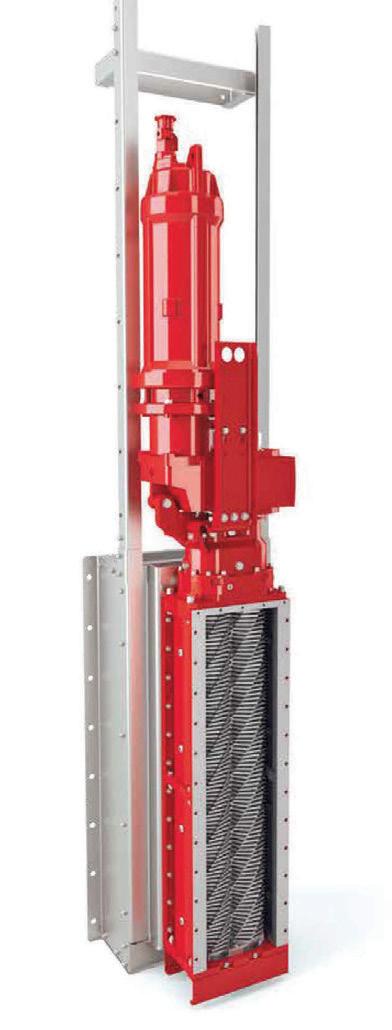
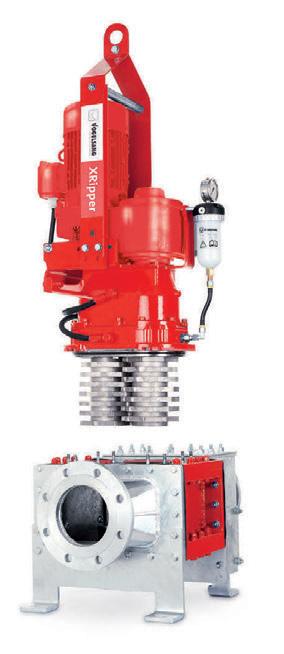
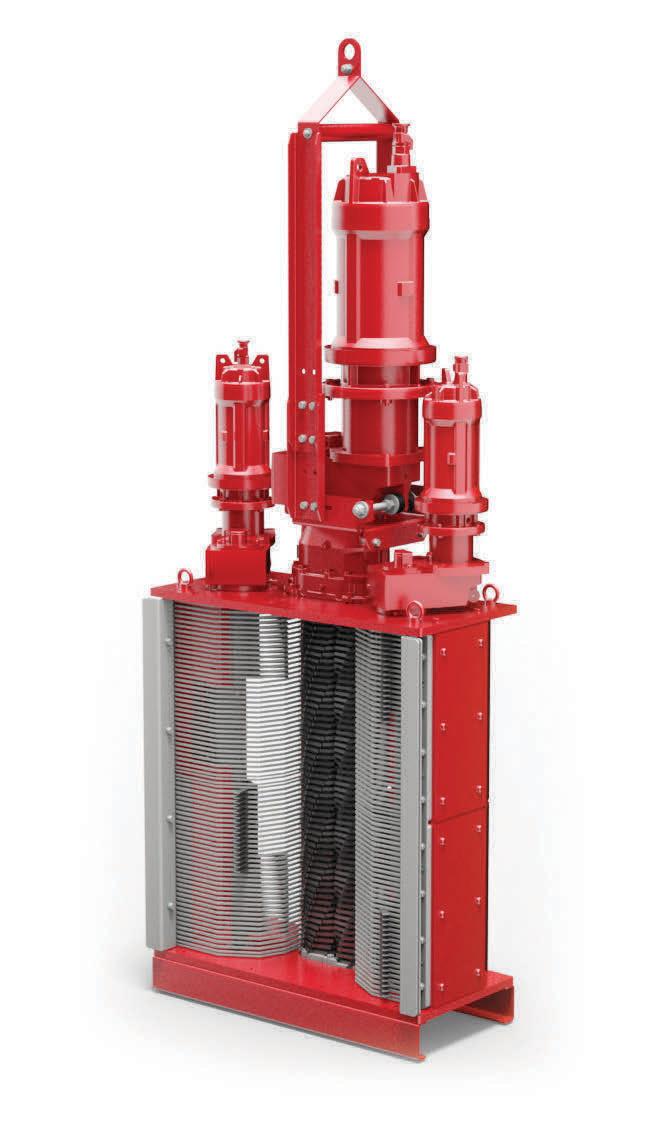


By ES&E Staff
Researchers at Worcester Polytechnic Institute (WPI) in Massachusetts have developed a new process to remove PFAS from wastewater while generating renewable fuel and potentially reducing carbon emissions.
Led by chemical engineering professor Michael Timko, the team enhanced hydrothermal liquefaction (HTL) technology to create radical initiated hydrothermal liquefaction (RI-HTL). This process heats sewage sludge in a reactor, breaking down PFAS using hydrogen peroxide. It ultimately generates solid waste, processed water, gas, and biocrude oil, the research team explained.
Initial tests showed RI-HTL removed 99% of PFAS from processed water, 98% from solid waste, and 89% from oil. The method also increases biocrude yield to 60%, compared to 40% from traditional HTL, and eliminates the need for energy-intensive drying and incineration.
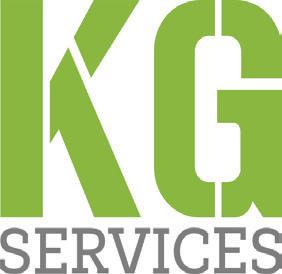

“There isn’t going to be a one-shot solution to the PFAS problem. There will be many different solutions in different areas,” announced Timko in a statement from WPI. “We think we have a sweet spot with a technology that could benefit wastewater treatment. It has very complex and rich chemical engineering science behind it that I hope to further understand through testing, so we can help reverse some of the damage PFAS have been silently causing for decades.”
With growing regulatory pressure to curb PFAS pollution, WPI’s innovation offers a sustainable solution for wastewater treatment facilities. To commercialize the technology, Timko co-founded River Otter Renewables in 2023. The company, supported by Environmental Protection Agency funding, aims to scale up RI-HTL, optimize sludge processing, and explore additional catalysts.
For more information, email: editor@esemag.com
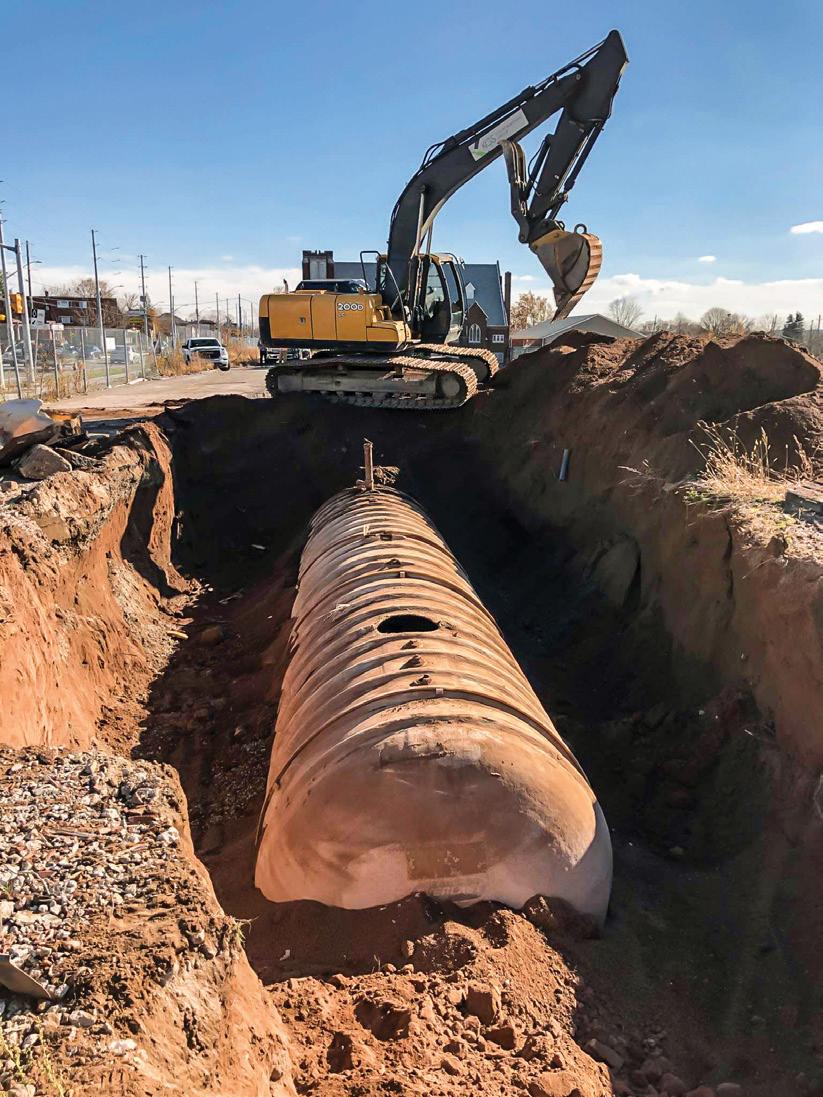
continued from page 50
agronomists, chemists, veterinarians, municipal officials, and industry experts.
Under the new changes, Quebec will also maintain its temporary moratorium on biosolids imports from the U.S., currently set to expire in November 2028.
More than a dozen communities within the Val-Saint-François regional county municipalities (MRC) had hoped to delay the release of the provincial FRM Management Code, particularly as concerns about PFAS contamination continue to dominate the regulatory and media spotlight. MRC officials argued that the two-month consultation period over the summer of 2024 was inadequate, as it went largely unnoticed by citizens and media. They contend that the process did not allow communities enough time to thoroughly analyze the ministry’s proposed changes.
“In light of the initial analyses of the proposed changes, the MRC remains concerned about the proposed changes to the Fertilizing Residual Materials Management Code and is not reassured about the future health of Quebec agricultural soils,” MRC officials stated in a council resolution to the ministry in December 2024.
Additionally, a December 2024 study by researchers at the University of Montreal highlighted the widespread presence of PFAS in biosolids across Quebec, underscoring the urgency of regulatory limits to prevent contamination of agricultural soils and crops. The study examined 80 PFAS compounds in commercial composts, sewage sludge and resulting biosolids generated from wastewater treatment plants across the province to ascertain the loads of PFAS that could be transferred to agricultural lands through biosolid and compost applications.
The study found that it was “crucial to consider establishing regulatory limits” for PFAS, which are present at detectable levels in all biosolids samples and “have the potential to contaminate agricultural soils and crops.”
David Nesseth is with ES&E Magazine. Email: david@esemag.com
Denver, CO, USA | June 8–11, 2025
JOIN US for AWWA’s 2025 Annual Conference & Exposition (ACE25) and be part of the journey to ensure clean, safe water for all. This year’s conference will focus on innovative solutions, elevated standards, and collaborative efforts shaping the future of water.
Let’s come together to learn, connect, and inspire change. Don’t miss this opportunity to network with water professionals from around the globe and discover the latest advancements driving our industry forward.

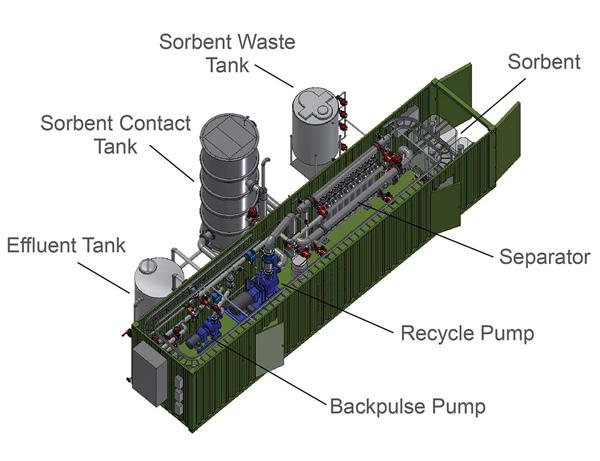
Aqua-Aerobic Systems, Inc. has introduced the first in a line of PFAS Solutions, the AquaPRS™ PFAS Removal System. It utilizes a unique sorbent suspension to adsorb per- and polyfluoroalkyl substances (PFAS) and a robust separator to produce clean water from the suspension. The suspended adsorbent slurry prevents biofouling and controls solids and mineral buildup. Represented by ACG-Envirocan
T: 905-856-1414
E: sales@acg-envirocan.ca
W: www.acg-envirocan.ca
Aqua-Aerobic Systems, Inc.
T: 815-654-2501
F: 815-654-2508
E: solutions@aqua-aerobic.com
W: www.aqua-aerobic.com
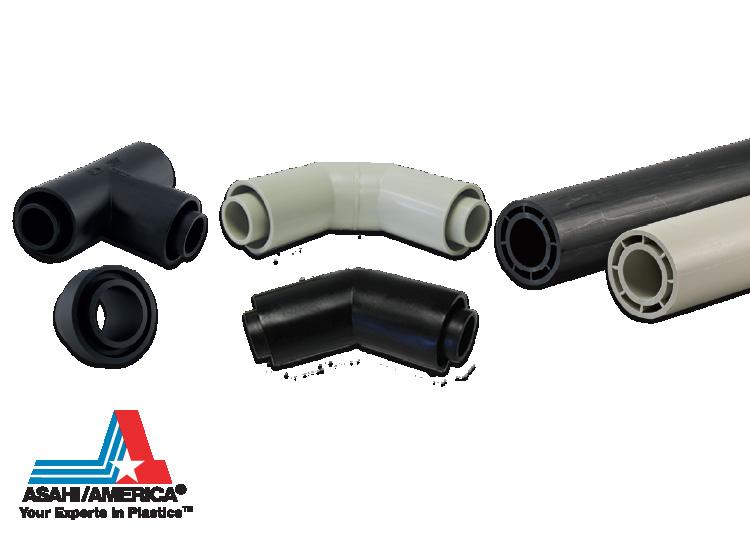
Asahi/America’s Series 19 electric actuators offer multi-voltage capability, visual position indicators, LED lights, auxiliary contacts, and QR codes for user manuals. With a corrosion-resistant NEMA 4X resin enclosure and stainless steel trim, they protect the brushless DC motor and steel gear train. Available in various configurations, ensuring reliable, precise control.
Asahi/America
T: 800-343-3618
F: 800-787-6861
E: asahi@asahi-america.com
W: www.asahi-america.com
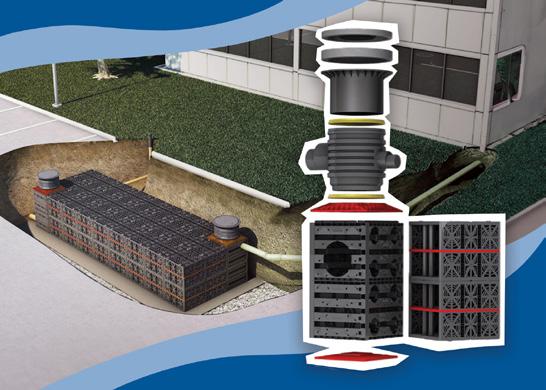
Wondering how to maintain or clean modular stormwater detention tanks? Discover the Vario 800 flex shaft system, offering easy maintenance access for long-term functionality. It efficiently manages stormwater, reduces flood risks, controls soil erosion, and conserves water. Its adaptable design complies with HS-20 ratings and allows for flexible installation in diverse conditions.
BARR Plastics Inc.
T: 1-800-665-4499
E: info@barrplastics.com
W: www.barrplastics.com

The CHEM-FEED engineered skid system is ideal for small spaces with a condensed design. The skid is constructed of strong and lightweight chemical and UV-resistant polyethylene. It is shipped fully assembled and features leak-free threadless connections and built-in fluid containment tray. Available in one and two pump configurations.
Blue-White Industries
T: 714-893-8529
E: info@blue-white.com
W: www.blue-white.com

CHEM-FEED MD3 technology will help mitigate problems and ensure smooth, accurate, and dependable chemical dosing. The MD3 is equipped with our exclusive Dual Diaphragm Hyperdrive Technology for smooth, near continuous feed, like a peristaltic pump, but with no tube to change. It is outfitted with DiaFlex® Diaphragms, which are designed to last the life of the pump.
Blue-White Industries
T: 714-893-8529
E: info@blue-white.com
W: www.blue-white.com
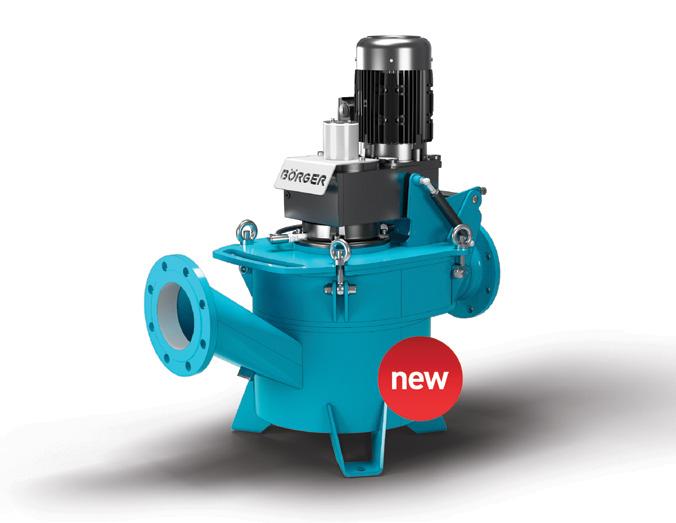
Introducing the OrbitGrinder, a compact, powerful cutting basket macerator with our Constant Cutting System for consistent maceration results. Customizable components and adjustable perforations allow tailored performance. Designed for Maintenance In Place (MIP®) and energy efficiency, the OrbitGrinder ensures optimal solids management, reducing downtime and operational costs. Ideal for any operation requiring precise maceration.
Boerger, LLC
T: 612-435-7300
E: america@boerger.com
W: www.boerger.com

Chemline’s YD Series True Union Y Sediment Strainers are safety filtration devices designed to entrap occasional solid impurities. This protects equipment with small orifices and prevents damage to pumps or control valves. With a large filtering area, more sediment can be trapped. Available in clear PVC or opaque CPVC, with replaceable filter screens in a choice of meshes in polypropylene or stainless steel.
Chemline Plastics
T: 800-930-CHEM (2436)
F: 905-889-8553
E: request@chemline.com
W: www.chemline.com
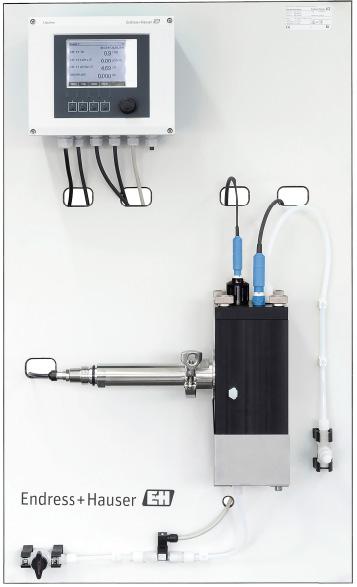
Ready-to-use panel bundle for measurement of the most important drinking water parameters: pH, conductivity, turbidity and free chlorine. Easy installation, robust performance, and seamless integration with your existing systems. Enhance your process efficiency and data accuracy today!
Endress+Hauser Canada
T: 905-681-9292
W: www.ca.endress.com

The SpillSafe LX™ Drum Scale from Force Flow accurately monitors amount of chemical used, remaining, and provides protection against uncontained chemical spills. An automatic deploying spill bladder keeps overall platform height to a minimum for easy drum change-out while still allowing up to 250 litres of spill containment. The SpillSafe LX helps you comply with Environmental Canada spill containment requirements.
Force Flow
T: 925-893-6723
F: 925-686-6713
E: info@forceflow.com
W: www.forceflowscales.com

SolarBee© Active Lake Circulators help control cyanobacteria (blue-green algae) in lakes, reservoirs, and ponds. Whether you manage a raw water drinking source or a recreational or stormwater pond, a key component for cyanobacteria control is to circulate the epilimnion, the upper layer of water. One solar powered circulator can treat up to 35 acres.
Greatario
T: 866-299-3009
E: info@greatario.com
W: www.greatario.com/services
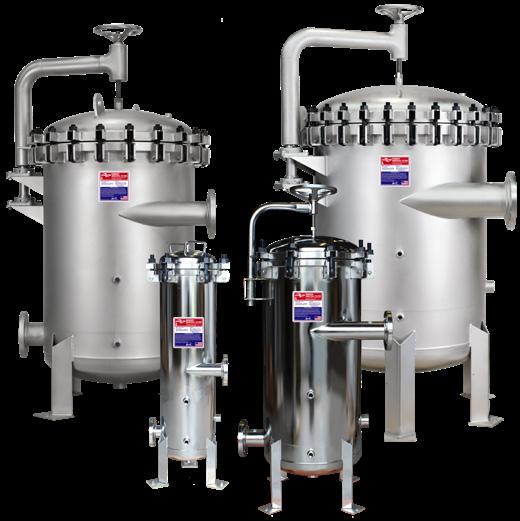
Harmsco® Hurricane® housings provide effective performance, with up to 20% in energy savings. Their patented design combines one unit with three technologies, cyclonic separation, upflow filtration, cartridge filtration, into one compact housing, with flow rates to 2,400 GPM. The outer chamber induces cyclonic separation of dense solids prior to up-flow cartridge filtration, resulting in extended cartridge life and increased dirt-holding capacity, fewer maintenance intervals, and reduced overall operating costs.
Harmsco Filtration Products
T: 800-327-3248
E: sales@harmsco.com
W: www.harmsco.com

Stop a chlorine leak within seconds of detection by automatically closing the ton container or cylinder valve. The actuator quickly mounts to valve without the use of any tools, and still allows the valve to be manually opened or closed. Halogen Valve Systems are the only systems that confirm that the valve was torqued closed to the institute recommended standard.
Halogen Valve Systems
P: 877-476-4222 or 949-261-5030
F: 949-261-5033
E: info@halogenvalve.com
W: www.halogenvalve.com

The new Stormceptor® EF is an oil grit separator (OGS)/hydrodynamic separator that effectively targets sediment (TSS), free oils, gross pollutants and other pollutants that attach to particles, such as nutrients and metals. The Stormceptor EF has been verified through the ISO 14034 Environmental Management – Environmental Technology Verification (ETV).
Imbrium Systems
T: 800-565-4801
E: info@imbriumsystems.com
W: www.imbriumsystems.com

Inspection and maintenance are fundamental to the long-term performance of any stormwater quality treatment device. The Stormceptor EF/EFO design makes inspections and maintenance an easy and inexpensive process conducted at grade. Once serviced, the Stormceptor EF/EFO is functionally restored as designed, with full pollutant capture capacity. Learn more at: www.imbriumsystems.com
Imbrium Systems
T: 800-565-4801
E: info@imbriumsystems.com
W: www.imbriumsystems.com
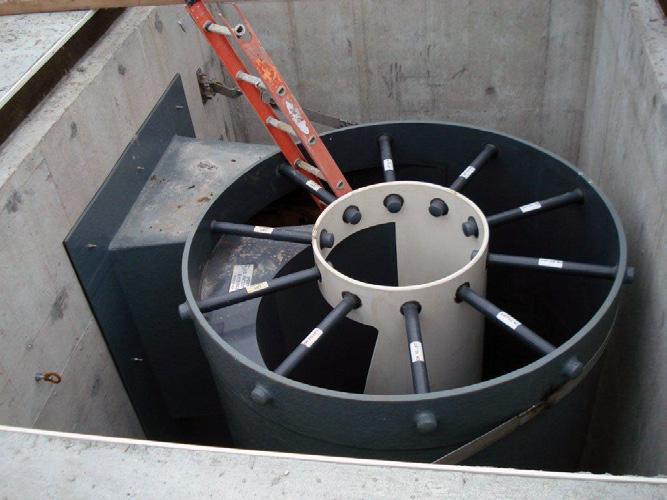
The IPEX Vortex Flow™ Insert (VFI) revolutionizes vertical sewer drops by eliminating odorous emissions and minimizing corrosion. With no moving parts and zero maintenance, VFIs offer significant cost savings for municipalities across North America.
IPEX
T: 866-473-9462
W: www.ipexna.com
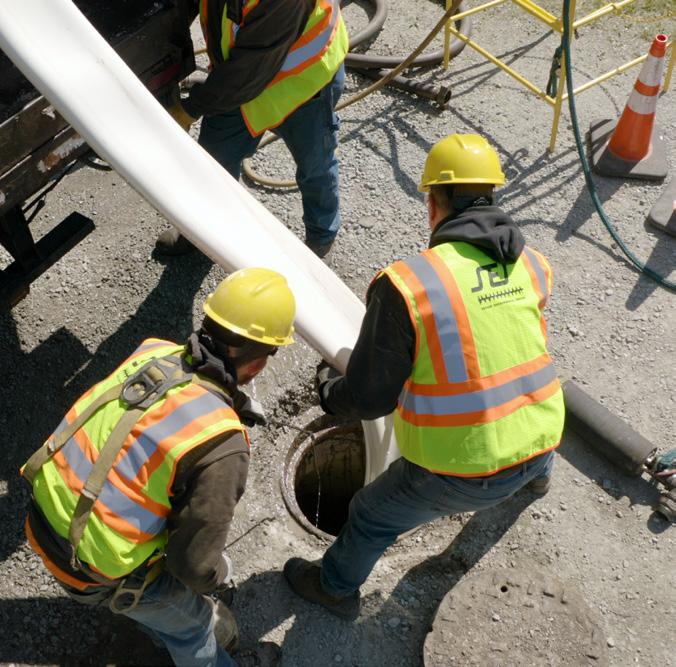
NovaForm™ offers a durable, cost-efficient solution for sewer and culvert rehabilitation. This styrene-free, expandin-place liner eliminates the need to capture and treat contaminated curing liquid. Made from engineered thermoplastic, it is installed using steam, with water as the only job site discharge.
IPEX
T: 866-473-9462
W: www.ipexna.com

Boost efficiency with OZ Lifting Products’ Facility Maintenance System. The Tele-Pro davit crane’s innovative telescoping boom delivers precise adjustments under load, and with multiple base and winch options, this system is fully customizable to your exact requirements. Tested to 125% capacity and made in the USA, it’s built to be a safe and reliable material handling solution for any facility.
OZ Lifting Products
T: 507-474-6250 / 800-749-1064
E: sales@ozliftingproducts.com
W: www.ozliftingproducts.com

HUBER, a proven German manufacturer, now provides watertight doors that allow safe access to tanks for construction and/ or maintenance. Doors can be provided as round or rectangular for installation onto existing concrete surfaces or cast-in-place in new concrete. They can handle heads up to 30 m and hold pressure in seating and unseating directions. HUBER’s watertight doors can greatly reduce construction and maintenance costs and dramatically improve safety/access.
Pro Aqua, Inc.
T: 647-923-8244
E: aron@proaquasales.com
W: www.proaquasales.com
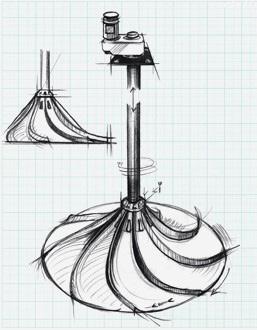
Invent Environment is the manufacturer of hyperboloid mixers which have revolutionized anoxic and swing zone mixing. Invent provides low-shear, efficient mixers with no submerged motors or gear boxes for easy access for maintenance. They have now released the Hyperclassic Mixer Evo 7 which has increased the number of motion fins and adjusted the geometry of the mixer to maximize mixer efficiency, reducing operation costs even further.
Pro Aqua, Inc.
T: 647-923-8244
E: aron@proaquasales.com
W: www.proaquasales.com

Smart Conveying Technology (SCT) revolutionizes maintenance with quick service, lower life cycle costs, and minimal downtime. Its maintain-inplace design also features an adjustable rotor/stator sealing line that effectively compensates for wear, more than doubling the lifespan of both components. Experience reliability and efficiency with this advanced technology — make the switch to SCT!
SEEPEX Inc.
T: 403-829-1924
E: norm.zombor@irco.com
W: www.seepex.com
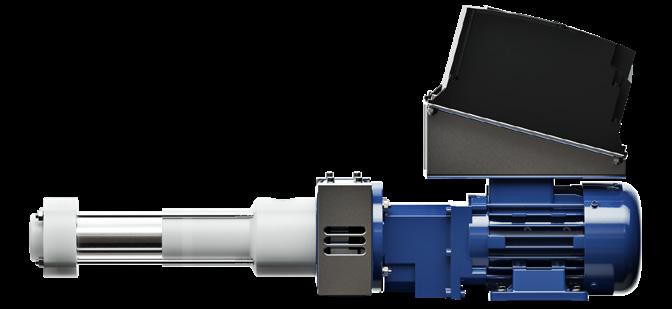
Complete process control begins with the pump, and the progressive cavity pump is a true game-changer. Its innovative design offers significant advantages over traditional chemical metering pumps, providing precise, repeatable, and pulsation-free dosing. The Intelligent Metering Pump (IMP) features an innovative design that combines a gearmotor and a programmable variable frequency drive, ensuring precise metering in a compact format.
SEEPEX Inc.
T: 403-829-1924
E: norm.zombor@irco.com
W: www.seepex.com

The AQUAFORCE® e-HVX/e-HVXR Packaged Booster System by Goulds Water Technology is a pre-engineered solution designed to enhance clean water pressure. Featuring e-SV vertical multistage pumps in two to four pump configurations, it delivers up to 780 GPM and 600 feet of head. Each pump is equipped with Xylem's Hydrovar® variable speed pump control, ensuring efficient operation and serviceability.
Summit Water
T: 519-843-4232
E: info@summitwater.ca
W: www.summitwater.ca

Vanton’s vertical thermoplastic sump pumps are engineered for the dependable handling of corrosive, abrasive, and ultra-pure process fluids, plant effluents and wastewater, over broad temperature and pH ranges. These rugged pumps are widely used by various manufacturing industries and water treatment facilities. They are available in polypropylene, PVC, CPVC, or PVDF. Every Vanton pump is performance tested to the specified service condition intended.
Vanton Pump & Equipment Corporation
T: 908-688-4216
F: 908-686-9314
E: mkt@vanton.com
W: www.vanton.com
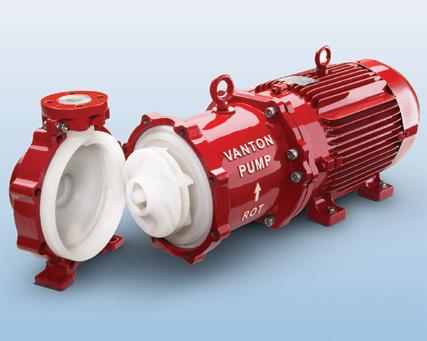
Vanton Chem-Gard CGM-ANSI magnetically driven end suction pumps are seal-less, single-stage process pumps which meet ANSI B73.1 specifications and conform to Hydraulic Institute Standards. All wet-end components are homogenous, injection-molded polypropylene (PP) and polyvinylidene fluoride (PVDF), eliminating metal-to-fluid contact, making them ideally suited for handling corrosive, hazardous and ultrapure fluids. Flows to 450 GPM, heads to 180 ft, and temperatures to 225°F.
Vanton Pump & Equipment Corporation
T: 908-688-4216
F: 908-686-9314
E: mkt@vanton.com
W: www.vanton.com
By Christina Rumbel
Water fluoridation has been a widely accepted public health measure for decades, helping to reduce tooth decay and improve oral health. However, the topic continues to be debated due to concerns over health effects, ethical considerations, and the need for accurate chemical monitoring.
Fluoride is a chemical ion formed when fluorine, a highly reactive element, bonds with another substance. Naturally present in soil, food, and water, fluoride has been scientifically proven to strengthen tooth enamel and prevent cavities. Bacteria in the mouth break down sugars into acids that weaken enamel, but fluoride helps to remineralize and harden it, reducing the risk of decay. This is why fluoride is commonly added to toothpaste and, in many communities, to drinking water.
Fluoride additives, whether in liquid or dry form, are almost always fed into the drinking water supply as a liquid. The method of fluoride delivery depends on the specific additive used. Fluorosilicic acid (FSA) is commonly introduced into the water supply via a metering pump.
Sodium fluoride (NaF) can be dissolved in a saturator to create a saturated solution, which is then fed into the water system using a metering pump. For unsaturated solutions of sodium fluoride or sodium fluorosilicate (NaFS), dry feeders measure the additive either volumetrically or by weight before mixing it in a tank and introducing it into the water stream.
These controlled delivery methods ensure accurate fluoride dosing and safe water fluoridation practices.
Regardless of the feeding method used, it is critical to ensure accuracy and consistency in the delivery of fluoride to the water supply.
In Canada, fluoride levels are care-

fully regulated. A 2007 expert panel recommended an optimal level of 0.7 parts per million (ppm) to maximize benefits while minimizing risks. To ensure safe and effective water fluoridation, water treatment facilities must precisely monitor and control fluoride levels. The U.S. Centers for Disease Control and Prevention (CDC) emphasizes the need for precise chemical delivery, corrosion-resistant equipment, and robust safety measures for operators.
Force Flow ® provides specialized equipment to help municipalities accurately manage fluoride additives in water supplies. In accordance with the CDC’s emphasis on precise chemical delivery, Force Flow’s monitoring systems allow early warning of dangerously low or high feed rate conditions. This helps prevent hazardous under-or over-dosing of fluoride. Force Flow’s scale bases are designed to be resistant to chemicals, abrasion, impact and ultraviolet light degradation,
making them ideal for harsh corrosive environments.
Drum scales — Designed for 115to-210 litre drums, these corrosion-resistant platforms provide an accurate weight-based approach for measuring fluoride levels.
IBC tote bin scales — Ideal for fluoride storage, these scales allow for precise chemical tracking, ensuring compliance with regulations and preventing overfeeding or underfeeding.
Spill containment scales — Developed for both drums and tote bins, these scales help contain spills and enhance safety.
Day tanks — Recommended by CDC standards, day tanks limit fluoride solution storage to a safe one to three-day supply, reducing the risk of overfeeding.
Volumetric feeder scales — Designed for dry chemical feeders, these scales provide a reliable method for measuring




chemical feed rates and usage. The platforms are pre-drilled to match specific feeder models, simplifying installation and ensuring precise chemical tracking. They are compatible with digital indicators, offering accurate monitoring and data logging capabilities.
By integrating these advanced monitoring solutions, municipalities can effectively manage fluoride levels, ensuring both public health benefits and regulatory compliance.
Regulations require that water treatment facilities accurately measure chemical usage, including fluoride. According to the “Recommended Standards for Water Works,” provisions must be made for tracking chemical dosages, making scales and monitoring systems essential tools for compliance. The CDC emphasizes accurate and consistent fluoride delivery while minimizing operator exposure.
Accurate fluoride monitoring helps prevent over- and under-feeding. This ensures that fluoride remains at safe, optimal levels, reducing the risk of dental fluorosis or insufficient cavity prevention. It also helps water treatment plants optimize fluoride use and minimize excess purchasing.
Finally, it provides reliable data for regulatory compliance, crucial for meeting Health Canada’s strict water quality guidelines.
Christina Rumbel is with Force Flow. Email: christina@forceflow.com
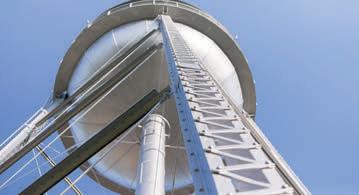
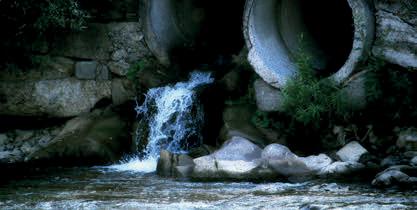








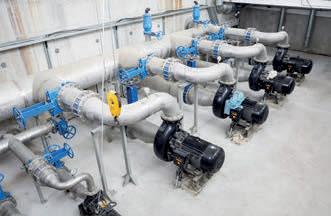






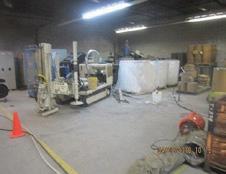

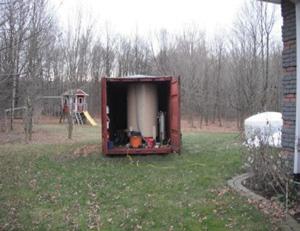
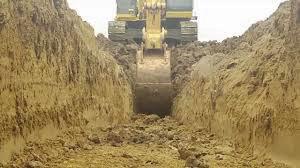

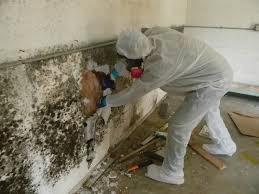

By Sarah B. Gewurtz, Alexandra S. Auyeung, Steven Teslic and Shirley Anne Smyth
Municipal wastewater treatment plants (WWTPs) are not designed to remove pharmaceuticals and personal care products (PPCPs) or other chemical substances. Therefore, WWTP effluent discharges and land application of treated biosolids are important pathways for PPCPs to the environment.
Previous research has shown incomplete and highly variable removal efficiencies of PPCPs between chemicals and WWTPs. Wastewater influent can provide information on community usage of PPCPs, whereas effluent and biosolids provide information on PPCPs being released to the environment
Using the results of Environment and Climate Change Canada’s (ECCC) wastewater monitoring program, we evaluated trends of 135 PPCP concentrations in seven representative Canadian WWTPs in 2022, assessed changes during treatment, and evaluated time trends in influent, effluent, and biosolids between 201013 and 2022. The PPCPs were chemically analyzed by SGS AXYS Analytical Services Limited (SGS AXYS) using a method based on U.S. EPA Method 1694. The results were published in Environmental Science and Pollution Research
PPCP CONCENTRATIONS IN INFLUENT, EFFLUENT AND BIOSOLIDS
The PPCP with the highest concentrations in influent was metformin (Figure 1). It is an antidiabetic widely used in Canada and throughout the world. Four PPCPs in the analgesic/anti-inflammatories category were also present at relatively high concentrations in Canadian wastewater: acetaminophen, ibuprofen and its metabolite 2-hydroxy-ibuprofen, and naproxen.
These substances are easily accessible
Figure 1: Influent concentrations of PPCPs with the 10 highest median values of those measured in this study in 2022. The data points used in this figure represent the median PPCP concentration measured on three consecutive days at each WWTP and sampling event. The line within the boxes shows median concentrations, the boxes show 25th and 75th percentiles, and the whiskers below and above the boxes show 10th and 90th percentiles. Dots show individual data points. Red dots show detected concentrations and grey dots show concentrations below detection and plotted at the detection limit.
Figure 2: Biosolids concentrations of PPCPs with the 10 highest median values of those measured in this study in 2022. The data points used in this figure represent the median PPCP concentration measured on three consecutive days at each WWTP and sampling event. The line within the boxes indicates median concentrations, the boxes show 25th and 75th percentiles, and the whiskers below and above the boxes show 10th and 90th percentiles. Dots show individual data points. Red dots show detected concentrations and grey dots show concentrations below detection and plotted at the detection limit. The dot representing the maximum concentration of ciprofloxacin of 5,900 ng/g dry weight is not shown.
without a prescription and widely used. The concentrations of caffeine and its metabolite (1,7−dimethylxanthine) were also relatively elevated, which is not surprising considering the popularity of coffee and other caffeine-containing food and beverages.
Theophylline was present at similar concentrations as caffeine. Theophylline is a bronchodilator and is used to treat chronic obstructive pulmonary disease and asthma. Theophylline is also a minor metabolite of caffeine. N,N-diethyl-m-toluamide (DEET), an insect repellent, and iopamidol, which is used as a contrast media for x-rays, were also present at relatively high concentrations in wastewater influents.
The PPCPs dominant in biosolids were different than those found in wastewater and were characterized by their greater sorption to solids (Figure 2). PPCPs with the highest concentrations in biosolids included ciprofloxacin, ofloxacin, and moxifloxacin, which are fluoroquinolone antibiotics used to treat bacterial infections (Figure 2).
Sertraline and citalopram, which are frequently prescribed antidepressants in the selective serotonin reuptake inhibitors family (SSRIs), were also present at high concentrations. Other dominant PPCPs found in biosolids included triclosan, a commonly used preservative and chemical microbial agent that was subjected to risk management activities in 2020; diphenhydramine, an antihistamine that is available without a prescription; doxycycline, a broad-spectrum antibiotic of the tetracycline class; clotrimazole, an antifungal medication that is commonly available without a prescription; and amitriptyline, an antidepressant that is also used off-label to treat chronic pain, anxiety, and insomnia.

Figure 3: Comparison of the concentrations of six representative PPCPs in influent between 2010-13 and 2022 illustrating changes between the two time periods. The data points used in this figure represent the median PPCP concentration measured on three consecutive days at each WWTP and sampling event. The line within the boxes shows median concentrations, the boxes show 25th and 75th percentiles, and the whiskers below and above the boxes show 10th and 90th percentiles. Dots show individual data points. Red dots show detected concentrations and grey dots show concentrations below detection and plotted at the detection limit. Shaded rectangles indicate significant increases (pink) or decreases (blue) in PPCP concentrations between the two time periods. Note the log scale.
a result of PPCP biotransformation and greater hydraulic retention time.
Changes in PPCP concentrations between 2010-13 and 2022 were assessed to evaluate time trends in wastewater (Figure 3). A detailed analysis of the time trends of PPCPs in influent, effluent, and biosolids is available in our paper published in Environmental Science and Pollution Research. The concentrations of many PPCPs did not change consistently over time. For example, concentrations of overthe-counter pharmaceuticals including analgesic/anti-inflammatories (i.e., acetaminophen, ibuprofen and its metabolite 2-hydroxy-ibuprofen, and naproxen), as well as the antihistamine, diphenhydramine, did not change significantly with time in wastewater matrices.
chemicals was likely because they are easily accessible and popular for treating common ailments. Cotinine is a metabolite of nicotine. Although there has been a reduction in smoking in Canada since 2010, our data indicate no changes in cotinine concentrations in wastewater between 2010-13 and 2022. This could be due to increased use of non-tobacco nicotine products (vaping, nicotine replacement therapies, etc.).
Metformin is an example of a PPCP that increased in wastewater matrices over time. The rate of diagnosed diabetes is increasing in Canada and in 2008, the Canadian Diabetes Association (CDA) recommended metformin as the initiating treatment for patients newly diagnosed with type 2 diabetes due to lower incidence of side effects and its relatively cheap cost compared to other medications.
Concentrations of sertraline and theophylline also increased in wastewater
For many PPCPs, higher removal was observed at plants that use biological treatment (lagoons, secondary and advanced treatment) compared to primary physical/chemical treatment. The greater PPCP removal in lagoons, secondary, and advanced treatment plants compared to primary WWTPs was likely continued overleaf…
The lack of time change for these
listed in
Register your company at esemag.com/get-listed

Municipal wastewater treatment plants are not designed to remove pharmaceuticals and personal care products. Credit: Rob Byron, stock.adboe.com
over time. The Canadian Paediatric Society indicated sertraline as a second line of treatment for depression and there has been a shift towards prescribing sertraline to children and adolescents. It was also shown to exhibit antiviral activity against SARS-CoV-2 and to alleviate symptoms associated with infection.
Theophylline is a respiratory medication that was found to be an effective treatment for the symptoms of the SARSCoV-2 virus. Therefore, it is possible that concentration increases of sertraline and theophylline in Canadian wastewater are associated with the COVID-19 pandemic. Additional data between 2013 and 2020 would strengthen this hypothesis.
Concentrations of many of the antibiotics included in this study decreased in Canadian wastewater matrices between 2010-13 and 2022. These decreases could be due to greater awareness of antimicrobial resistance and efforts to reduce antibiotic use.
Triclosan concentrations decreased significantly between 2010-13 and 2022 in wastewater media. It had the third highest median concentration in biosolids of all the PPCPs analyzed in this study but was subjected to risk management activities in 2020.
The time trends of PPCPs in wastewa-
ter matrices between 2010-13 and 2022 varied and may have been influenced by factors such as risk management measures, warnings, development of new pharmaceuticals, and the COVID-19 pandemic. In Canada, there is limited information on PPCP use in the community and release into the environment. Our wastewater data reflect the limited information available and therefore continued periodic monitoring of PPCPs in wastewater matrices is recommended to fill data gaps.
© Crown 2025. This study was published under a Creative Commons license, is open access, and is available at: https:// doi.org/10.1007/s11356-025-36007-0. The data used in this study are available at: https://data-donnees.az.ec.gc.ca/data/ substances/monitor/chemicals-management-plan-wastewater-monitoring-program/?lang=en.
Sarah B. Gewurtz, Steven Teslic, and Shirley Anne Smyth are with Environment and Climate Change Canada. Alexandra S. Auyeung was with Environment and Climate Change Canada at the time the work was completed and is now at the University of Toronto. For more information, email: shirleyanne.smyth@ec.gc.ca


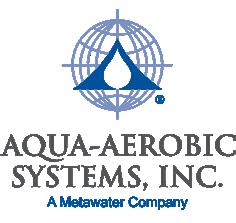


PRIMARY TREATMENT
• Complete line of fine screening equipment
• Self-cleaning perforated plate screens
• FlexRake® front-raked fine screens
• FlexRake® front-raked bar screens
• FlexRake® Low Flow
• Self-Cleaning trashracks
• Muffin Monster® grinder (for sludge, scum, septage, screenings & wastewater)
• Channel Monster® grinder for pump stations and sewage treatment plant headworks
• Honey Monster® septage receiving station
• Auger Monster® fine screen system
• Monster® fine screen & band screen perforated plate fine screens with 2, 3 & 6mm perforations
• Screenings washer/compactors
• Rotating drum screens (down to 2mm perfs)
• Raptor screenings washer press
• Grit removal
• Rotary drum screens
SECONDARY TREATMENT
• AquaNereda® Activated Granular Sludge Technology
• Aqua-Jet® direct drive floating aerator
• Aqua DDM mechanical floating mixer
• Fine bubble aeration systems using membrane or ceramic diffusers with gas cleaning systems
• Stainless steel coarse bubble aeration systems
• Multi stage activated biological process (MSABP)
• Two & three rotary lobe P/D blowers
• Centrifugal multistage blowers



• Hybrid screw/lobe compressors
• Floating diversion curtains (for aerated lagoons, activated sludge systems & clear wells)
• Subsurface jet aeration/mixing systems
• Spiraflo & Spiravac peripheral feed clarifiers
• Closed loop reactor oxidation ditch systems
• Rotary brush aerators
• High efficiency single stage integrally geared blowers
• Direct drive turbo type blowers
• Aeration system controls & instrumentation
• Chain & flight clarifier systems & components (plastic, cast iron or stainless steel)
• Half bridge, centre feed, circular clarifiers
• Spiral blade clarifiers
• Lagoon aeration & mixing systems
TERTIARY TREATMENT
• AquaDisk® - cloth media tertiary filter
• AquaDiamond® tertiary cloth media for traveling bridge filters
• Filter Underdrain Systems
HIGH EFFICIENCY MIXING TECHNOLOGY
• High Performance Centrifugal Dispersing Impeller (HPCDI™) mixers
BULK MATERIAL HANDLING
• Shaftless & shafted screw conveyors
• Screw pumps (open & closed designs)
• Industrial grinders
ADVANCED LAGOON TREATMENT TECHNOLOGIES
• Ares™ Wastewater Lagoon Aeration
• NitrOx® Cold Weather Lagoon Ammonia Removal
• LRAS™ Advanced Lagoon Treatment
• PhosBox Lagoon Phosphorus Removals
TANK COVERS & DOMES
• Aluminum geodesic domes
• Flat aluminum and FRP tank covers
• Aluminum channel and launder covers
• Aluminum hatch covers
DISINFECTION
• Ozone disinfection systems
BIOSOLIDS PROCESSING/HANDLING
• Sludge storage bins & live bottom dischargers
• Rotary Drum Thickeners
• Gravity Belt Thickeners
• Belt filter presses & screw presses
• Centrifuges for thickening & dewatering
• Shaftless and Shafted Screw Conveyors
ODOUR CONTROL
• Biofilters
• Bioscrubbers
• Carbon adsorbers
• Chemical wet scrubbers
FLOWMETERS
• Open channel flow metering (portable & permanent); wireless data transmission
• Non-contact radar & submerged sensor area velocity flow metering (portable & permanent); wireless data transmission
• Insertion mag flow meters with wireless data transmission
• Data loggers with wireless data transmission
INDUSTRIAL WASTEWATER TREATMENT
• Industrial wastewater treatment systems
• Coalescing oil/water separators
• Inclined plate clarifiers
PACKAGE TREATMENT PLANTS
• Package potable water treatment plants
• Package sanitary wastewater treatment plants
• Package industrial wastewater treatment plants
• Package industrial process water treatment plants
WATER TREATMENT
• Reverse Osmosis, UF, & Nanofiltration Membrane Systems
• Filter Underdrain Systems
ADVANCED INDUSTRIAL STORMWATER
TREATMENT SYSTEMS
• Removal of free oil, TSS, metals, nutrients, BOD/COD, bacteria, toxic organics, floatable trash
COLLECTION SYSTEMS
• Acoustic assessment technology services
POTABLE WATER
• Leak detection technology and services
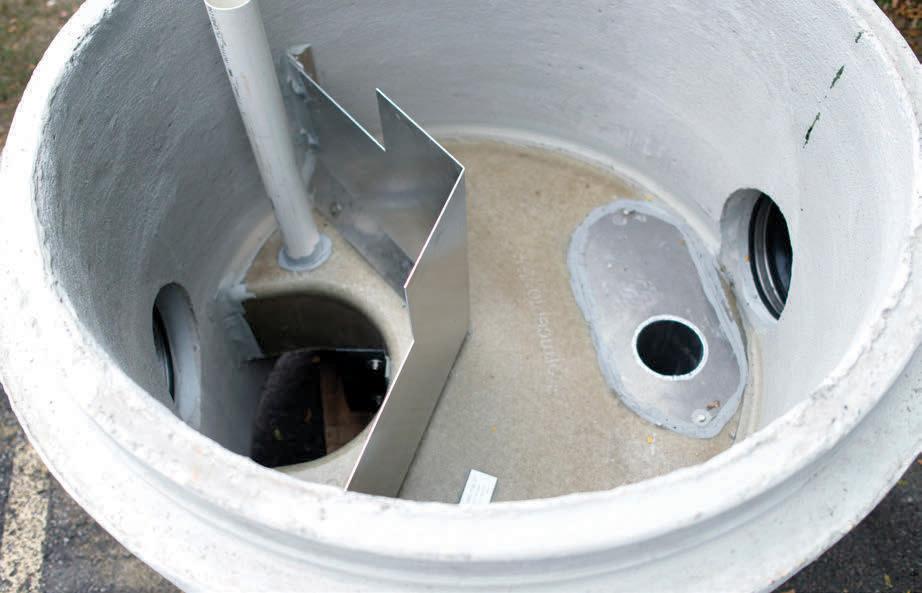
The most complete oil-grit separator on the market
• High flow sediment removal
• Scour prevention of collected sediment during high flow
• 99% oil/hydrocarbon retention during high flow
• Canada ISO 14034 Environmental Technology Verification (ETV)
PRODUCT RECOMMENDATIONS
SIZING & DESIGN ASSISTANCE
Imbrium® has been synonymous with stormwater treatment in Canada for decades. With the Stormceptor® EF oil-grit separator and the Jellyfish® Filter membrane filtration system, Imbrium® provides engineers and regulators options for all levels of stormwater treatment.

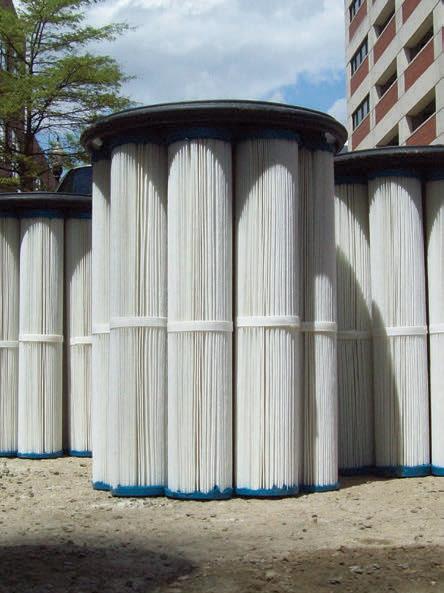
The highest level of sediment and nutrient removal using membrane filtration
• Removal of 90% TSS and 77% TP
• Low driving head of 457mm
• Lightweight, rinseable and reusable cartridges
• Canada ISO 14034 Environmental Technology Verification (ETV)



